- Travel to Spain

18 Best Tips & Tricks to Experience Madrid like a Local

Win a FREE Trip to Spain!
Exciting Announcement! For the first time, we're thrilled to offer exclusive trips to the heart of Spain - an experience like no other. This isn't your typical tourist journey; it's a unique opportunity to immerse yourself in authentic Spanish culture, alongside real locals and our passionate team.
But there's more! Simply by requesting information about this amazing trip, you'll be entered into a special draw to win a Fully Paid Trip to Spain for Two. And that's not all - everyone who inquires will receive an exclusive bonus gift, valued at $500, available only now.
Click Here ↑ to Request Information & Enter the Draw!
Passport, toothbrush, charger, money…wait…are you bringing a universal adapter to Madrid? Did you change your dollars for euros? No? Okay, you have got to go through this list of tips and tricks to know before visiting Madrid.
From Spanish words to travel adapters, I want you to be as ready as possible for your journey to Madrid so that you can enjoy one of my favorite cities in Spain.
Knowing the following 18 things I will list below will help you experience the city like a local and avoid making too many touristy mistakes.
It doesn’t hurt to double-check your packing and to-do list! So, let’s get to it!
Table of Contents ▼ ▶
1. Know your transport options from Madrid’s airport 🛫
Madrid’s airport, Adolfo Suárez Madrid-Barajas, is pretty close to the center, and there are plenty of ways to get you from the airplane to your accommodation in the city.
Private transport
- Taxi- Fixed fee of €30 to the city center.
Public transport
You can travel by train from the airport T4 to Madrid’s city center. The best lines are the C-1 (10 stops) and C-10 (20 stops), with stops in the main stations such as Chamartin, Nuevos Ministerios, Recoletos, Atocha, and Principe Pío.
Check if your hotel is close to one of the previous stations or if any of the stations connect to a metro line that will get you to your accomodation.
The prices range from €2,60 for a single ticket to €5,20 round trip.
- Bus - Exprés Aeropuerto
The bus from Madrid Barajas T4 to the city center has fewer stops than the train, but it may be more convenient for you. The Exprés Aeropuerto is a recognizable yellow bus from the airport terminal to Atocha, Plaza de Cibeles, and O’Donnell. It has a price of €5, and you can also pay with your credit card.
2. Consider buying public transport cards🚌
Although Madrid is a very walkable city, you will be exhausted by the end of the day. So, to avoid over 10 for a taxi or Uber ride, be prepared! Get a Madrid Tourist Travel Pass or a 10-journey pass for your trip; those will save you a lot of money!
In the article on tips to travel to Madrid on a budget and transportation in the city (linked below), we give recommendations on how to get around the city and get a public transport card.
If you want to experience the authentic madrileño lifestyle, you need to get a public transport card to get you anywhere.
Transportation advise in Madrid right here!
How to Get Around Madrid + 8 Tips I Wish Someone Told Me Experience Madrid on a Budget: 7 Money Tips on 2023 30 Best Things to do in Madrid: Fun Activities & Food!
3. Optimize your days by planning in advance🤓
Four days is the average time people stay in Madrid. Of course, you are more than welcome to stay as long as possible (there will always be things to do), but I am giving you the expected average to optimize your time in Europe.
Make a list of everything you will want to visit and organize what would be your optimal days.
Trick? Ask yourself, what type of traveler are you? How do you like to get to know a city? Do you prefer the red bus to walk or maybe take a private tour? Are you like me, that wants to make every minute count and doesn’t get back to the hotel until late at night, or are you more chill and would like to have a siesta after lunch?
Depending on the type of traveler you are, make a list of things you want to. For that, go to our articles on Madrid landmarks, things to do, markets, and museums to get a complete idea of your options.
Then, organize your day in three: morning, afternoon, and evening, and fill in the activities you want to do. I will leave you an example right here 👇with the articles to boost your brainstorming.
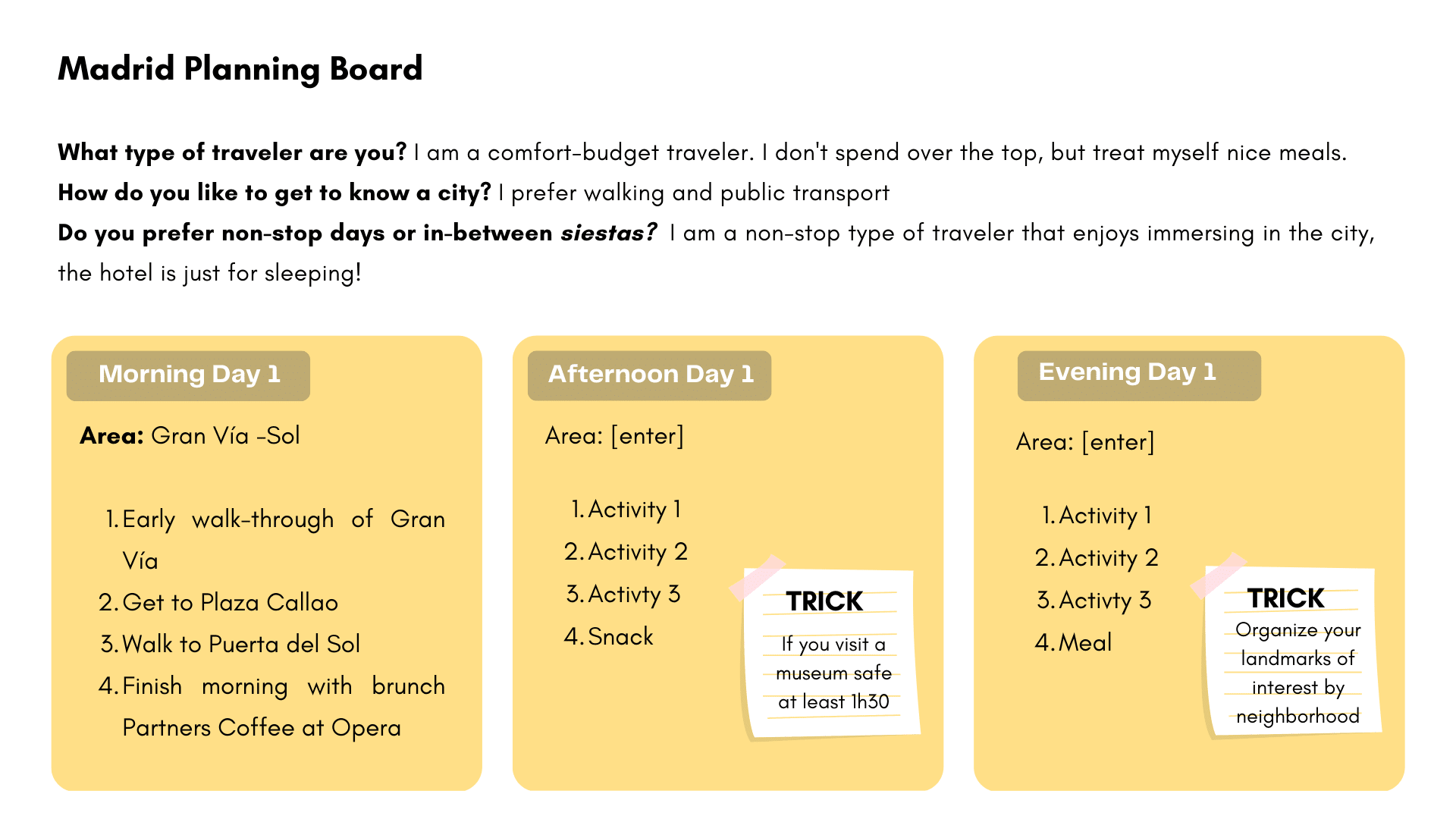
18 Best Landmarks in Madrid Totally Worth Visiting in 2023
12 Best Markets in Madrid to Explore Food and Crafts
4. Check the weather before traveling⛅
One of the things most people love about Spain is our weather. We are known for our Mediterranean lifestyle and beaches, but the truth is that the weather in Spain can vary a lot depending on the autonomous community.
And today, we are focusing on Madrid. Depending on the season you visit the Spanish capital, you must choose your clothes wisely. For example, you might have heard that Madrid is not as cold as Washington, D.C., but that doesn’t mean we don’t have -1 temperatures!
So, I will list the possible weather you may encounter in different months of the year:
- January, February, and March: Its the coldest time of the year, you might find a bit of rain, and the temperature goes from -2°C (28.4°F) to 16°C (59°F). So, it might not be New York in the winter, but it gets cold, and you should bring appropriate clothes.
- April, May, and June: This period may start with little rain and cloudy days, but as we go into summer, the weather starts getting warmer. I recommend asking the staff at your hotel or hostel for these months for their recommendation.
- July, August, and September: HOT. That is everything you need to know. Bring a lot of sunscreens because it is important to protect your skin. Madrid can reach temperatures of 40°C (104°F), come very light, and prepare to sweat!
- October, November, and December: October has nice temperatures, dropping from 30°C in September to 19°C (66°F) to 11 °C (51°F). It will be cooler if you come close to November and December, but not as much as January.
Here you can get more information of the weather in Madrid!
What’s the climate in Spain? Our Real Weather and Temperature
5. If you see a ‘Menú del día’ order it!🥘
Traveling on a budget or not, a ‘menú del día’ or menu of the day will always make your day.
Luch or ’la comida’ is Spain’s biggest and longest meal. It usually has three parts: first, second, and dessert, including a beverage and coffee. The average price of a menu of the day is around 12 - 15 euros, and I promise you will be satisfied for the rest of the day.
6. While in Madrid, open your mind (and your belly) to different meal times😴
Be prepared to eat at a different time than you do at home. Spaniards usually have five meal times, and no one messes with them.
So, keep an open mind for the different schedules you will find in Spain. For example, the first to meals of the day are breakfast and ‘almuerzo’ (second breakfast), which happen around 8:00 and 11:00, respectively.
Then comes lunch from 13:30 to 13:30 approximately . Just like we mentioned before is the biggest meal, and don’t be surprised if, after 16:00, restaurants are closed.
Try a siesta before the merienda, and you will feel rejuvenated!.
The last two meals of the day are the ‘merienda’ or afternoon and dinner . The ‘merienda’ happens around 17:00 to 18:30 ; it usually involves coffee, churros with chocolate, or any pastry. And, then, dinner happens from 21:00 to 23:00 , so expect the restaurant to re-open its doors as late as 20:00 for dinner.
7. Don’t eat at Plaza Mayor (I am serious!)⛔
Plaza Mayor is one of the most visited landmarks in Madrid; it is a five-minute walk from Puerta de Sol, and a characteristic feature of it is the multiple restaurants surrounding the wide plaza.
It looks tempting to sit there, but it may be a little sunny, and you want the afternoon warmth to hit you up. But, even as enticing as it looks to sit down in a restaurant of Plaza Mayor, just don’t do it.
Restaurants at this landmark are usually overpriced for the quality of the food. Instead, walk a bit more and try multiple tapas in Mercado San Miguel or take the metro to the Antón Martín market and try one of their delicious Asian stalls.
If you want a complete list of landmarks in Madrid and cool markets to eat at, check the following articles!
12 Best Markets in Madrid to Explore Food & Crafts
8. Learn some Spanish before traveling 🇪🇸
Madrid is a cosmopolitan and modern city whose citizens are used to English-speaking tourists. But the truth is that Spaniards are not very fluent in English, so your experience in the city would be way better and more comfortable if you practiced some basic Spanish before visiting.
I am not saying to need to get a course; that’s only if you want to master it! Instead, download Duolingo and learn some basic vocabulary to help you navigate the city better.
Some examples are:
Hello: ¡Hola!
Good morning: ¡Buenos días!
Good afternoon: ¡Buenas tardes!
How are you?: ¿Qué tal!
Where is (address)?: ¿Dónde esta (dirección)?
How much is this?: ¿Cuánto cuesta esto?
You get the idea!
9. If you are traveling on a budget, come in Madrid’s off-season❄️
Madrid is the most visited city in Spain, so you will always see tourists. However, as with any other city, there is a year when tourism slowdowns a bit, and its considered the city’s off-season.
Well, if you are dying to visit Madrid, come during its off-season, there are plenty of activities and accommodation in the city is more affordable than usual.
Are you planning to come any time soon?
Experience Madrid on a Budget: 7 Money Tips on 2023
10. book accommodation close to a metro line🚇.
It doesn’t matter if you are traveling on a budget or with enough resources to get around; you should always ensure that your hotel is close to a metro line.
Madrid’s metro is the best in the country, no doubt. It’s (almost always) clean, on time, and in order. In a city where beauty hiddes in its narrow streets, you will want to walk it all, and being close to a metro line will save you time and money.
11. Book trips and events in advance📅
What’s the best way to win time? Book activities in advance.
If you know where you want to go and visit, either a museum or a guided tour to Segovia, book it in advance. Buying specific stuff online will always be cheaper and time-saving than getting it done on the same day.
12. Don’t order a sangría , order a tinto de verano 🍹
I know it’s very common for people to tell you that you must try the sangría when you come to Spain. But, instead of drinking the typical touristy beverage, go for the local alternative: tinto de verano .
The tinto de verano is the favorite beverage across Spain, no kidding. The difference between sangría and tinto de verano is that the latter doesn’t have liquor or sugar.
The tinto de verano is easier to prepare as it is only red wine, soda, ice, and lemon. It’s easier to prepare, and it will always taste good, besides it is super refreshing for a summer afternoon in Madrid.
13. Know the difference between a tapa and a ración 🥨
The difference between a tapa and a ración is that the first is a sample of the second one.
So, a tapa is a traditional appetizer that you get in Spain when you order wine or caña (beer). The idea is that with a tapa, you can taste different things, and if you like, you can order a ración to share with friends.
The ración is a more generous dish that your order to share with your family or friends. If you solo travel and hit a bar, stick to tapas. But, if you are traveling with friends and family, order raciones to share, which will give you more variety and flavors for an excellent price.
14. Put your wallet and essential documentation where you can see it 👛
If you have to remember, three rules when traveling in Madrid or any other European city are:
- Don’t take your passports with you.
- Don’t put the wallet in the front pocket.
- Keep sight of your bags.
If your hotel has a safe box, write down the passwords and keep your passport in there until the end of your trip. For this, I recommend you to have a copy of your passport and go out with that.
No, you can’t leave the wallet at the hotel, but never put it in your pants’ back pockets or your bag’s first pocket.
Remember! Put your purse as close to you as possible if you have a secret compartment in your backpack that is the designated place for your money.
Finally, always keep sight of your belongings. If you sit on a terrace, don’t leave your bag hanging from the chair or the phone on the table. I will let you about an experience with my friend, who will call Daniela.
Daniela was having lunch at a bar in Chamberí, a very chill neighborhood. She had left her phone on the table, and a woman approached her, trying to sell some bracelets. The woman put the bracelet board on the table; Daniela said she wasn’t interested, and the seller left and took her phone with the board.
Lesson: Always keep your stuff with you!
15. There is no need to buy bottled water 🚰
Okay, there is no need for bottled water if you are not from another European countries. The truth is that I have had friends from Norway, Croatia, and the Netherlands that don’t like Spanish tap water. They constantly complained that the water in their countries was better, so they bought bottled water.
But tap water in Spain is fine, so bring a reusable bottle of water and fill it up at the hotel or hostel. It will save some ten euros daily.
Additionally, to reduce the use of single-use bottled water in catering and hotel establishments, the Spanish government made it mandatory for restaurants, hotels, and cafes to offer tap water for free.
So, next time you hit a restaurant, you say you want to water. The waitperson might offer you a bottle but insist on the tap water instead.
16. Plan day trips from Madrid🏰
Madrid is a stunning city, but the truth is that unless you visit every museum. Two to three days are enough to see it for the first time, especially if you are coming on a tight Eurotrip schedule.
But, if you are staying for longer, I recommend you to plan some day-trip cities you can go to close to Madrid.
- Alcalá de Henares
All of these cities are less than two hours away from Madrid. You can get there by interurban bus, train, or car.
Don’t be afraid of early mornings! Take an early bus or train, sightsee a new city and come back for dinner.
17. Get sunscreen to avoid burning🧴
If you visit the city from June to September, bring strong sunscreen. Every year the UV rays get more intense, causing a lot of harm to your skin. The problem is that the time of the year that Madrid is the most affordable is also the time of the year with a lot of heat.
Get a strong sunscreen and a portable fan to keep you up during the heat hours.
Another trick? Wake up very early! The morning is fresh, so be an early bird and visit the landmarks open 24/7. When the heat starts to get intense, maybe around 11:30 to 15:00, go to a museum, for brunch, for a nap, and continue the outdoor sightseeing at 16:00.
18. And, to finish, don’t forget the universal adaptor 🔌
I don’t know how often I have heard people say they forgot or didn’t know that the power plug sockets in Sapin were different.
In Spain, the power plug is called “Schuko,” with a power voltage of 230 V and a frequency is 50 Hz.
Don’t forget to lend or buy a universal adaptor for your devices, especially if you take all the pictures with your phone while also being in charge of Google Maps.
In case you do forget about it, no worries! Your main options to get a good one are Amazon, El Corte Inglés, or ask at your hotel reception.
I hope these tips and tricks help you get around Madrid like a local. Knowing things like the day’s menu, metro lines, or a few Spanish words will make your trip smoother and more enjoyable.
If you need any help organizing your trip, contact us! We are more than happy to help!
READ NEXT: Experience Madrid on a Budget: 7 Money Tips on 2023
Rating: No ratings yet. Leave a comment!

You might also like...
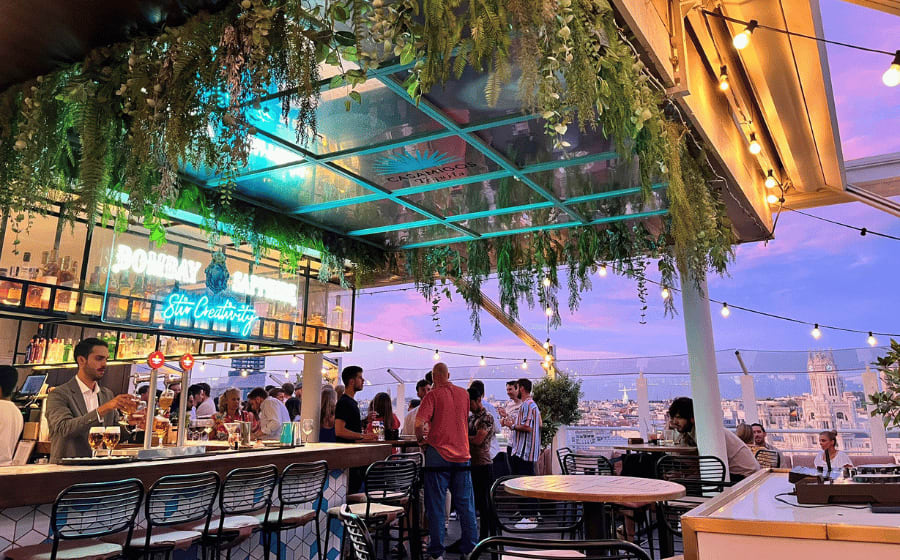
23 Iconic Bars in Madrid With the Best Drinks & Vibes
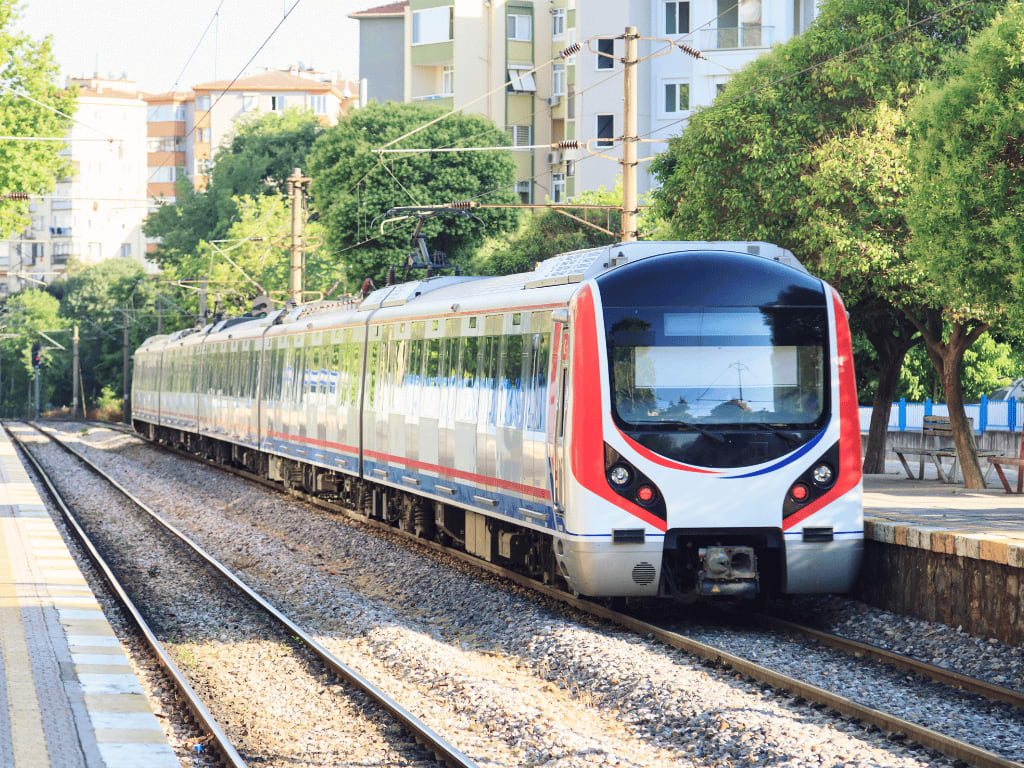
How to Get Around Madrid + 8 Tips I Wish Someone Told Me
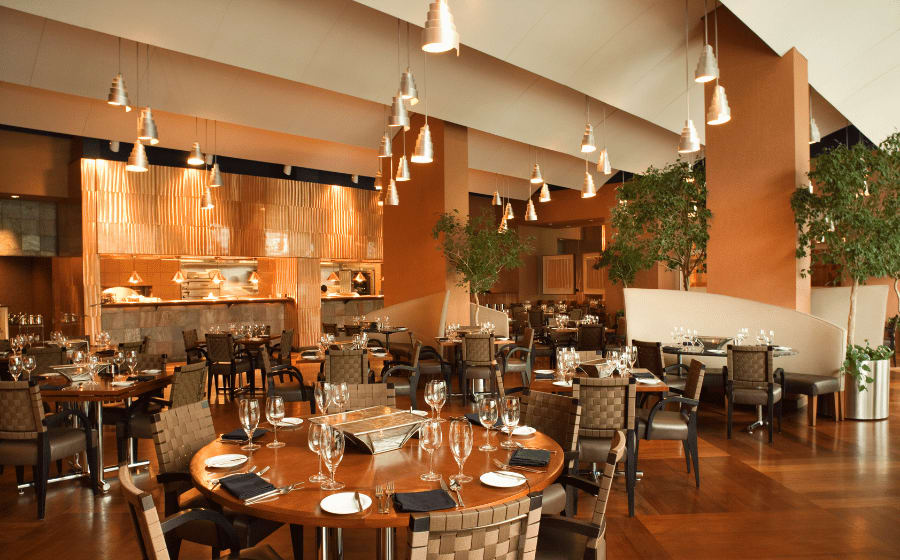
The 21 Best Restaurants in Madrid: A Food Lover's Guide!
Email address (optional), star rating (optional).
Be the first to comment!

Millions of people como to Spain every month! But many never get to experience the SENSATIONAL SPAIN!!
We're both born and raised Spaniards and our goal is to give you all the resources to plan a perfect trip to Spain.
Take a look! 👇
FYI! Some affiliate links may be sprinkled throughout the post. We'll receive a small commission when you purchase from our links (at no extra cost to you), which will help us keep creating content.
Join the waitlist
I'm about to release my City Guides for Madrid, Barcelona, Sevilla and Mallorca.
They're going to have everything you need to plan the perfect trip. From hotels and transport, to restaurants, attractions, activities, & a lot (A LOT!) of tips & tricks.
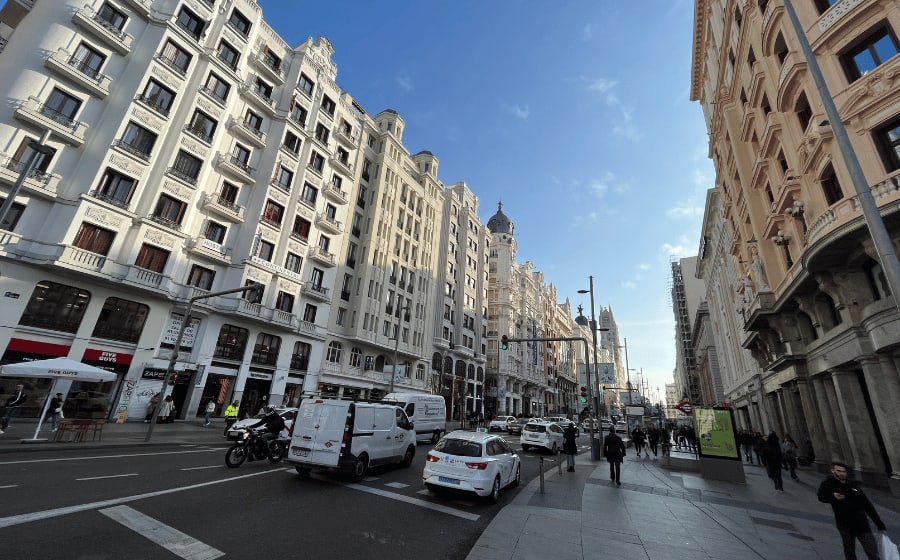
What do Spanish People Think of Americans?

What Song Are You Listening To? MADRID

What is the Best Show to Learn Spanish?

Things People Should NEVER do Dating in Spain

Can Foreigners Adapt To The Spanish Lifestyle?
- Meet the Team
- Work with Us
- Czech Republic
- Netherlands
- Switzerland
- Scandinavia
- Philippines
- South Korea
- New Zealand
- South Africa
- Budget Travel
- Work & Travel
- The Broke Backpacker Manifesto
- Travel Resources
- How to Travel on $10/day
Home » Europe » Spain » Madrid
Backpacking Madrid Travel Guide 2024
Grand tree-lined boulevards with flowers exploding with color from every branch. Green parks scattered with elaborate fountains and botanical wonders, booksellers, and tiny coffee shops. Museums packed with famous masterpieces. Bustling outdoor markets and an infinity of attractive bars and cafes to take an ice cold beer in the shade. You must be traveling in Madrid.
Madrid, the sunny capital of Spain is a mandatory stop off whether you are backpacking in Spain or visiting a wider swath of Europe. Being as that Madrid is the largest city in Spain figuring out the best things to do and where to stay can eat into your precious time.
On top of that sorting out how to travel to Madrid on a budget requires some more doing still.
Let’s face the facts: Traveling in Madrid or any other European capital is not as cheap as us budget backpackers would like. This Madrid travel guide gives you a detailed run-down of how to enjoy the city like a local without your wallet feeling like a matador that has just been gored by the bull.
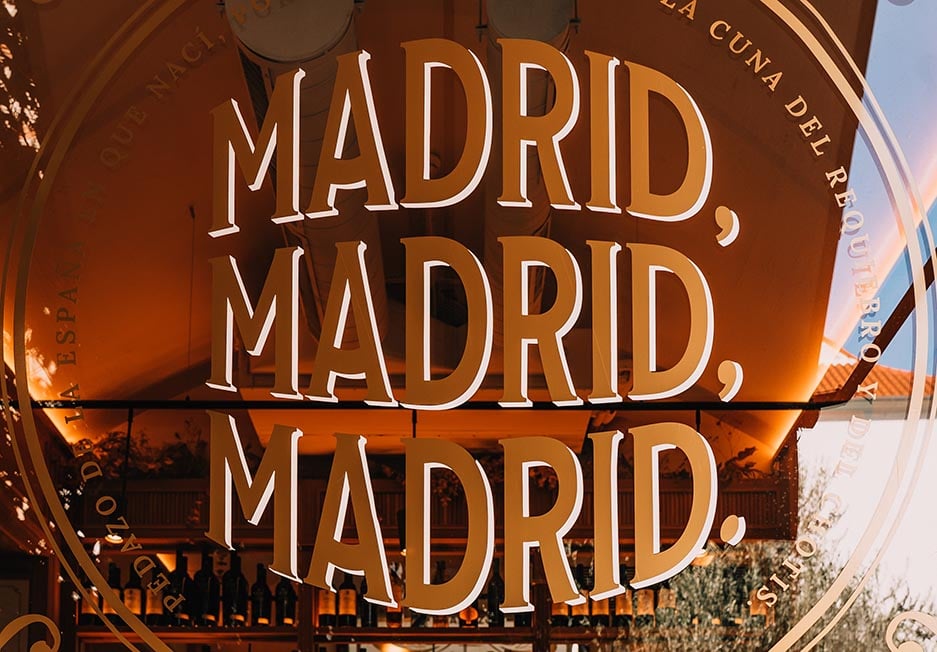
Get insights on backpacker accommodation in Madrid, suggested itineraries, your Madrid daily budget, awesome things to do in the city , cheap eats in Madrid, nightlife, and much much more.
Madrid is a fascinating city. In my opinion, traveling to Madrid is one of the best experiences backpackers can have in a European city. For travelers looking for a fine balance of culture, history, architectural beauty, culinary delights, and a pumping nightlife scene, look no further than the Spanish capital of Madrid!
How much does Backpacking Madrid cost?
Backpacker accommodation in madrid, top things to do in madrid, backpacking madrid 3 day itinerary, backpacking madrid travel tips and city guide.
First things first, in order to come to terms with what your time traveling in Madrid will look like, you need an accurate and clear picture of the costs involved. I found that backpacking Madrid on the cheap was slightly easier than other capitals in Europe. Don’t get me wrong, shit adds up quick if you’re not careful.
Certainly, it is possible to visit Madrid on as little as $20-30 bucks a day. For costs so low you would need to have some help. For example, Couchsurfing or staying with a local by some other means would be completely necessary in order for you to get by with so little cash.
I’ll be honest with you, Couchsurfing in any European capital has become so damned popular that you need to be blessed by a divine stroke of luck to land a host, especially in the summer. Always worth trying though!
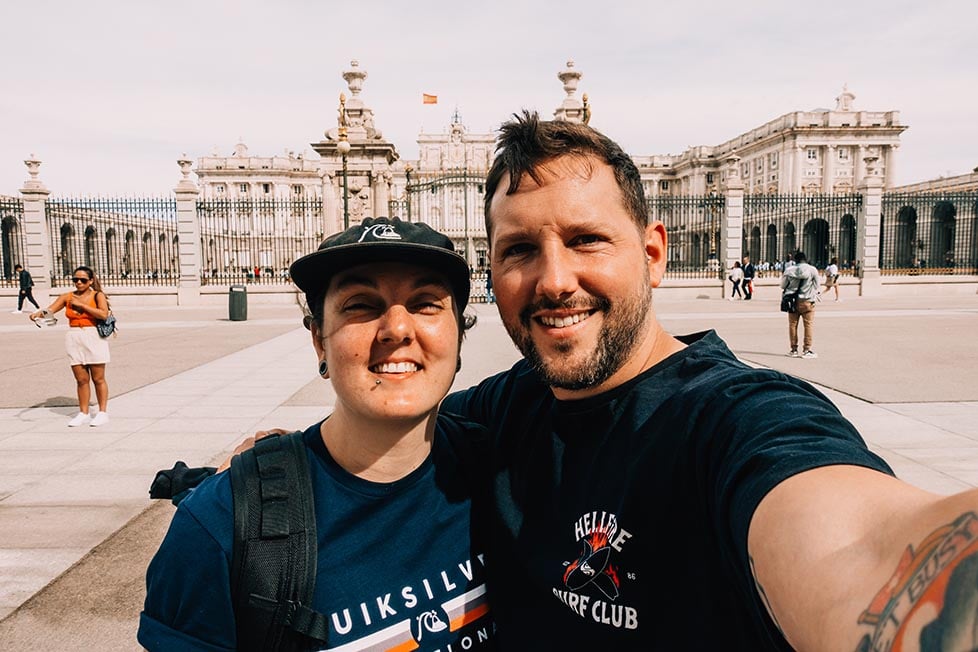
A realistic daily budget for Madrid is more like $45-75 a day.
With that budget, you can eat very well, visit museums, stay in a hostel, and grab a beer or two from one of the zillion bars in Madrid. If you go to a nice restaurant, get a private room somewhere, and go out for a big night, of course, you should expect to deal with the related expense.
On the contrary, if you Couchsurf and cook a bit for yourself, I have no doubt you could spend less than $20 . This is including taking the metro and buying a bottle of tasty Spanish wine.
Madrid Average Costs and Daily Budget:
Dorm bed in a hostel: $25-40
Small basic room for two: $75-110+
Airbnb in Madrid room in a shared/entire apartment : $25-65
10 Metro rides pass: $22
Bus travel card for 10 rides : $14.50
Average museum entrance fee: $12-18
Set lunch from a cafe: $10-15
Dinner in a restaurant: $20-30+
Hot chocolate and a massive churro: $6.50
Wine bottle from the supermarket: $4-6
Tapas plate : $2-7 per Tapa
Beer at the bar: $3-5
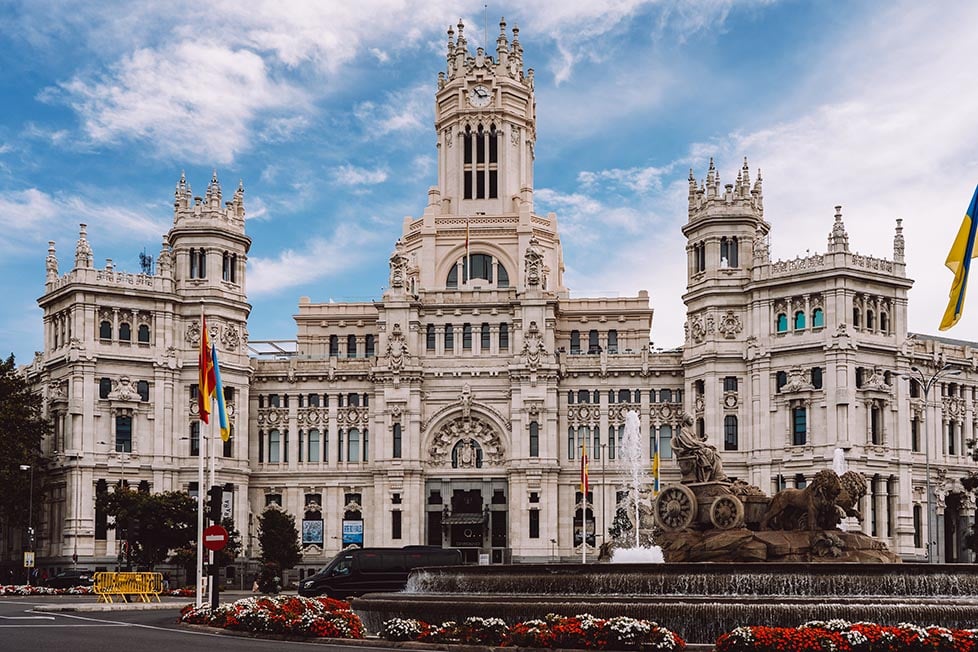
Madrid Budget Travel Tips
Whenever traveling in the pricier regions of the world it helps to have a few awesome travel hacks, tips, and tricks in your pocket. Backpacking Madrid on the cheap is no different. Whilst travel costs to Madrid can add up quickly, traveling here need not be overly expensive.
Budgeting in major European cities is as much as an art form as it is common sense. In the end, how you choose to spend your money falls squarely on your shoulders. Here are a few tips to keep in mind for your Madrid adventure…
- Discover the free attractions : Walking around The Buen Retiro is free. People watching and exploring beautiful outdoor markets are free. A visit to The Madrid Royal Palace is free. Point being, there is lots of cool stuff to get into in Madrid that won’t cost you a dime.
- Visit the amazing museums when they are free : It is possible to visit both the Museo de Reina Sofia and the Prado for free. Free times for Reina Sofia: Monday, Wednesday, Thursday, Friday, Saturday 7 p.m. to 9 p.m., Sundays 1:30 p.m. to 7 p.m. The museum is closed on Tuesdays. Free times for the Prado: Monday to Saturday 6 p.m. to 8 p.m. and Sundays and holidays from 5 p.m. to 7 p.m.
- Walk!: Madrid is a very accessible city to walk around in. You should only have to take the metro on occasion. The rest of the time you can hoof it!
- Drink wine in public spaces rather than bars : When the sun goes down and the city cools it is magic. Head to the Plaza Mayor or the Buen Retiro with a 3 Euro bottle of wine and some Spanish cheese for a budget happy hour with a view.
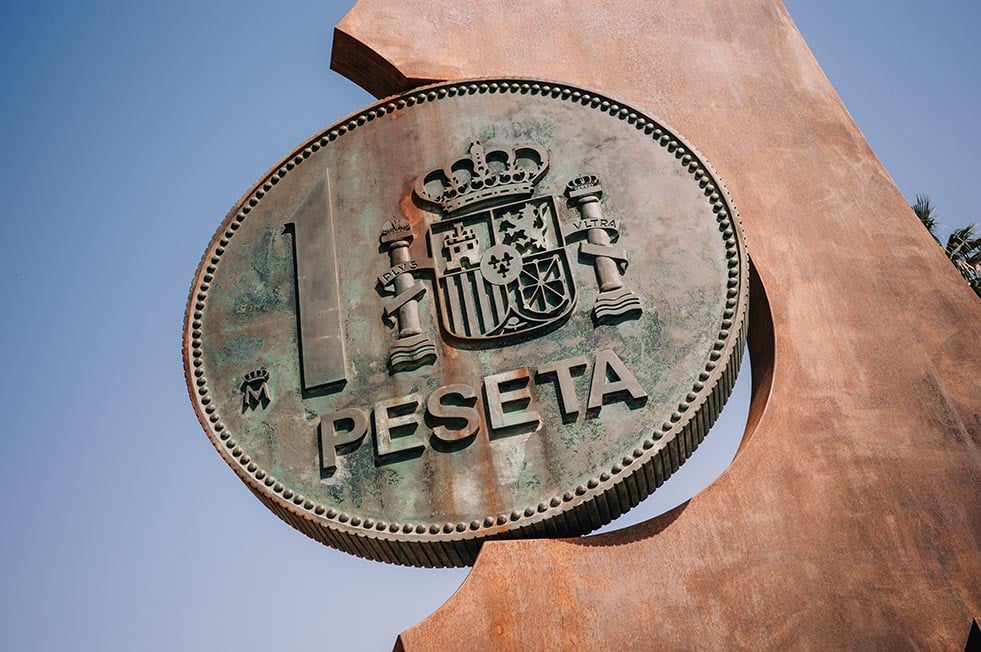
Madrid Travel Hacks
- Cook occasionally: Part of the charm of any city is getting to taste the food. I get that and I’m all about that too. However, if you plan to spend days exploring Madrid, you are going to have to cook a little if you want to save some money. Most hostels have excellent, well-equipped kitchens.
- Pack a travel water bottle: save money every day! It has always both amazed and disturbed me just how frequently people buy bottles of water while traveling. STOP! Plastic is killing the planet and costing you on average $5 extra a day at least. Pack a water bottle and refill it! If you don’t like the taste of city water, packing a water filter isn’t a bad idea either.
- Get Free Lunch: Well nothing in this life is totally free when were talking about eating out in a major city. That said, if you go to a bar and order a few drinks, usually they will keep serving you tapas, if not just ask for refills.
Why You Should Travel to Madrid with a Water Bottle
Plastic washes up on even the most pristine beaches… so do your part and keep the Big Blue beautiful
You aren’t going to save the world overnight, but you might as well be part of the solution and not the problem. When you travel to some of the world’s most remote places, you come to realise the full extent of the plastic problem. And I hope you become more inspired to continue being a responsible traveller .
Plus, now you won’t be buying overpriced bottles of water from the supermarkets either! Travel with a filtered water bottle instead and never waste a cent nor a turtle’s life again.

Drink water from ANYWHERE. The Grayl Geopress is the worlds leading filtered water bottle protecting you from all manner of waterborne nasties.
Single-use plastic bottles are a MASSIVE threat to marine life. Be a part of the solution and travel with a filter water bottle. Save money and the environment!
We’ve tested the Geopress rigorously from the icy heights of Pakistan to the tropical jungles of Bali, and can confirm: it’s the best water bottle you’ll ever buy!
Sometimes there is no better feeling than coming back to a clean, cool room and a bed with your name on it. Luckily, there are many comfortable budget hostels in Madrid . There are so many in fact that in order to give readers the very best options the Broke Backpacker team has chosen three favorites.
Madrid is a magnet for international travelers. A large percentage of them are just like you: on the hunt for both the best and cheapest hostel in Madrid. I don’t always recommend booking hostels in advance but in the case of traveling in Madrid, it is definitely a good idea.
If you are traveling as a couple or group, Airbnb is a great option in Madrid, and all over Spain! Otherwise, make sure to check out our neighborhood guide for where to stay in Madrid and our guide to Madrid’s best hostels !
The best hostels book out fast, especially during the summer and on the weekends. For those reasons, you should do yourself a favor: book in advance and stay at the hostel of your choice instead of getting left with the dregs.
The Best Places to Stay in Madrid
Are you wondering which is the best part of Madrid to stay in? Well, let me give you a few suggestions.

Centro Madrid is the heart of the city making it the best area to stay in Madrid for first-timers. This downtown neighbourhood is where you’ll find grand avenues, stunning architecture, delicious restaurants, and a constant buzz of excitement and activity.

Lavapies is one of the most diverse neighbourhoods in the city. An enclave for artists and creatives, this central neighbourhood is home to a myriad of international cuisines, hip street art, trendy bars and rustic cafes.
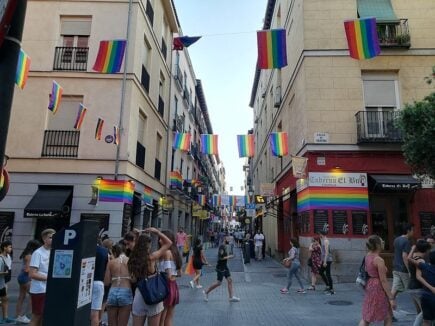
For the hottest party in the city, look no further than the Chueca neighbourhood. Located east of the city centre, Chueca is home to trendy bars, lively clubs, charming pubs and funky cafes, making it one of the best places to stay in Madrid for nightlife.
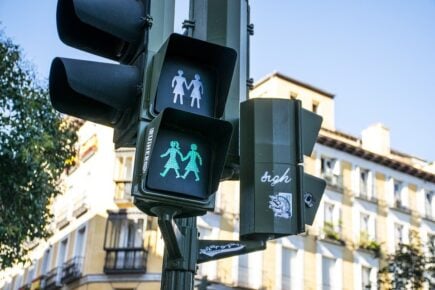
Gran Via has played a role in developing modern-day Madrid’s diverse history. It connects you to many of the best places in Madrid as well as the cool Chuleca and Malasaña neighborhoods, so it’s great for a short weekend trip.

Barrio De Las Letras
Barrio De Las Letras is one of the best places to stay in Madrid for families. Here, you’ll find a great number of attractions, from the city’s important art museums to the lush and expansive El Retiro Park just a few blocks away. This downtown neighbourhood is packed with activities that the whole family will love.

A new country, a new contract, a new piece of plastic – booooring. Instead, buy an eSIM!
An eSIM works just like an app: you buy it, you download it, and BOOM! You’re connected the minute you land. It’s that easy.
Is your phone eSIM ready? Read about how e-Sims work or click below to see one of the top eSIM providers on the market and ditch the plastic .
1. Take a coffee in the Plaza Mayor
The Plaza Mayor is quite the sight to behold. It is a touristy spot, yes, though you won’t be spending all day there. Formerly the municipal market place, the Plaza Mayor now is a massive plaza dotted with cafes and fountains lying in the shadow of impressive buildings centuries old.
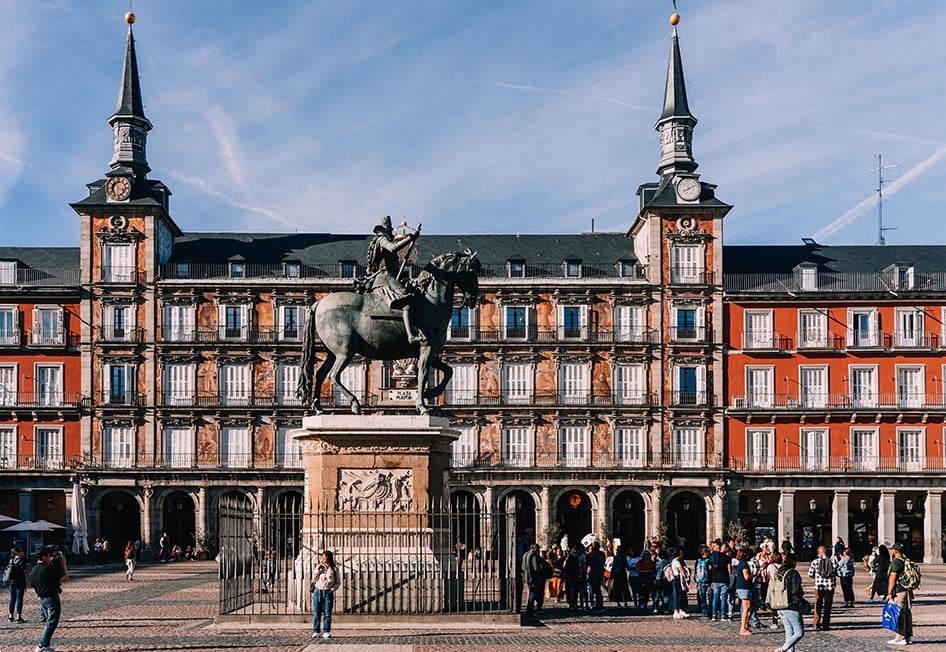
2. Visit The Prado Museum
Take in the masterpieces of some of the best Spanish and international art collections to be found anywhere on earth.
3. Drink a beer in a Matador bar
There was a time in Spain where being a Matador was akin to being Elvis Presley. Taberna Antonio Sanchez is a good place to get the vibes of what the golden era of bullfighting was like.
4. Attend a football match
The Spanish peoples’ former love of bullfighting has been overwhelmingly replaced by their love of football. If the Barcelona team is in town visiting, expect locals to be out in full force.

5. Check out the Royal Palace
Okay so this Royal Palace is the symbol of a Spanish monarchy that is super obnoxious and even offensive to the average Spanish person. This is due primarily to a torrent of corruption and lavish personal spending allegations brought against the royal family. What a surprise! That said, the palace was beautifully constructed and worth a look in my opinion.
If you want to get the most out of the palace visit, you can book a guided tour right here. This tour is probably one of the best in Madrid since you’ll get early access to the palace, a guided tour through markets, the streets of the city and even some tapas tasting afterwards!
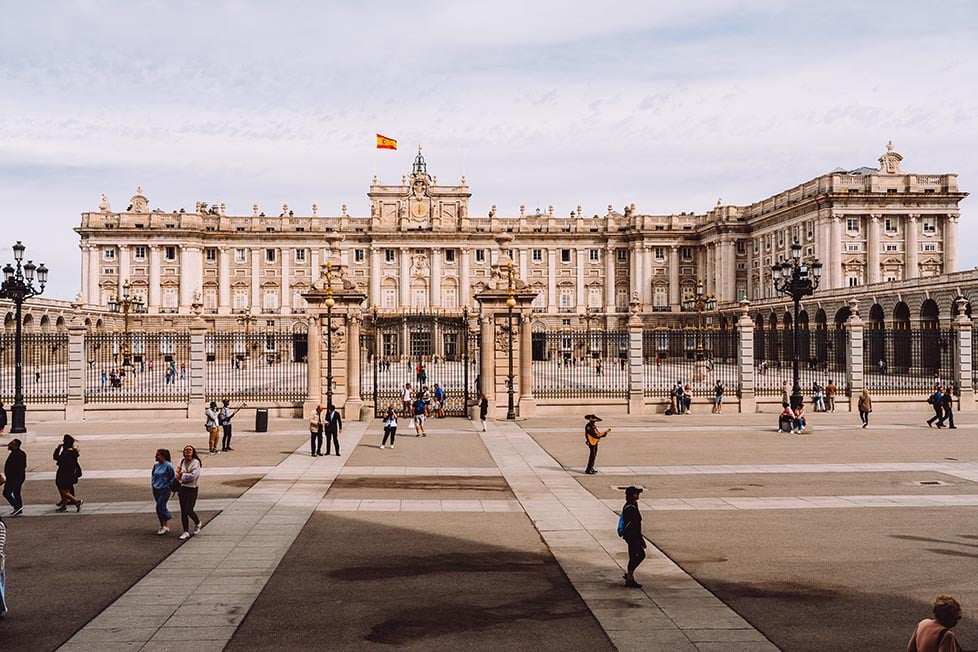
6. Explore the Jardin Botanico
The Jardin Botanico has been impressing visitors since its creation in 1755. Stop by and absorb a little natural beauty in the center of the big city.
7. Check out the Las Letras neighborhood
Over the centuries, Las Letras has been home to writers such as Miguel de Cervantes , Quevedo , Góngora, and Lope de Vega. Now its charming cobbled streets are alive with a plethora of hip bars, cafes, and oddity shops. Even if history isn’t your favorite subject at least head there for an excellent gelato.
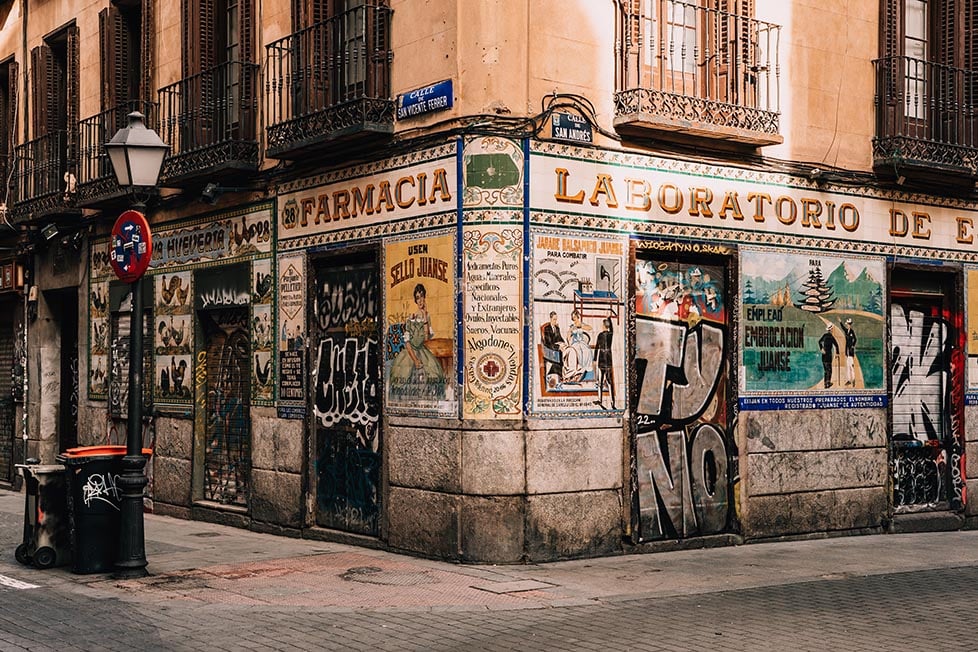
1. Picnic in The Buen Retiro
Load up with lunch supplies and head to one of Madrid’s most beautiful green spaces, the Buen Retiro park.
9. Eat churros and drink hot chocolate at San Gines
The last time I was in Madrid, I had the pleasure of being taken here by my good amigo who is from Madrid. Holy hell! I think I’m still coming down from the major sugar rush that I experienced there. Truly not to be missed if you have a sweet tooth. The hot chocolate by the way is more like thick rich soup than a drink! Amazing.
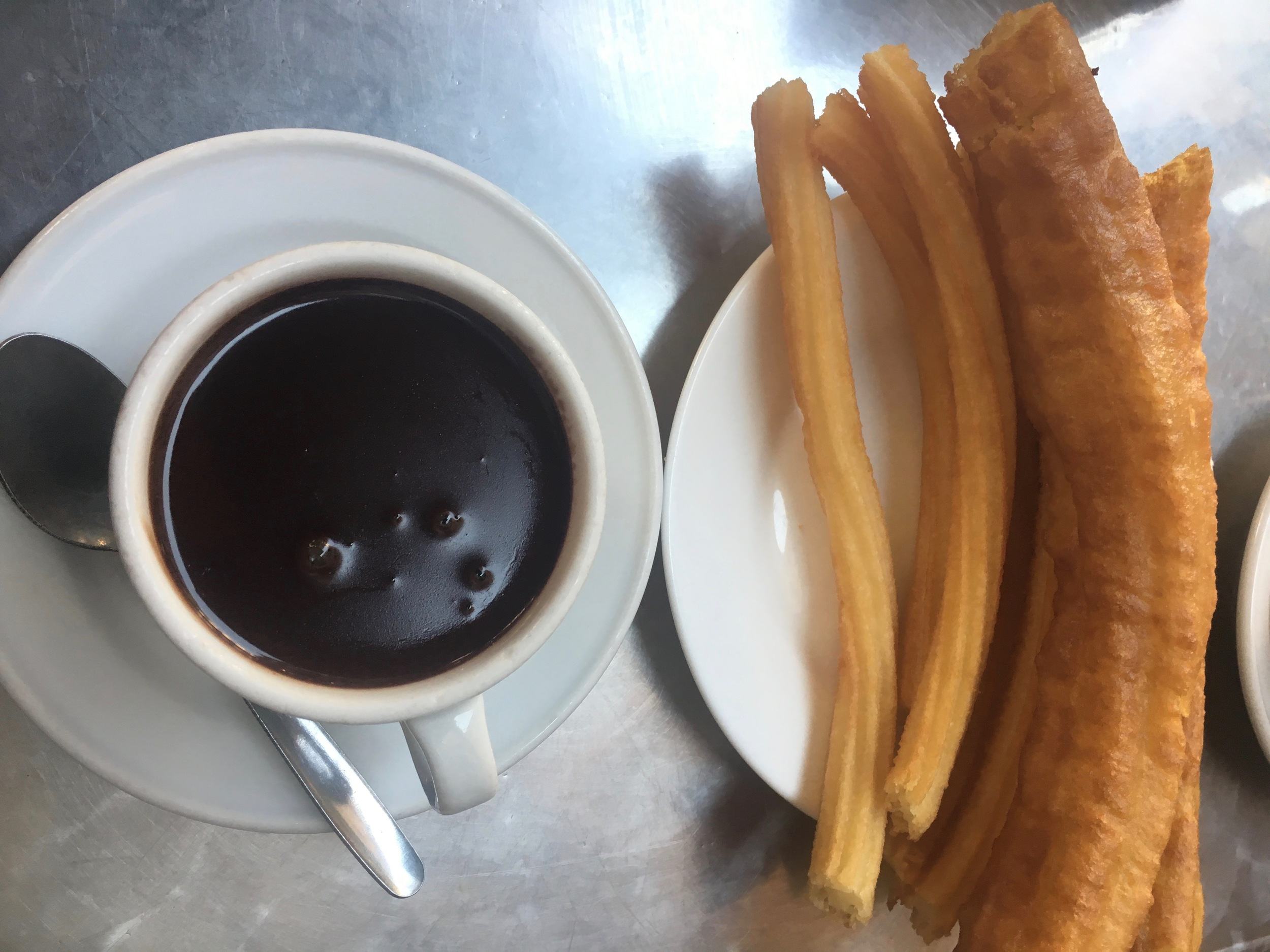
10. Hunt for treasures at The El Rastro Flea Market.
Haggle at the famous Flea Market El Rastro: Okay for most new things there is a set price, but for other used items the prices are up for debate. If you’re traveling in Madrid and want to score a good deal, this is the place to do it.
Now that you have become acquainted with the top things to do in Madrid, let’s check out a Madrid 3 day itinerary to get your traveling inspiration charged up even more.
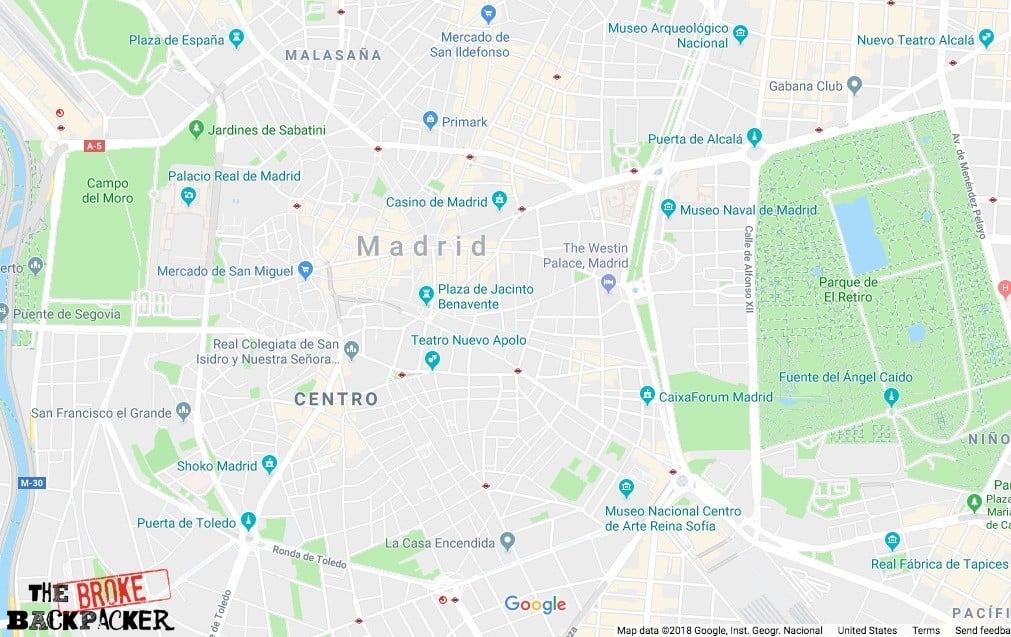
Day 1 in Madrid: Madrid Highlights
Once you have landed and feel rested, it is time to hit the town. If you are arriving in the summer, bring lots of water as the day-time temperatures can be searing. To get to grips with the city, I recommend heading down the Gran Via towards The Royal Palace . Head there early as crowds start to swarm by mid morning.
Then head to San Gines Chocolateria to have your mind blown by tasty churros and chocolate. Eat slowly and enjoy the flavors of a place that has perfected its recipe by serving the same damn thing every day for over a century.
Next, you have several options. You can head to either the Reina Sofia or the Prado . Alternatively, you can save a museum for the early evening when they are free. For me spending two hours there is not quite enough time. However, you can still take it heaps in that amount of time.
After the museum you can head to a cafe (walk a bit away from the museum area) and get into some tasty tapas or a fixed lunch menu. There are more bars per capita in Madrid than anywhere else in Europe! This keeps the prices competitive as well. It shouldn’t be too hard to find a reasonably priced place to grab a late lunch.
As the late afternoon sets in, I recommend heading back to your hostel for rest. It is going to be a long night, should you choose.
Whether you are the pub crawl sort or just want to hit the town in search of some dancing and/or revelry, Madrid is open all night for that. Enjoy your time out but seriously don’t drink too much. For the sake of your budget and your next day adventures, take it easy.

Day 2 in Madrid: Parks, Museums, Neighborhood Exploration
Good morning sunshine! Glad to see you’re still with me. Right, for breakfast you can head to the Las Letras neighborhood. You can easily spend one to three hours here just wandering around, popping into shops, drinking coffee, and eating baked goods.
The streets are super charming and there is a lot of interesting history to take in. Before you head off to the next activity, I recommend finding a little bodega and a bakery. Load yourself up with picnic supplies. It is better to do this now as 1.) you’re not hungry so you won’t buy too much, and 2.) there really aren’t too many shops around the Reina Sofia or Prado.
I recommend checking out whichever of the former museums you didn’t see the day before. Honestly, they are both so worth visiting. I am not especially into art and I loved going to these museums. Take in the epic works of Goya, Van Gogh, Picasso and hundreds more equally impressive artists.
After the museum head to the Buen Retiro Park. Depending on the time of day, there are kiosks selling books, benches in the shade, and even a small lake. The park is massive and there are ample places to post up for a picnic lunch. Also the Buen Retiro is an excellent place to take in a short siesta in the shade. I highly recommend it!
Late afternoon time in Spain can be pretty dead. The locals sure as hell aren’t up to too much. This is the resting part of the day especially during the dog days of summer heat. I oblige you to take notice.
With evening on the horizon, the city awakens and the possibilities of what to do are endless. Take a Salsa or Flamenco class. Attend a Spanish concert. Catch a show at the teatro. There are at least 20 theaters in Madrid!
Having a drink or two before calling it a night is also a fine option too.

Day 3 in Madrid: Flea Markets, Cathedrals, and Whatever Y ou Like
After after two days in Madrid , you’re doing great. For day three I recommend a slow breakfast somewhere you haven’t been before. Then get ready for plenty of visual stimulation at the El Rastro Flea Market . Stalls upon stalls of everything from unique t-shirts to handbags and trinkets of every shade. Note that the Flea Market is only happening on Sunday mornings.
Whatever you are looking for (even if it’s nothing) you’ll probably see multiple versions of it. Weave amongst the interesting stalls under the shade of old trees lining the avenue. Don’t rush, though keep in mind that later in the day the tourist masses seem to descend all at once.
Take a stroll through the San Miguel Market . Here you can score all of the delicious ingredients you need to prepare an epic lunch on the cheap. If you have a few mates with you, all the better to cook together. Head back to the hostel and make yourself a good Spanish lunch. Deposit whatever sensational treasures you found at the flea market into your backpack.
Depending on what you want to do next depends on your interests.
Head out for a afternoon round of Sangria and music. Wander through the LGTB quarter Barrio Chueca . Explore the Grand Via . Check out the Botanical Gardens . Take in a Flamenco show if you haven’t seen one already. Visit the Santa Maria de Real Cathedral (or the dozens of other epic churches).

Madrid Off The Beaten Track
For all of its must-see attraction, Madrid is full of off the beaten path activities as well. If you want to experience Madrid like a local, you’ll certainly have to step off the well-trod path.
- Mercado de San Fernando , in the immigrant-dominated neighborhood of Lavapiés, is the locals-only version of the Mercado San Miguel, which is oft-frequented by foreigners.
- Explore Parque del Capricho : The Buen Retiro is awesome, but it is also the most famous park in Madrid. For far fewer humans and an equal amount of shady spots for a siesta, check out this park.
- El Riojano Hot Chocolate : The hot chocolate and churros from San Gines are world famous and damn good. El Riojano is where locals go to get their chocolate fix. Riojano doesn’t have the same fame, but apparently, they serve up a fine cup of chocolatey goodness.
- Score unique bird-eye views of the city : Head to Circulo de Bellas Art Museum. Three euros gets you roof-top access and some stunning view of the Madrid downtown.
- Day-trip from Madrid : It’s true that most of the picturesque towns outside of Madrid are not super off the beaten path. Avila , Toledo and Sagovia are all well-trafficked and rewarding day trips. Think about heading to Alcalá de Henares for a quieter time. If you really want to “get away” from the crowds, consider paragliding above the towns instead!
- Visit the Matedero Madrid : Once the large slaughterhouse serving the entire city, in 2018 things are different. The entire old building has been converted into an awesome art space.
- Snag a loaf of Sourdough from Panic : There are a million and one bakeries in Madrid. None of which offer up sourdough this good or this authentic. Pick up a little charcuterie and cheese and your picnic is sorted.
- Rock climb near Torrelodones : There are some excellent abseiling, bouldering, and crack climbing opportunities right outside of Madrid! Most of the pitches are not too high or complex either, which makes this a great place for beginner climbers.

Best Walks in Madrid
There are no hikes in Madrid , but it is an excellent walking city. There are many great parks and green space to enjoy. However, some of the famous parks and walkways can feel damn crowded.
Madrid Río , the city’s very ambitious urban planning initiative, has solved the space conundrum by laying nearly 20 miles of green space and bike-friendly paths along the Manzanares River. You could easily spend an entire afternoon strolling along the banks of the river.
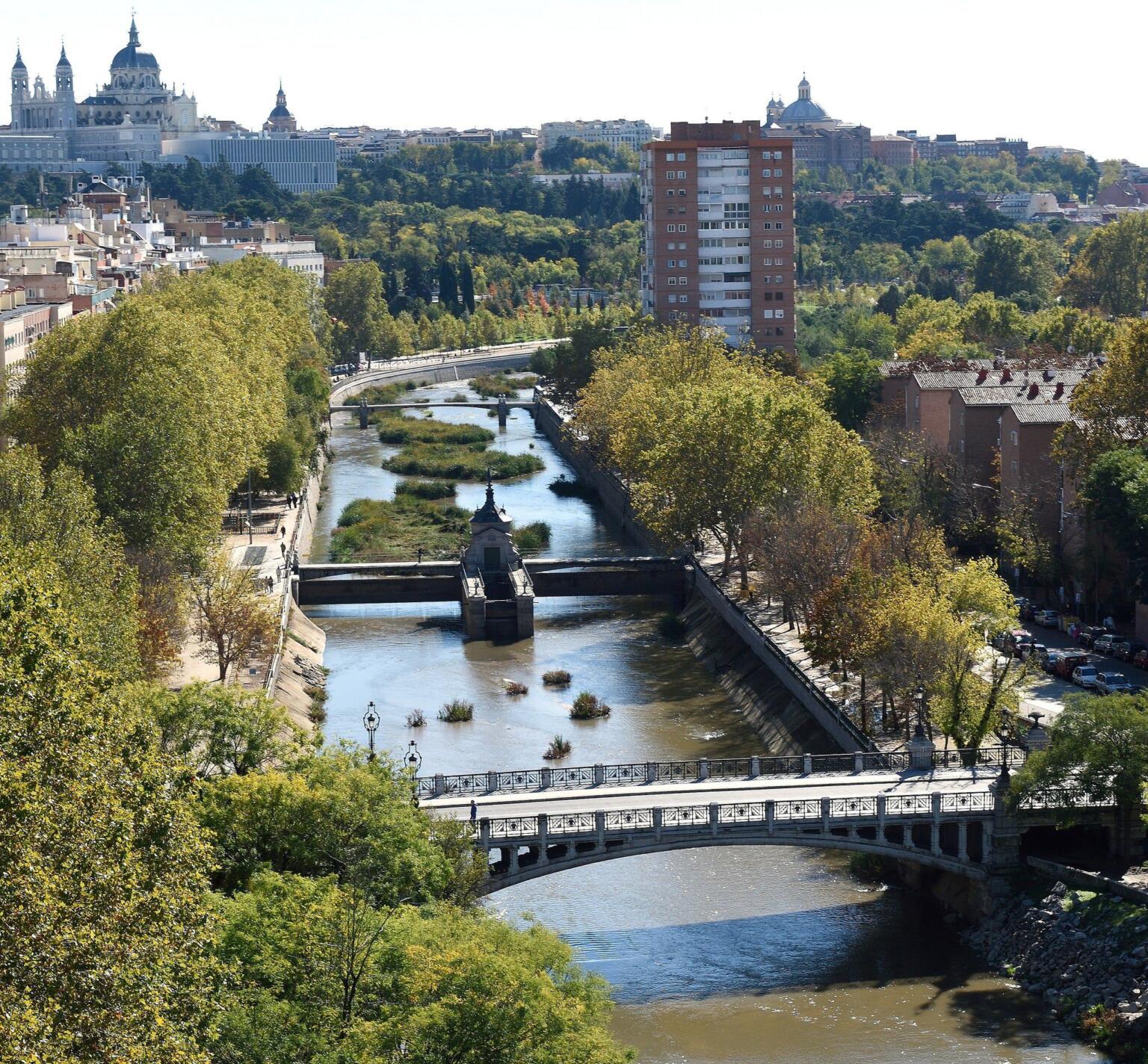
Below I have written some essential travel tips for Madrid, such as how to travel around Madrid, more budget tips, the best bars and restaurants in Madrid, and information on the nightlife and other activities!
Best time of year to visit Madrid
Like many European cities Madrid is inundated with foreign visitors from May until August. Even many locals skip town and head to the beach. The reason? The infernal sun shines down on Madrid with a force to be reckoned with.
I’ve been in Madrid in June with the thermometer at the bus stop read 44 degrees C (111.2 F). Traveling in Madrid when it is hotter than the devils pitchfork is not so pleasant.
Madrid can be beautiful any time of year. However, I don’t recommend visiting in the middle of the summer if you can avoid it. Spring and fall are best both due to the mild temperatures and the fact that less people visit then.
Winter is also a good time to visit. Temperatures can get surprisingly chilly, so pack accordingly. It can even snow in Madrid, though it is a pretty rare event.
Need help deciding between Barcelona or Madrid ? Check out our helpful guide.
If you are heading to Barcelona next after visiting Madrid, be sure to check out my other backpacker guide to Barcelona.
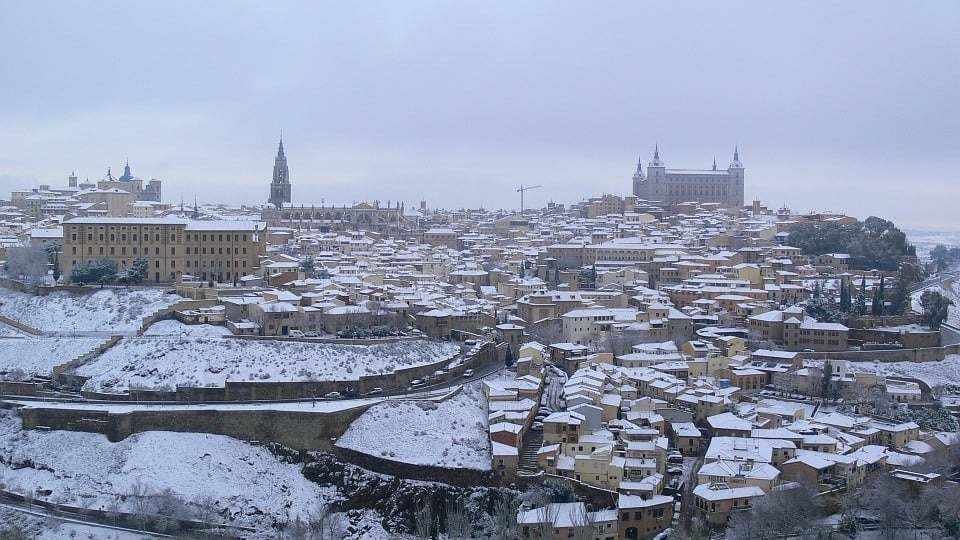
Getting in and out of Madrid
There are 4 transportation options from Madrid-Barajas Airport (MAD) to Madrid city center: bus, taxi, metro, and train. The cheapest option is to take the train. Tickets for the train cost €2.60 one way, and the journey is approximately 27 minutes.
Another well priced option is the metro. Tickets are 3€ one-way, and the journey only takes 22 minutes. Then there is the good ol’ bus. This takes a little longer than the other options, but it is still only €5 per ticket. If this was France that ticket would cost you €20 I’m sure of it.
The most convenient option is taking a Madrid airport taxi at a cost of €30 but who the hell takes taxis when there is a €3 metro?!
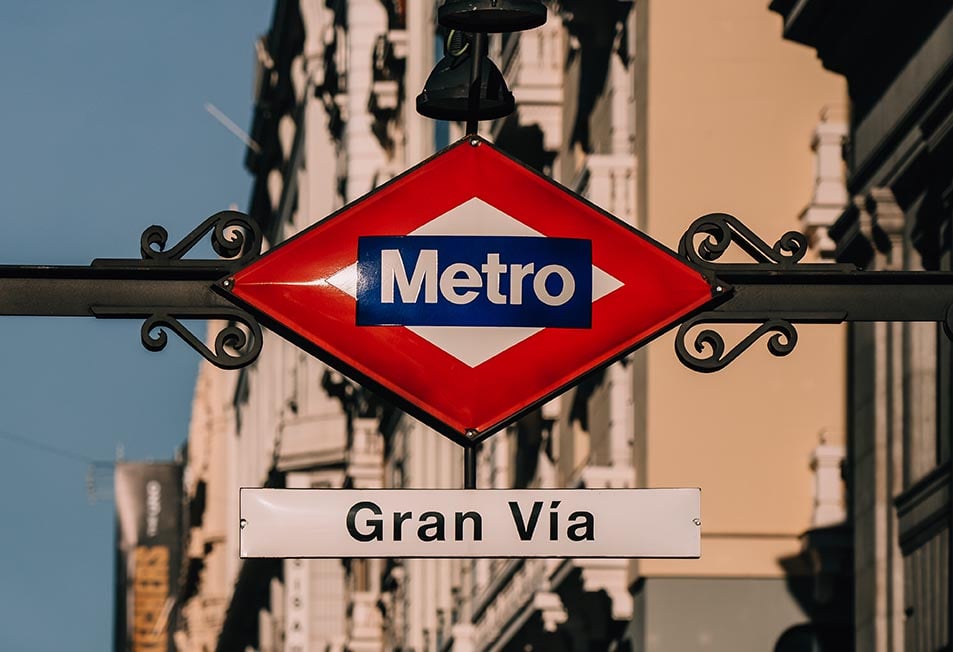
If you have a very early morning flight, the metro and train are not an option as they begin service at six am.
Good news: the bright yellow Airport Express buses going to Madrid-Barajas Airport run 24 hours a day 365 days a year. I took the bus to the airport at four am and it was easy and straight forward.
The bus runs every 15 minutes during the day and every 35 minutes at night. There are only three stops – the corner of O’Donnell and Doctor Esquerdo, Plaza de Cibeles (where you can catch an EMT night bus somewhere else) and Atocha Station (only between 06:00 and 23:30). Catch the bus from terminals T1, T2 and T4. Again, tickets cost five euros and can be purchased on the bus.

With connections in 28 European countries and over 2000 destinations , you can sit back and relax knowing that Flixbus will get you there in time. Discover the smartest and cheapest way to travel – book on Flixbus now and hit the road!
How to get around in Madrid
Honestly, after spending days exploring Madrid, I only needed to use the metro at the end of the day when I was heading out of the city center to stay at my friend’s apartment. Within the city center, traveling in Madrid on foot is the way to go.
You’ll find that you might end up walking close to 10 kilometers on any given day, but hell, you have to compensate for all of those chocolate and churro sessions somehow.
One final reminder: bring a water bottle. You will need to stay hydrated for all of the urban hiking you will be doing. Don’t buy plastic bottles!!
If there is a landmark you really want to get to, then the metro or city bus system should have you covered. If you know you’d rather get a ride then walk in the city center likewise just take the metro. Buying your metro tickets in bulk will save you money.
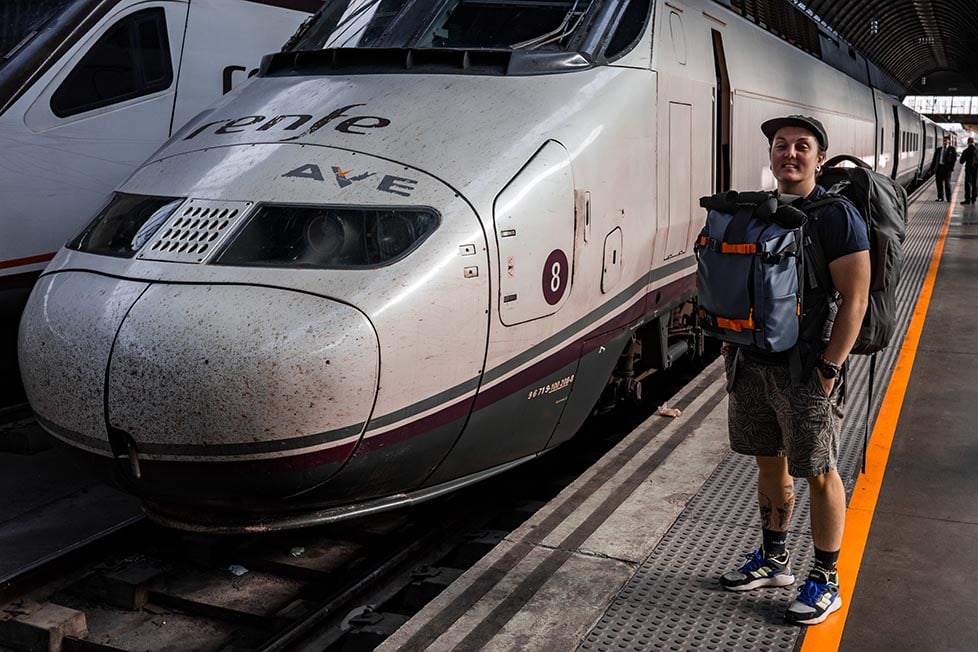
Long Distance Trains from Madrid
In addition to getting most anywhere in Spain by train (or bus), you can cover long distances via rail as well.
Madrid’s main train station is Madrid Atocha Station (Avenida de Barcelona Madrid). For example, you can get from Madrid to Paris in about 10 hours and 20 minutes. From Paris, you can easily get to Amsterdam, London, or Berlin and beyond.
Train travel in Europe is at once easy as it is complicated. If you plan on traveling around Europe extensively I recommend looking into buying a Eurorail pass .
Check out this detailed guide on train travel in Europe.
Safety in Madrid
For such a big city, Madrid feels very safe generally. Of course it is not without it perils and annoyances. Pick-pockets and thieves are of the most professional order in Madrid. They work in teams and often target busy plazas, train-stations, markets, and other crowded public spaces.
Be alert when traveling on the metro, especially during rush hour. I found that even at 3:30 am whilst walking around the city center, there are many people still out in the streets partying and hanging out. I felt comfortable when walking several kilometers to catch a bus in the middle of the night.
It is always best to go out with friends of course. Being out late, drunk, lost, and alone is just inviting trouble. I’m not saying you shouldn’t get drunk. Just be smart about how you do it and make a plan for how you can safely get back to the hostel.
Armed robbery (mostly involving a knife) does occur, though very rarely. I hope it goes without saying that in the very rare event that a robbery situation plays out with you involved, give them what they want and for the love of Christ don’t get stabbed over your Iphone.
Pick yourself up a backpacker security belt to keep your cash safe on the road, and check out Backpacker Safety 101 for tips and tricks to stay safe whilst traveling in Madrid.
Get Insured Before Backpacking Madrid
Traveling without insurance would be risky so do consider getting good backpacker insurance sorted before you head off on an adventure.
I have been using World Nomads for some time now and made a few claims over the years. They’re easy to use, professional and relatively affordable. They may also let you buy or extend a policy once you’ve started your trip and are already abroad which is super handy.
If there’s one insurance company I trust, it’s World Nomads.
ALWAYS sort out your backpacker insurance before your trip. There’s plenty to choose from in that department, but a good place to start is Safety Wing .
They offer month-to-month payments, no lock-in contracts, and require absolutely no itineraries: that’s the exact kind of insurance long-term travellers and digital nomads need.

SafetyWing is cheap, easy, and admin-free: just sign up lickety-split so you can get back to it!
Click the button below to learn more about SafetyWing’s setup or read our insider review for the full tasty scoop.
Madrid Accommodation Travel Hacks
As much as us Broke Backpackers love to camp and rough it, whilst traveling to an urban environment we must face the inevitable: we need to book hostels sometimes. Hostels are great for meeting fellow backpackers and just having space where you can do your thing at your own pace.
Backpacker accommodation in Madrid is not the cheapest I have ever seen, not by a long shot. I will just say the prices are a bit unnerving once you learn what they are. So, stay at a hostel for a night or two and consider your other options:
Couchsurf! : If you manage to land a Couchsurfing spot in Madrid, you will have successfully eliminated your biggest cost: accommodation. I’ll be honest with you. Couchsurfing is more popular than ever before.
Couchsurfing hosts can receive dozens of requests per day. Point being, whilst I would not explicitly count on Couchsurfing in Madrid, I would sure give it an honest try. Make sure you send a very convincing message short of selling your body and your soul.
Tap into your backpacker network : If you have done any sort of backpacking before, odds are you know someone who knows someone from or connected to Madrid. The Spanish love to go backpacking! Before you begin your Madrid backpacking trip, I suggest you put your feelers out there and ask your network of friends if they know of someone whom you can crash with for a night or two.
This might sound farfetched, but honestly, this has helped me out multiple times in cities across the world. A blind message has born the fruit of meeting new people and having a free place to crash.
Ultimately, if you can find a balance between a hostel night and a free night, you will have more cash for calamari sandwiches, tapas, and churros.
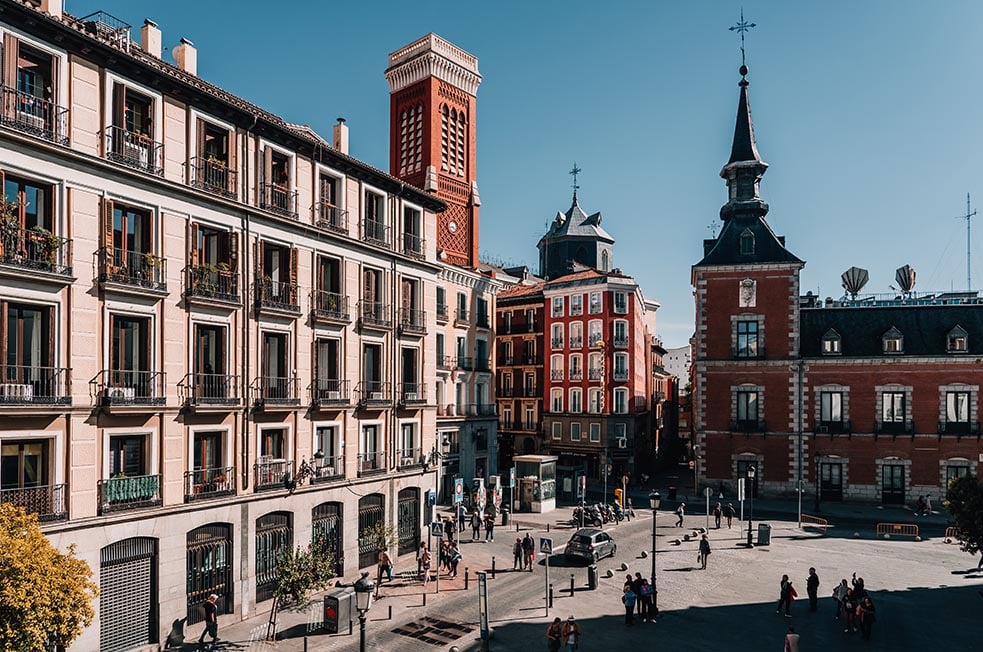
Cheap Restaurants in Madrid
Onto one of my favorite Spanish activities: eating! Every little via or calle you turn down in Madrid you will come across an attractive looking cafe, bar, or bakery trying to hook you in. Options range from once-in-a-lifetime Michelin-Star restaurants to greasy kebab and sandwich joints.
Because there are so many different eating options many of the restaurants are quite reasonable priced in Europe terms. If you’re looking for a sit down lunch multi-course lunch, you could score a tasty meal for as little as €10.
Remember that if you order a beer, you should typically get a free tapa. They might be simple olives or potato chips, or something more elaborate.
Here are some of the best reasonably prices places to grab some excellent Spanish cuisine:
El Tigre : As long as you’re drinking beer or cider, the free tapas keep flowing. Patatas bravas, jamón Serrano, Spanish omelette… it’s all free. Who ever said you can’t get a free lunch was clearly mistaken.
El Brillante : Classic Madrid eatery. Stuff your face with amazing fried calamari sandwiches, a quintessential Madridian food. I met a dude there who had been working behind the bar for 40+ years. Oh the amount of sandwiches he’s seen come and go…
Taberna los Madriles: The specialty of this class bar is the ‘pincho Los Madriles’, with red pepper and anchovies. Also worth diving into are the tuna and prawn pinchos.
Casa Camacho: A favorite spot among locals and hipsters alike. Plenty of taste things on offer here.
Bar Omaira: Delicious empanadas and Spanish food with a Venezuela twist.

Best Bars in Madrid
I said it before: Madrid has more bars per capita than anywhere else in Europe. Cocktails, beer, wine, cider, Champagne, vermouth, sangria, bloodies… you’ll find it all here.
Experiencing the nightlife in Madrid or in Spain generally is an important part of traveling here. Just don’t go overboard and blow your whole budget over the course of a long big night out.
As you wade through the sea of bars to check out, remember the places I mentioned in the food section above as they all pour good drinks. In addition to those places, here is a few great places in Madrid to wet your whistle:
La Venencia: Hemingway drank here. Enough said.
1862 Dry Bar: A spot where you can find dozens of interesting, overly thought out cocktail concoctions.
La Casa Del Abuelo: A Madrid institution for over 100 years.
Cafe Del Principe: Classy as hell, a bit pricey, but the bar is truly beautiful.
Azotea Del Circulo: One of the best and cheapest places in Madrid to get a drink and take in magnificent views of the city.
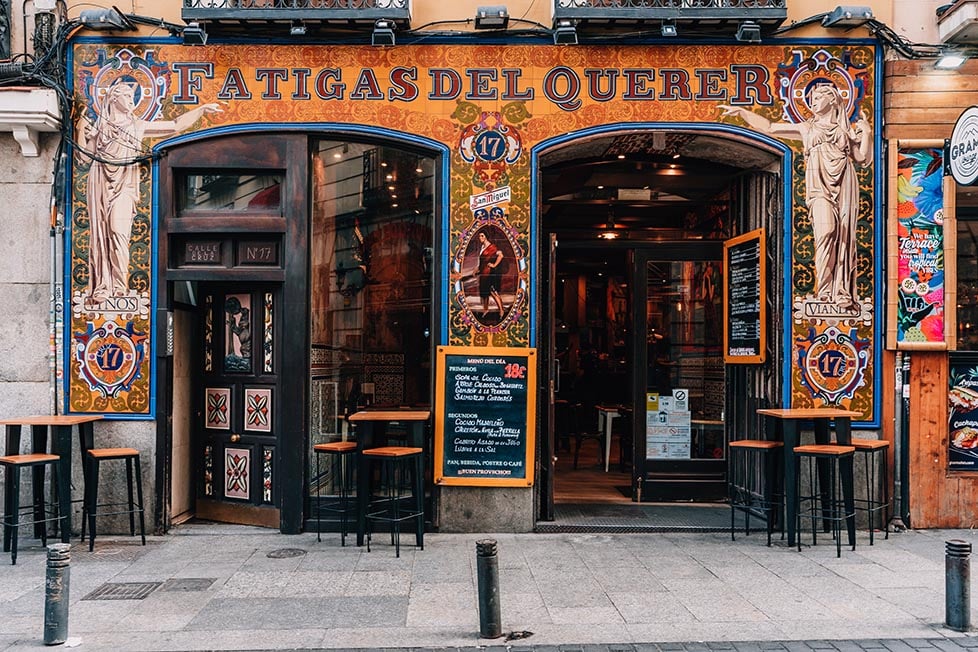
For Madrid cooking classes, check out this site for awesome deals.
Nightlife in Madrid
You know by now that Madrid doesn’t fuck around when it comes to engaging in the world of nightlife. In fact, I would argue that a large percentage of the population spend the majority of their waking hours between midnight and six am during the weekends.
Between all the activities offered up at the hostels I mentioned before: the bars, the clubs, the dance shows, you have more than enough to keep you busy all night long should you desire.
There are even many places still serving food at four or five in the morning. Late night munchies in Madrid never tasted so good.
Another option is to consider one of the many Spanish festivals available in Madrid. Whilst the tickets aren’t always the cheapest, they are a guaranteed good time.
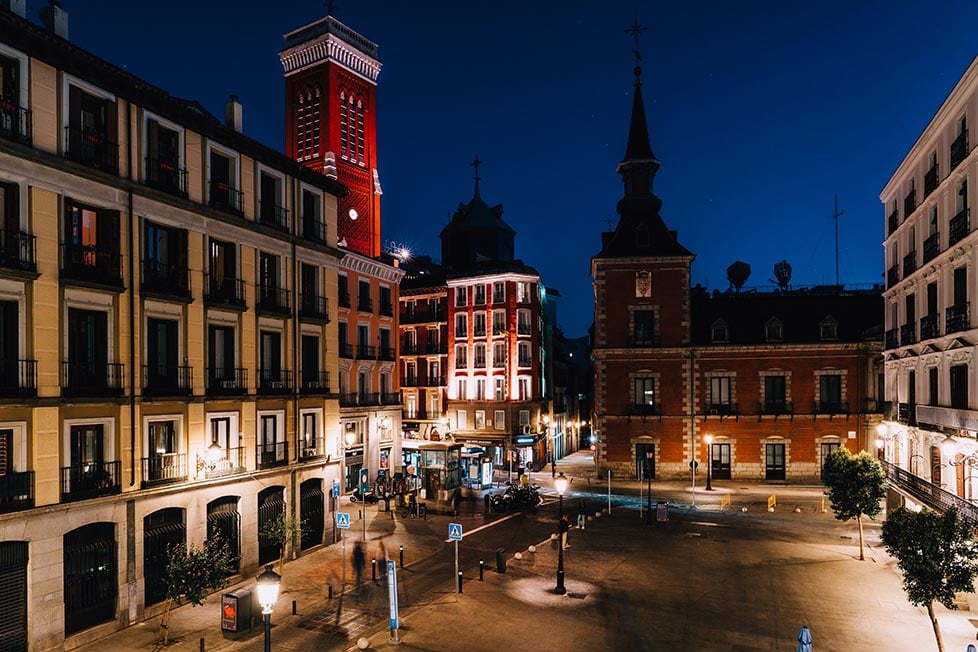
Book to Read whilst Traveling in Madrid
Don Quixote: I have to admit this is a long, sometimes dry, story with sentences longer than a page. However, Don Quixote is the foundation works of literature in Spain. It’s a series of tragic-comic episodes of a slightly deranged knight names Don Quixote.
For Whom the Bell Tolls: Ernest Hemingway covered the Spanish Civil War as a journalist, and turned his account into a fiction story. One of my favorite books of all time!
Homage to Catalonia: Another classic from the Spanish Civil War period. In 1936 Orwell went to Spain to report on the Civil War and instead joined the fight against the Fascists. This famous account describes the war and Orwell’s experiences.
A Moveable Feast : Fancy having a look into what life was like for expats living in France and Spain in the 1920s? If you yearn for the Golden age of the Lost Generation like I do, this Ernest Hemingway classic is a must read. OK, so I’m showing my Hemingway bias here, but hey it is a great read too!
Death in the Afternoon: One of the best books on bullfighting ever written by a non- Spaniard. Learn the complete history and culture of the most infamous Spanish sport.
Lonely Planet Madrid: Comprehensive travel guide book for traveling in Madrid
Volunteering in Madrid
Long term travel is awesome. Giving back is awesome too. For backpackers looking to travel long-term on a budget in Madrid whilst making a real impact on local communities, look no further than World Packers . World Packers is an excellent platform connecting travelers with meaningful volunteer positions throughout the world.
In exchange for a few hours of work each day, your room and board are covered.
Backpackers can spend long periods of time volunteering in an awesome place without spending any money. Meaningful life and travel experiences are rooted in stepping out of your comfort zone and into the world of a purposeful project.
Worldpackers opens the doors for work opportunities in hostels, homestays, NGOs, and eco-projects around the world. We’ve tried and approved them ourselves – check out our Worldpackers in-depth review here.
If you’re ready to create a life-changing travel experience and give back to the community, join the Worldpacker community now. As a Broke Backpacker reader, you’ll get a special discount of $10. Just use the discount code BROKEBACKPACKER and your membership is discounted from $49 a year to only $39.

Worldpackers: connecting travellers with meaningful travel experiences.
Make Money Online Whilst Backpacking Madrid
Traveling in Madrid long-term? Keen to make some cash when you are not exploring the city?
Are you a native English speaker looking to earn cash whilst on the road? Teaching English online is a great way to earn a consistent income—from anywhere in the world with a good internet connection. Depending on your qualifications (or your motivation to obtain qualifications like a TEFL certificate) you can teach English remotely from your laptop, save some cash for your next adventure, and make a positive impact on the world by improving another person’s language skills! It’s a win-win! Check out this detailed article for everything you need to know to start teaching English online .
In addition to giving you the qualifications to teach English online, TEFL courses open up a huge range of opportunities and you can find teaching work all over the world. To find out more about TEFL courses and how you can teach English around the world, read my in-depth report on teaching English abroad .
Broke Backpacker readers get a 50% discount on TEFL courses with MyTEFL (simply enter the code PACK50), to find out more, please read my in-depth report on teaching English abroad.
Whether you are keen to teach English online or looking to take your teaching game a step further by finding a job teaching English in a foreign country, getting your TEFL certificate is absolutely a step in the right direction.
Being a Responsible Backpacker in Madrid
Reduce your plastic footprint: Perhaps the best thing you can do for our planet is to make sure you do NOT add to the plastic problem all over the world. Don’t buy one-use water bottles, the plastic ends up in landfill or in the ocean. Instead, pack a tough travel water bottle .
Go and watch A Plastic Ocean on Netflix – it’ll change how you view the plastic problem in the world; you need to understand what we are up against. If you think it doesn’t matter, get off my fucking site.
Don’t pick up single use plastic bags, you’re a backpacker – take your daypack if you need to go to the shop or run errands.
Bear in mind, that many animal products in countries you travel through will not be ethically farmed and won’t be of the highest quality. I’m a carnivore but when I’m on the road, I only eat chicken. Mass-farming of cows etc leads to the rainforest being cut down – which is obviously a huge problem.
Need more guidance? – Check out our post on how to be a responsible backpacker.
Backpacking in Madrid will bring you ample opportunities to participate in debauchery, and it is very important to have fun, let loose, and get a bit wild at times. Most backpacking trips I have been on across the world have included at least a few mornings where I wake up knowing I went too far.
There are some things that will put you in the category of a straight up jackass if you do them. Being super loud and obnoxious in a tiny hostel at 3 AM is a classic rookie backpacker mistake. Everyone in the hostel will hate you when you wake them up. Show your fellow travelers respect whilst backpacking in the Madrid, and anywhere else for that matter!
Climbing on ancient castle walls, monuments, or other historical artifacts should be avoided. Learn to appreciate the cultural treasures of Spain and don’t be that dickhead who adds to their demise.

And for transparency’s sake, please know that some of the links in our content are affiliate links . That means that if you book your accommodation, buy your gear, or sort your insurance through our link, we earn a small commission (at no extra cost to you). That said, we only link to the gear we trust and never recommend services we don’t believe are up to scratch. Again, thank you!

Share or save this post

Leave a Reply Cancel reply
Your email address will not be published. Required fields are marked *
Save my name, email, and website in this browser for the next time I comment.
Notify me of followup comments via e-mail.
Nomadic Matt's Travel Site
Travel Better, Cheaper, Longer
Madrid Travel Guide
Last Updated: March 28, 2024
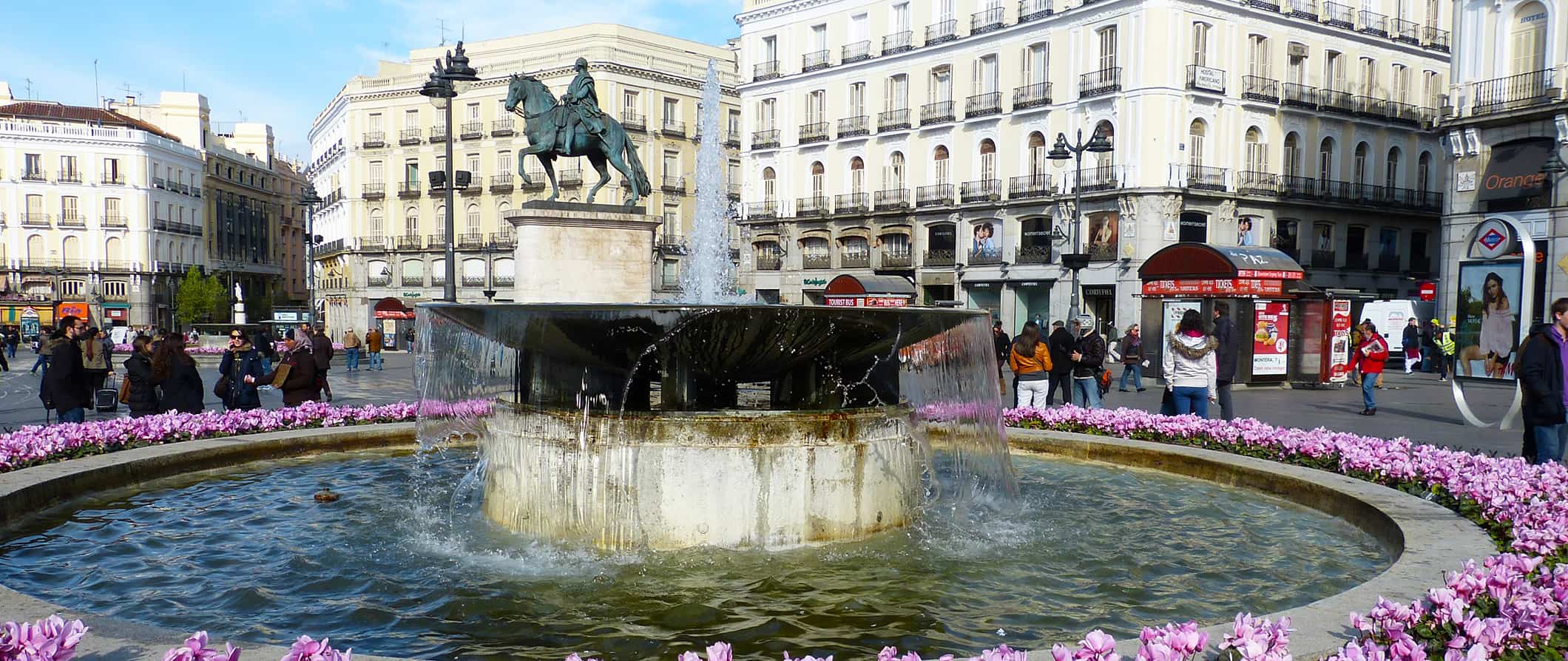
Like its rival Barcelona , Madrid embraces the night. Dinner doesn’t happen until 9pm or 10pm and the partying doesn’t kick off until several hours after that. It’s a city for night owls.
Though it’s somewhat sprawling, Madrid’s numerous neighborhoods are perfect for getting lost in, binging on tapas, and drinking sangria. The warmth of the locals and the slowness of the meals will keep you out late as you soak in the city’s pace. If you embrace the late (and long) meals and the late-night partying and live your life on Madrid’s terms you’ll have a much deeper, enriching visit.
This Madrid travel guide will give you everything you need to know to eat well, save money, and see the best sights the city has to offer!
Table of Contents
- Things to See and Do
- Typical Costs
- Suggested Budget
- Money-Saving Tips
- Where to Stay
- How to Get Around
- How to Stay Safe
- Best Places to Book Your Trip
- Related Blogs on Madrid
Top 5 Things to See and Do in Madrid
1. stroll plaza mayor.
The Plaza Mayor, which dates to the 15th century, is Madrid’s main square. While walking this plaza, which was designated a Spanish Property of Cultural Interest in 1985, don’t miss Ayuntamiento (the impressive city council building), the Baroque Church of San Pedro, the 18th-century San Francisco el Grande Basilica, and Calle de Cuchilleros (a popular place to eat, but expect tourist prices). In summer, the plaza hosts various festivals and music events, and in winter, it’s home to a sprawling Christmas market.
2. Visit the Prado Museum
The Prado Museum (Museo Nacional del Prado) is one of the world’s greatest art galleries and the largest art museum in Spain. It’s also one of the most-visited museums in the world and has earned that title because it’s a great destination even for those who aren’t “museum” people. See a dazzling display of around 20,000 works by the great European masters housed in a grand 18th-century building that opened as a museum in 1819. The museum is also a UNESCO World Heritage Site and a Spanish Property of Cultural Interest, home to works by Goya, Rembrandt, Caravaggio, Bernini, Monet, and many others. Admission is 15 EUR, and it takes about 3 – 4 hours to see the highlights of the museum.
3. Unwind in El Retiro Park
Officially known as The Buen Retiro Park, this is the main park of Madrid. It’s a leafy oasis with more than 15,000 trees and a UNESCO World Heritage Site, making it the perfect place to relax on a sunny day. The park dates back to the 17th century and spans over 350 acres. There is a large lake where you can hire a rowboat, a monument to the victims of the Madrid terrorist bombings (which killed 193 people and injured over 2,000 in 2004), and the Crystal Palace (a 19th-century conservatory that once held a human zoo).
4. Visit the Palacio Real
While the King of Spain no longer lives in the palace, it is used for state ceremonies. Built in the 18th century, the Baroque-style palace is the largest functioning palace in Europe, home to over 3,400 lavishly decorated rooms. The palace was originally built on a former 9th-century Muslim fort and today functions much like an art museum with numerous works, including pieces by Caravaggio, Juan de Flandes, and Francisco Goya. Admission is 14 EUR for self-guided tours and 20 EUR for a guided tour. Audio guides are available for 5 EUR. It’s free for EU citizens on Wednesdays.
5. Take a food tour
Other things to see and do in madrid.

1. Take a free walking tour
Free walking tours are one of my favorite activities to do in a new city. You’ll get the lay of the land, learn about the history and culture, and connect with a local guide who can answer all your questions. New Europe, Free Walking Tours Madrid, and Cat’s Hostel Walking Tours are the best free tours in the city. Just remember to tip your guide at the end!
2. Check out Puerta del Sol
This is Madrid’s most famous and central square. Originally, it was the site of one of the east-facing city gates and was adorned with an image of the sun, hence the square’s name (“The Sun Gate”). The square is actually semi-circular in shape and owes its current form to the major renovation work carried out between 1854-60. There’s a stone slab on the ground in front of Casa de Correos’ main entrance (the current headquarters of the Madrid regional government) to mark kilometer 0, as this is also the center of Spain’s radial road network. The area has plenty of bars, restaurants, and shops, and makes for an easy central location to meet up with friends. People congregate here on New Year’s Eve to celebrate under the clock on top of the Casa de Correos building. It’s tradition to eat a “lucky” grape for each of the 12 strokes of midnight.
3. See flamenco dancers
The highly emotive dance set to guitars and singing originated in Andalusia and migrated to Madrid by the early 19th century. Based on the various folkloric music traditions of southern Spain, the shows will leave you transfixed. You’ll find flamenco shows in many bars and taverns across the city, such as Las Carboneras where you can enjoy a flamenco show with a glass of wine for 45 EUR. The historic Corral de la Morería offers shows for 49.95 EUR, including a drink.
4. Visit the National Archaeological Museum
This museum is a must for those who love ancient artwork and archeological finds. You’ll find an incredible collection of everything from ancient statues to ornate gold chandeliers from across the Iberian Peninsula. There are items from ancient Greece and Rome, along with artifacts from the Visigoths, Egypt, and Mesopotamia. Don’t miss the famous La Dama de Elche (a near-perfect condition bust of a 5th-century Iberian woman) and the Altamira pre-historic cave paintings. You’ll also see the Guanche Mummy of Madrid. He was embalmed by the indigenous people of the Canary Islands between the 11th and 13th centuries. Admission is 3 EUR.
5. Explore the Naval Museum of Madrid
When you think back on the world’s historical naval powers, the 16th-century Spanish Armada likely comes to mind. You can come here to learn about the nation’s rich naval history through historic maps from as early as the year 1500. It also has lots of old drawings, weapons, and navigation equipment, and a really interesting and detailed section on the Spanish Armada. It’s located on Madrid’s Art Walk near the Prado Museum and makes a nice stop in between the larger, more crowded galleries (most people skip this one). Admission is free, but donations of 3 EUR per person are suggested. It’s closed on Mondays.
6. Admire some modern art
The Museo Nacional Centro de Arte Reina Sofía (Reina Sofía National Art Center) offers a fantastic collection of modern art. Works by masters like Picasso, Miró, Kandinsky, Dalí, and Bacon can all be found here. The centerpiece of the exhibit is Picasso’s famous Guernica painting, a 1937 oil painting that’s considered the most moving anti-war painting in the world. While I don’t love modern art, even I enjoyed this museum more than I thought I would. Admission is 12 EUR though free admission is available from 7pm-9pm on Mondays, Wednesdays, Thursdays, Fridays, and Saturdays as well as from 12:30-2:30pm on Sundays.
7. Shop at the Mercado de San Miguel
This iconic indoor market is a fun spot to do your grocery shopping. It’s the oldest covered food market in the city and is also an iconic architectural landmark for its striking iron and glass structure. It’s the perfect place to snack on cheap tapas, pick up ingredients for supper, or do some people-watching. Open seven days a week, the market is a five-minute walk from Plaza Mayor and attracts the after-work drinks crowd in the evenings.
8. See the ancient Temple of Debod
The Temple of Debod is an Egyptian temple from the 2nd century BCE. It was given as a gift to Spain by the Egyptian government as a thank you for helping them relocate monuments from the Aswan Dam site to avoid flooding (the Aswan Dam is the largest embankment dam in the world and was built across the Nile in the 1960s-70s). The temple was rebuilt in Spain between 1970-1972 and can now be found in Madrid’s Cuartel de la Montaña Park on the top of a hill. Although the inside of the temple is off-limits, you can still walk along the outside while also admiring panoramic city views. Open Tuesday-Sunday, 10am-8pm. It’s closed on Mondays. Admission is free.
9. Spend time in the Barrio de La Latina
This upbeat neighborhood and its maze of narrow lanes and streets lined with tapas bars, restaurants, and cantinas is perfect for exploring on foot. If you’re here on Sunday, peruse the offerings at the El Rastro flea market (open 8am-3pm) and stuff your face at one of the many food stalls. Be sure to step inside the 18th-century San Francisco el Grand Basilica or the Moorish San Pedro el Real church, which originally dates to the 14th century.
10. See the Plaza de Cibeles
Plaza de Cibeles is a famous plaza in Madrid, located along the central Calle de Alcalá and adjacent to Paseo del Prado. Here you can find the Buenavista Palace, now the headquarters of the Spanish Army. Free guided tours are available, and you see the changing of the guard here on the last Friday of most months. There’s also a Neoclassical 18th-century fountain dedicated to the Roman goddess Cybele (the mistress of wild nature). There is an observation deck at the city hall building (called the Mirador del Palacio de Cibeles) so you can take in the view (closed on Mondays). Admission is 3 EUR.
11. Watch a Real Madrid soccer match
Madrid’s soccer team is one of the best, not only in Spain but in the world. If you want to see soccer (or football as they say in Europe) at its best, watch a game. The stadium is always full, holding over 81,000 people, and the crowds get wild. If you want to experience local life, this is a must. Tickets start at 35 EUR.
12. See the Monasterio de las Descalzas Reales
The Convent of Las Descalzas Reales (which means “Monastery of the Royal Barefooted”) was built in the 16th century and was the former palace of Emperor Charles V and Empress Isabel of Portugal. Unmarried princesses and “spinster” noblewomen came here to live as nuns and they brought any wealth they had accumulated with them. These days, just a few nuns look after the grounds and its relics, which include (alleged) pieces of Jesus’s cross and the bones of St. Sebastian, who died around 288 CE. A Spanish Property of Cultural Interest, inside the building, you can see many works of art. For example, the main staircase is decorated with murals that date to the 16th and 17th centuries. Admission is 6 EUR.
13. Stroll Around the Royal Botanical Garden
Spanning some 20 acres, these botanical gardens are home to more than 5,000 species of plants and trees spread out over four picturesque terraces. There are also greenhouses, sculptures, and some immaculately landscaped gardens here too. Founded in 1755, the park has lakes, labyrinths, fountains, and lots of flowers that make it a serene and beautiful place to relax. For plant history lovers, there is also a library and archives building that contains over 2,000 works and antique drawings related to botany. Admission is 4 EUR.
14. Explore the Museo de la Historia de Madrid
Madrid’s Museum of History opened in 1929 and sheds light on the city’s evolution from the 16th century (when it became the capital) to World War I. A walk thorugh the small museum helps you experience the city as it was throughout the ages through a series of exhibits, artifacts, maps, paintings, and sculptures, including works by famous artists like Francisco Goya. Admission is free, and you can see the entire museum in about an hour.
For more information on other cities in Spain, check out these guides:
- Barcelona Travel Guide
- Granada Travel Guide
- Seville Travel Guide
- Valencia Travel Guide
Madrid Travel Costs
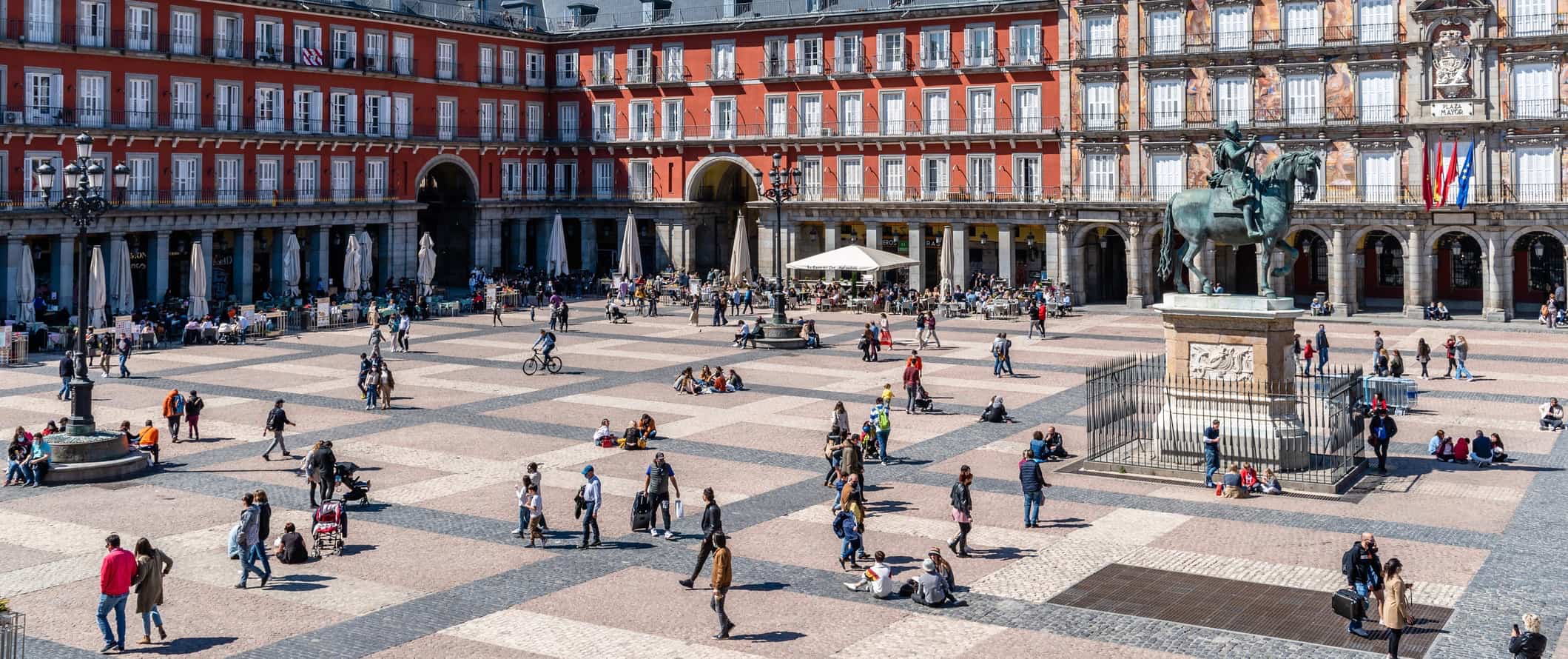
During the off-season, a bed in a room with 8 beds or more costs from 35-40 EUR per night while smaller rooms start at about 45-50 EUR. Free Wi-Fi is standard, and many hostels in the city also include free breakfast.
A basic private room for two with a private bathroom starts at 160 EUR per night during both peak season and off-season.
There are limited options for camping outside the city and prices are often more than hostels. Most charge around 20-30 EUR per night for a basic tent plot without electricity.
Budget hotel prices – Budget 2-star hotels start at 125-150 EUR per night during peak season. Expect to pay 90-100 EUR per night in the off-season.
Airbnb type rentals is available for those wishing to have more privacy or kitchens to cook their own food. Private rooms start around 50 EUR per night though they average closer to 80 EUR. Entire homes/apartments average 180 EUR per night though you can find them for as little as 100 EUR if you book early.
That said, Airbnb has caused a lot of problems in Madrid as it has pushed locals out of the city center and authorities are clamping down on illegal listings. Be sure yours has listed its tax ID number and avoid staying with hosts who have multiple listings (they are corporate housing disguised as Airbnb).
Food – Spain has a strong food culture, where meals can last hours and dinner isn’t served until after 8pm. Each region in the country has its own local dishes and food culture, all of which you can find in Madrid as it’s something of a culinary hub. Be sure to try local favorites such patatas bravas (spicy potatoes), beef stew, tortilla de patatas (Spanish omelet), and, of course, churros.
You can get a meal of cheap tapas for around 15 EUR. If you want wine included, expect to spend at least 20 EUR. At nicer tapas places you should plan to spend around 30 EUR for a meal with a drink.
Like any city, Madrid has meals for any budget. Most sit down spots cost around 35 EUR for a mid-range dinner of a dish like paella with a drink. On the other end of the spectrum, cheap fast food (think McDonald’s) costs around 8 EUR for a combo meal. Chinese food is around 9-12 EUR while pizza costs 10-15 EUR for a large.
Beer is 3–4 EUR, a glass of wine is 2-4 EUR, and a latte/cappuccino is around 2.50 EUR. Bottled water is about 1.50 EUR. (In general, tap water is safe to drink in Spain.)
If you buy your own food, expect to spend about 50-65 EUR for a week’s worth of groceries. This gets you basic staples like pasta, rice, seasonal produce, and some meat.
Backpacking Madrid Suggested Budgets
If you’re backpacking Madrid, expect to spend around 80 EUR per day. This budget covers staying in a hostel dorm, cooking most of your meals, limiting your drinking, taking public transportation to get around, and doing mostly free activities like free walking tours and relaxing in the parks. Add 10-20 EUR per day to your budget if you plan on drinking or partying a lot.
On a mid-range budget of 205 EUR per day, you can stay in a private room in an Airbnb or private hostel room, eat out at inexpensive restaurants for most meals, enjoy a few drinks, take the occasional taxi to get around, and do more paid activities like cooking classes and museum visits.
On a “luxury” budget of 365 EUR or more per day, you can stay in a nicer hotel, eat out more often, drink with most meals, take more taxis, and do more guided tours. This is just the ground floor for luxury though. The sky is the limit!
You can use the chart below to get an idea of how much you need to budget daily. Keep in mind these are daily averages – some days you spend more, some days you spend less (you might spend less every day). We just want to give you a general idea of how to make your budget. Prices are in EUR.
Madrid Travel Guide: Money-Saving Tips
Madrid can be an expensive city, especially if you indulge in the city’s famed food and drink. Accommodation prices have also risen a lot since COVID. Fortunately, you can trim your costs if you follow a few simple tips and tricks. Here are some general ways to save money in Madrid:
- Eat a large lunch – Lunch is much cheaper than dinner in Madrid. You can find “menu del día” which costs around 10-15 EUR for a large meal, typically consisting of an appetizer or salad, a main meat or fish dish, and a glass of wine or beer. Many also include a small dessert.
- Get the Madrid city card – The pass offers free public transportation and discounts to the Prado and other museums, as well as discounts to other popular tourist sites across the city. You can purchase a 24-hour card for 8.40 EUR, a 2-day card for 14.20 EUR, a 3-day card for 18.40 EUR, or a 4-day card for 22.60 EUR.
- Embrace free museum days – Lots of museums in Madrid are free on certain days or at certain times throughout the day. Others have free hours. For example, the Prado offers free entry Monday through Saturday between 6-8pm and Sundays between 5-7pm Be sure to check before you go because it’s far better to see one of the world’s best museums for free versus paying full price. You can ask at the tourism office as they hold a list there.
- Stay with a local – Couchsurfing is a great way to save money on accommodation while also getting some insight from the locals. While hostels aren’t too expensive in the city, this is still the best way to save money (as your biggest budget item is typically accommodations) and connect with an insider who can share their expert tips and advice.
- Take a free walking tour – This is one of my favorite ways to get to know a new destination — and you can’t beat the price! New Europe Walking Tours and Cat’s Hostel Walking Tours are the two most popular free tours in the city. Please remember to tip your guide at the end of the tour.
- Grocery shop at the markets – Fresh food can be bought for cheap at some of the daily markets in the city. Check out the Mercado de la Paz or Mercado de Maravillas for fresh produce, meat, and even some prepared foods like Tortilla Española (Spanish omelet with potatoes). You’ll save a ton compared to the supermarket and will have a chance to choose from the most seasonal produce.
- Bring a water bottle – The tap water here is safe to drink so bring a reusable water bottle to save money and reduce your plastic use. LifeStraw is my go-to brand as their bottles have built-in filters to ensure your water is always clean and safe.
Where to Stay in Madrid
Madrid has a ton of choices in a variety of neighborhoods and budgets. Here are the best hostels and budget hotels in Madrid:
- The Hat Hostel
- Sungate One
- Cats Hostel
- Petit Palace Puerta del Sol
- Hotel Indigo Madrid–Princesa
How to Get Around Madrid
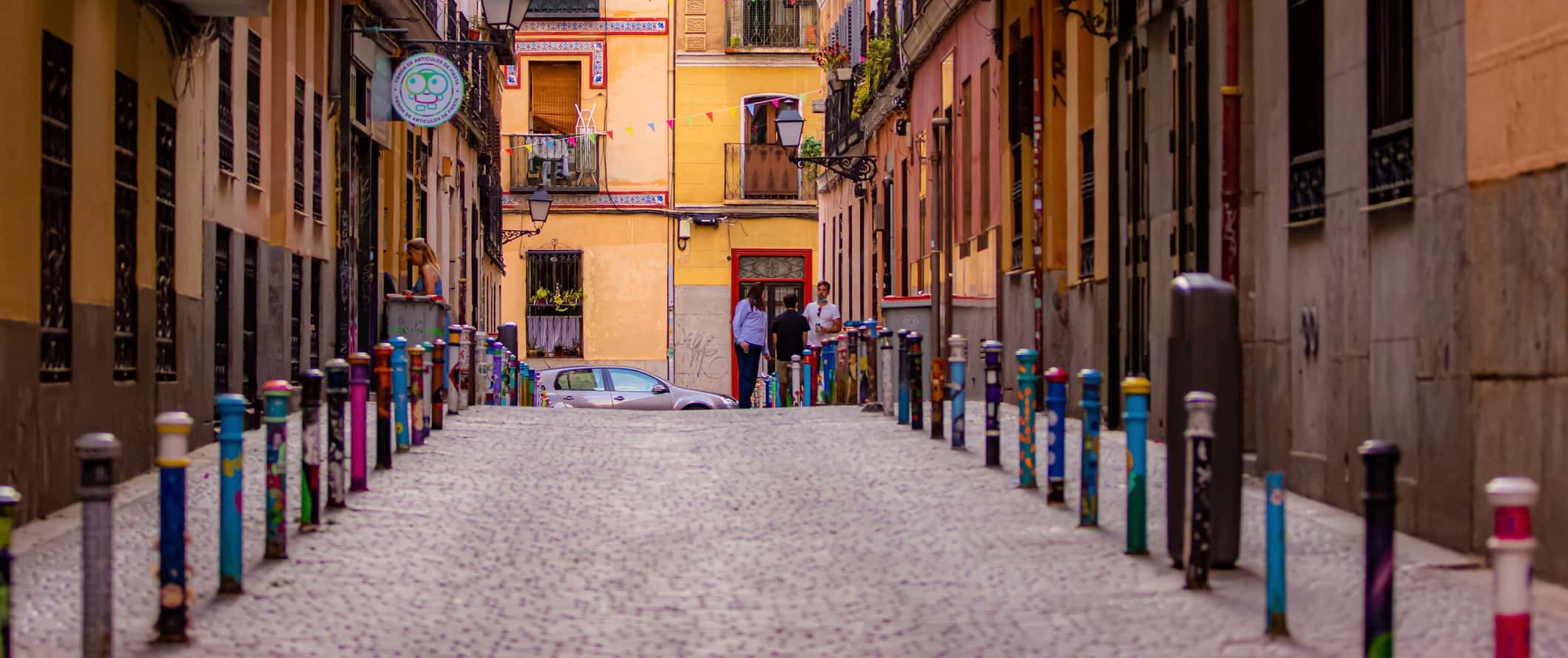
Public buses run all over Madrid from 6:30am-11:30pm (with some night routes also), and they cost the same as the metro. You can also get 10-journey cards from 11.20 EUR depending on your zones.
Tourist passes are available for unlimited usage on all public transportation, ranging from 1-7 days. They cost 8.40-17 EUR for a daily pass or 35.40-70.80 for a weekly pass, depending on the zones you need. Most tourists will only need a Zone A pass.
Bicycle – Madrid has an electric bike-sharing program called BiciMAD. Rentals start at 2 EUR per hour, and then it’s 4 EUR per extra hour.
Taxis – Taxis start at 3.25 EUR and then 1.10 EUR per additional kilometer. Skip them if you can, as prices add up fast!
Ridesharing – Uber is available in Madrid but Cabify is the more popular option for residents.
When to Go to Madrid
Madrid is a year-round destination like the rest of Spain, but during peak season (June-August) crowds are heavy, prices are highest, and the heat is oppressive. Daily temperatures soar well above 30°C (86°F) in the summer, so plan for hot weather. While the city is lively, you’ll need to book everything in advance as places sell out.
Personally, I think the shoulder season is the best time to visit Madrid (April-May and September-October). Tourist sites are much less congested, and prices for accommodation are lower. Temperatures are moderate, with average temperatures hovering around 64°F (18°C), which makes walking around or enjoying outdoor hikes or cycling much more pleasant Just bring a raincoat in case there are brief showers. In spring, expect parks full of blossoms, and in fall, outdoor events are still going strong.
Visiting in the winter is also doable, though the days can be chilly. While the weather isn’t great, you’ll get much of the sights and museums to yourself, and prices will be lower. Expect daily highs around 10°C (50°F). If you go in December, you’ll see the main squares decorated with large Christmas displays and bakeries full of seasonal treats.
How to Stay Safe in Madrid
Madrid is a safe city. Violent crime is very rare, though pickpocketing and petty theft are common, especially in the major tourist areas and on the metro. You need to be really careful with your stuff and always watch your pockets when you’re out and about — especially while on public transportation. The pickpockets here (and across Spain in general) a very talented!
If you need a taxi, especially from the airport, be sure to use the official white city taxis with a red stripe (there are some rogue drivers who may try to scam you into believing they are licensed. The fixed rate from the airport to the city center is 33 EUR, and you should not be charged extra for luggage that fits within the trunk.
If you go out at night, only bring the money you need. Leave the rest in your accommodation just in case.
Solo female travelers should feel safe here. However, the standard precautions apply (don’t leave your drink unattended at the bar, don’t walk around intoxicated at night, etc.). There are options for female-only hostels and some sites for female-only accommodation sharing. You can visit any one of the numerous solo female travel blogs for specific tips, as they will be able to provide advice.
Tourist scams are prevalent in the city, so keep an eye out for groups of kids trying to distract you, as they’re probably trying to take your money. Moreover, be wary of people offering to carry your luggage or take your photo, as they may try to charge you a large fee for the service. You can read about common travel scams to avoid here .
If you experience an emergency, dial 112 for police, ambulance, and fire services.
When in doubt, always trust your instincts. Make copies of your personal documents, including your passport and ID, in case of an emergency.
The most important piece of advice I can offer is to purchase good travel insurance. Travel insurance protects you against illness, injury, theft, and cancellations. It’s comprehensive protection in case anything goes wrong. I never go on a trip without it as I’ve had to use it many times in the past. You can use the widget below to find the policy right for you:
Madrid Travel Guide: The Best Booking Resources
These are my favorite companies to use when I travel. They consistently have the best deals, offer world-class customer service and great value, and overall, are better than their competitors. They are the companies I use the most and are always the starting point in my search for travel deals.
- Skyscanner – Skyscanner is my favorite flight search engine. They search small websites and budget airlines that larger search sites tend to miss. They are hands down the number one place to start.
- Hostelworld – This is the best hostel accommodation site out there with the largest inventory, best search interface, and widest availability.
- Booking.com – The best all around booking site that constantly provides the cheapest and lowest rates. They have the widest selection of budget accommodation. In all my tests, they’ve always had the cheapest rates out of all the booking websites.
- HostelPass – This new card gives you up to 20% off hostels throughout Europe. It’s a great way to save money. They’re constantly adding new hostels too. I’ve always wanted something like this and glad it finallt exists.
- Get Your Guide – Get Your Guide is a huge online marketplace for tours and excursions. They have tons of tour options available in cities all around the world, including everything from cooking classes, walking tours, street art lessons, and more!
- The Man in Seat 61 – This website is the ultimate guide to train travel anywhere in the world. They have the most comprehensive information on routes, times, prices, and train conditions. If you are planning a long train journey or some epic train trip, consult this site.
- Rome2Rio – This website allows you to see how to get from point A to point B the best and cheapest way possible. It will give you all the bus, train, plane, or boat routes that can get you there as well as how much they cost.
- FlixBus – Flixbus has routes between 20 European countries with prices starting as low 5 EUR! Their buses include WiFi, electrical outlets, a free checked bag.
- SafetyWing – Safety Wing offers convenient and affordable plans tailored to digital nomads and long-term travelers. They have cheap monthly plans, great customer service, and an easy-to-use claims process that makes it perfect for those on the road.
- LifeStraw – My go-to company for reusable water bottles with built-in filters so you can ensure your drinking water is always clean and safe.
- Unbound Merino – They make lightweight, durable, easy-to-clean travel clothing.
- Top Travel Credit Cards – Points are the best way to cut down travel expenses. Here’s my favorite point earning credit cards so you can get free travel!
- BlaBlaCar – BlaBlaCar is a ridesharing website that lets you share rides with vetted local drivers by pitching in for gas. You simply request a seat, they approve, and off you go! It’s a cheaper and more interesting way to travel than by bus or train!
- Take Walks – This walking tour company provides inside access to attractions and places you can’t get elsewhere. Their guides rock and they have some of the best and most insightful tours in all of Spain.
Madrid Travel Guide: Related Articles
Want more info? Check out all the articles I’ve written on Spain travel and continue planning your trip:

The 7 Best Hotels in Madrid
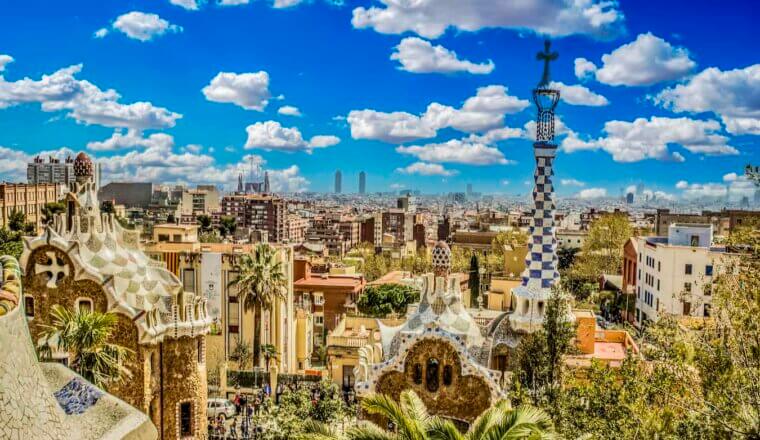
The 7 Best Hotels in Barcelona

The Best Walking Tours in Barcelona
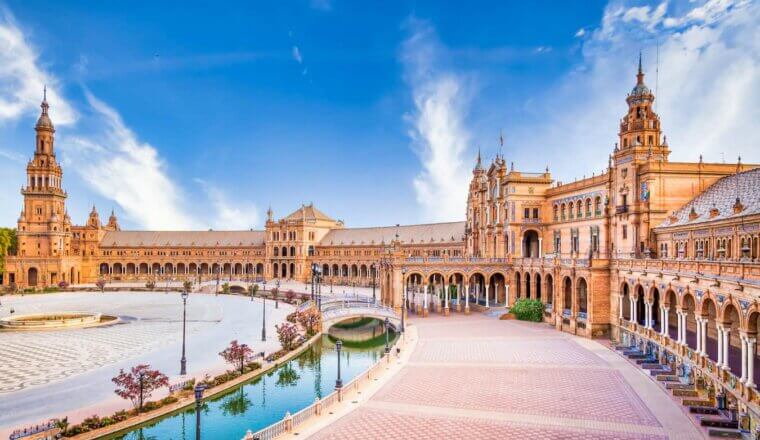
The Best Walking Tours in Seville

The Perfect 3 Day Granada Itinerary
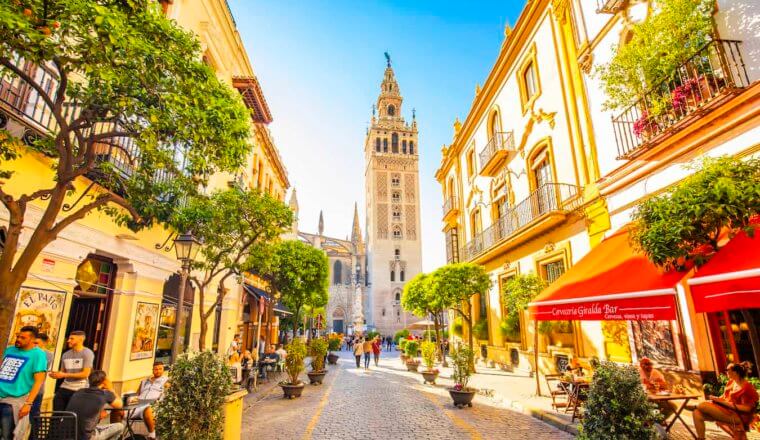
The 7 Best Hostels in Seville
Get my best stuff sent straight to you, pin it on pinterest.
- Where To Stay
- Transportation
- Booking Resources
- Related Blogs

- NEW: Submit your Testimonial
The Ultimate Backpacker’s Guide to Madrid on a Budget

Contrary to its European counterparts, Madrid offers a cost-effective escape with lots of free activities. From savoring free tapas to exploring museums at no cost, the city hides inexpensive treasures.
Eager for insider secrets to navigate it? Here’s our Madrid budget travel guide with every tip and hacks you need to backpack Madrid.
Guide Index
Travel costs: detailed breakdown.
- Explore Madrid: Things to Do
Where to Stay on a Budget
Eating and drinking.
- How to get around
- Best Time to Visit
Essentials, Money & Safety Tips
Madrid is a city that caters to all budgets. Here’s a quick rundown of what you can expect to spend per day:
Suggested Budget per person
- Low Budget: €50-75
- Mid-Range: €75-€125
- High-End: €125+
Detailed Costs: Madrid Travel Guide
Accommodation
- Low-Budget: Hostels or budget guesthouses: €20-€35 per night.
- Mid-Range: Mid-range hotels or B&Bs: €50-€80 per night.
- High-End: Luxury hotels or upscale apartments: €100+ per night.
Read: best hostels in Madrid .
Public Transportation
- Single Metro Ticket: €1.50
- Day Pass: €6.80
- 3-Day Tourist Pass: €18.90 (includes unlimited travel on public transport and free entry to many museums)
Entrance Fees
- Low-Budget (Mostly Free Activities): Royal Palace Gardens, Buen Retiro Park, El Rastro flea market
- Mid-Range: Prado Museum: €14, Reina Sofía Museum: €12
- High-End: Flamenco Show: €25-€50, Royal Palace Tour: €13
Restaurants
- Low-Budget: “empanada” (€2-€3) “bocadillo” (sandwich) crusty bread (€4-€6) from a local bar.
- Mid-Range: tapas bars where you can sample a variety of delicious small plates for €2-€4 each.
- High-End: Upwards of €200+ per person.
- Low-Budget: A coffee at a local bar can be had for just €1-€1.50.
- Mid-Range: Enjoy a leisurely coffee and pastry at a cafe for €2-€3.
- High-End: For specialty coffees or trendy cafes in tourist areas, expect to pay €3-€5.
Beer & Wine
- Low-Budget: A caña (small glass of beer) at a local bar will only set you back €1.50-€2.
- Mid-Range: A glass of wine or a beer at a mid-range restaurant or trendy bar will cost around €3-€4.
- High-End: Craft beers and special vintages can range from €5-€10 or more.
Exploring Madrid: Things to See & Do
Madrid is a city that explodes with life. From its world-class museums to its sprawling parks and energetic nightlife, there’s something for everyone. Here’s a glimpse of what you can look forward to:
Must Do in Madrid
- El Retiro Park: Escape the urban jungle and unwind in this sprawling park. Rent a rowboat on the lake, or simply relax among the manicured gardens and ornate fountains.
- Golden Triangle of Art: Hit the jackpot at Madrid’s famed art trio – the Prado Museum (Spanish and European masterpieces like Velázquez’s Las Meninas), Reina Sofía Museum (modern and contemporary art including Picasso’s Guernica), and Thyssen-Bornemisza National Museum (everything from Renaissance to Pop Art by Van Gogh and Monet). Consider purchasing the Paseo del Arte pass for discounted entry.
- Royal Palace of Madrid: Gape at the opulent residence of the Spanish royal family. Witness the changing of the guard ceremony (free) for a dash of pomp and circumstance.
- Puerta del Sol: The symbolic center of Spain. Look for the iconic bear and strawberry tree sculpture.
- Plaza Mayor: Mingle with locals in this main square, once the heart of Habsburg Madrid. Grab a coffee and soak in the atmosphere, watching street performers or browsing souvenir shops.
- Temple of Debod: Transport yourself to ancient Egypt with this stunning ancient Egyptian temple donated to Spain. Enjoy the sunset views from its idyllic location overlooking the city.
- Gran Vía: Madrid’s dazzling Broadway boasts theaters, shops, and buzzing energy. Window-shop catch a street performance for free entertainment, or snag discounted tickets to a last-minute show.
- Flamenco Show: Witness the fiery passion of flamenco at a tablao (flamenco venue). Many offer budget-friendly options, letting you experience this traditional Spanish dance.
- Tapas Crawl: Indulge in Madrid’s quintessential food scene. Sample delicious bites and local wines at various tapas bars – a delightful (and affordable) way to dine. Choose your tapas based on ingredients or explore a specific region’s cuisine.
- El Rastro Flea Market: Hunt for treasures at El Rastro, Madrid’s sprawling weekend flea market. You never know what hidden gems you might unearth, from vintage clothing and antiques to quirky souvenirs.
Free things to do in Madrid – Save money!
- Explore Lavapiés: This multicultural neighborhood boasts street art, delicious ethnic eats from around the world, and a bohemian charm.
- Free Walking Tours : Get your bearings and historical insights with a free walking tour. Tips are always appreciated, but not mandatory. These guided tours cover major landmarks and hidden gems.
- Relax in Retiro Park: People-watch, picnic on the manicured lawns, or simply stroll through the park’s scenic grounds, enjoying the fresh air and lush greenery – all for free! Rent a boat on the lake for a romantic touch.
- Cibeles Fountain and Buen Retiro: Snap photos at these iconic landmarks – the majestic Cibeles Fountain, a neoclassical beauty with a chariot pulled by lions, and the ornate Buen Retiro Palace, a former royal residence.
- Admire Street Art: Marvel at the street art scene in Malasaña and Lavapiés. It’s like an open-air museum, showcasing works by local and international artists!
- Change of the Guard Ceremony: Witness the changing of the guard ceremony at the Royal Palace – a free and impressive display of military precision, held every Wednesday and Sunday mornings.
Tops Museums in Madrid
- Prado Museum: Get lost in a world of Spanish and European masterpieces, including Velázquez’s Las Meninas, Goya’s Saturn Devouring His Son, and works by Titian, El Greco, and Rembrandt.
- Reina Sofía Museum: Immerse yourself in modern and contemporary art, featuring Picasso’s iconic Guernica, Dalí’s melting clocks, and works by Miró and Juan Gris.
- Museo Nacional Centro de Arte Reina Sofía: Discover a collection of 20th and 21st-century Spanish and international art.
- Tapas Museum: Foodies can delve into the history and culture of tapas at this unique museum (entrance fee applies). Learn about the evolution of tapas, see traditional preparation methods, and admire interactive exhibits.
- CaixaForum Madrid: See temporary exhibitions showcasing a variety of art forms, from photography and sculpture to installations and multimedia displays.

Finding a budget-friendly place to stay in Madrid is totally doable. While the city center (think Puerta del Sol and Gran Vía) boasts luxurious hotels and a nonstop buzz, it also comes with a luxurious price tag. But Madrid also has a wealth of character-filled neighborhoods that are easy on the wallet and brimming with local charm.
Here’s a quick rundown of some great areas to stay in Madrid on a budget – Best for backpacking Madrid:
1. La Latina: This medieval labyrinth is a backpacker’s paradise. Think narrow, winding streets overflowing with tapas bars, trendy cafes, and hidden squares. By day, explore historic churches and charming plazas. By night, lose yourself in the bar-hopping frenzy until the wee hours. Just be prepared for the fiesta atmosphere, as things can get loud, late into the night.
2. Lavapiés: This multicultural melting pot is a feast for the senses. Street art explodes from colorful walls, aromatic spice shops line the streets, and international restaurants offer a global smorgasbord. While not the most posh area, Lavapiés is undeniably energetic and authentic. Just keep an eye on your belongings, as petty theft can be an issue in some parts.
3. Malasaña: Once a working-class area, Malasaña is now a hipster neighborhood. Quirky vintage shops rub shoulders with independent art galleries, and trendy cocktail bars pulsate with energy. By day, browse through unique finds and sip on craft coffee. By night, the area transforms into a party zone, attracting a young crowd.
4. Chueca: Madrid’s LGBTQ+ heart throbs with a unique energy. Rainbow flags flutter proudly, and a sense of inclusivity floats the air. The area has a fantastic selection of trendy tapas bars, upscale restaurants, and chic boutiques. While not the cheapest option on this list, Chueca offers a cool and welcoming atmosphere.
Forget fancy Michelin-starred restaurants! Filling your belly in Madrid is an adventure for the taste buds that won’t leave your wallet feeling empty. Here’s the ultimate guide to eating like a local maestro, all on a shoestring budget:
Water: Madrid’s water is your best friend. Unlike some countries, tap water here is perfectly safe to drink. Save those precious euros and fill up your reusable water bottle at any fountain or tap you find.
Where to Find Affordable Food in Madrid
- Bar Hopping Like a Boss: Tapas bars are the beating heart of Madrid’s culinary scene. Forget expensive sit-down meals and embrace the social side of eating. Order a caña (small glass of beer) and a tapa or two at one bar, then hop to the next for another round of culinary exploration.
- Insider Tip: Avoid the tourist traps in the main squares. Venture a few streets back into the labyrinthine neighborhoods, where hidden gems offer equally delicious tapas at local prices.
- Menús del Día: Look for restaurants with a sign displaying “menú del día” (menu of the day). This local hero is your knight in shining armor when hunger pangs strike. For a fixed price, usually around €10-€15, you’ll get a starter, main course, drink, and sometimes even dessert. It’s a hearty and delicious meal that won’t break the bank.
- Bonus Tip: These menus are typically offered at lunchtime, so plan your exploring around this budget-friendly feast.
Madrid Food Markets
- Mercado de San Miguel: While pricier than some, it’s a visual feast with gourmet tapas stalls showcasing Spain’s culinary diversity. Think glistening seafood displays, colorful pintxo counters, and jamon (cured ham) hanging like glistening works of art. Perfect for a special occasion or just window shopping with a rumbling tummy.
- Mercado de la Ribera: Experience the authentic buzz of a traditional market at La Ribera. Locals come here for the freshest seafood haul, from glistening sea bass to plump mussels. Grab a stool at one of the bars inside and savor a plate of just-caught prawns washed down with a caña. It’s Madrid on a plate, and at local prices too!
- El Rastro Flea Market (Sundays Only): This sprawling Sunday market isn’t just about vintage treasures. Foodies rejoice! Many vendors offer mouthwatering street food, from piping hot churros dusted with cinnamon sugar to sizzling bocadillos overflowing with cured meats and cheese. Come hungry and explore the edible delights alongside the market’s other hidden gems.
Affordable Snacks and Dishes: Madrid Backpacking
- Bocatas: The Humble Hero: Don’t underestimate the power of the humble bocadillo. These crusty bread sandwiches come in endless variations, from the classic tortilla española tucked inside to melt-in-your-mouth jamon Iberico. They’re a cheap, filling, and incredibly delicious option for a quick lunch or on-the-go snack.
- Empanadas: A Savory or Sweet Surprise: Flaky pastries filled with a world of flavors – that’s the beauty of empanadas. From savory options bursting with meat and vegetables to decadent sweet fillings like chocolate and dulce de leche, there’s an empanada to satisfy every craving. Grab one from a local bakery for a delightful and affordable treat.
- Pintxos: A Colorful Skewered Adventure: Similar to tapas, pintxos are bite-sized delights typically found in northern Spain, but they’re becoming increasingly popular in Madrid. Bars often have a counter overflowing with colorful pintxos, from skewered shrimp to mini potato tortillas. Perfect for grabbing a quick bite or creating your own personalized skewered feast.
Backpacker-Friendly Groceries in Madrid
- Dia: This Spanish supermarket chain is your go-to for discount groceries. Stock up on everything from fresh produce to pantry staples at competitive prices.
- Lidl: Another budget-friendly supermarket option with a good selection of private-label products. Great for grabbing essentials like pasta, rice, and canned goods without putting a dent in your wallet.
- Mercados Municipales (Municipal Markets): Many neighborhoods boast their own local markets, offering a treasure trove of fresh produce, meat, cheese, and other essentials. Mingle with the locals and snag the freshest ingredients at competitive prices.
- Bonus Tip: Head to the market towards closing time for even better deals.
How to Get Around
Navigating Madrid is a breeze with its extensive and affordable public transportation system. Here’s a breakdown of your options to get you around the city like a local:
Understanding Madrid’s Public Transportation
- Metro (Metropolitana): Madrid’s red subway system is the backbone of public transportation. With 13 lines and over 300 stations, it can whisk you almost anywhere within the city limits quickly and efficiently. Tickets and passes are valid across the entire Metro network.
- EMT Buses: The blue and yellow EMT (Empresa Municipal de Transportes) buses complement the Metro, reaching areas not directly served by the subway. An extensive network with over 200 lines, they’re a great way to see the city from a different perspective and get off the beaten path.
- Cercanías (Commuter Trains): The green Cercanías trains are a fantastic option for venturing slightly further out of central Madrid. These commuter trains connect the city with surrounding towns and suburbs, perfect for day trips to historical sites like El Escorial or Toledo.
- Taxis: While not the most budget-friendly option, taxis are readily available throughout the city, especially near major tourist spots and train stations. They can be handy late at night or for carrying heavy luggage. Just be sure to hail an official taxi (easily identified by its white body and red stripe) and agree on a fare beforehand if you’re unsure about the cost.
- Billete Sencillo (Single Ticket): Your go-to option for occasional rides. Valid for one journey on any mode of public transport within zone A (covers central Madrid). At €3, it’s a steal but gets pricier if you travel outside zone A.
- Tarjeta Multi (Multi-Journey Ticket) : This lifesaver offers a set number of trips within a specific timeframe. Perfect for backpackers on the go, they come in 10-trip (€12.20) and 30-trip (€38.30) options.
- Abono Transporte (Transport Pass) : For longer stays, consider the Abono Transporte, a monthly pass that gives you unlimited rides within a specific zone (prices vary depending on the zone).
Cheapest Way to Get To and From the Airport in Madrid
Madrid-Barajas Airport (MAD) is your gateway to the city. Here’s how to get to the city center without blowing your travel budget:
- Metro: The most budget-friendly option! Line 8, the pink line (distinguishable by its color and cute octopus mascot), connects all terminals directly to Nuevos Ministerios station in central Madrid. The ride takes around 15 minutes and costs a flat fee of €5.10 (including the airport surcharge).
- Cercanías: A slightly slower but even cheaper alternative is the cercanías trains (C1 and C10 lines). The journey takes about 30-40 minutes and costs less than €3. Keep in mind these trains make more stops and might be a bit slower, but they’re perfect if you’re feeling adventurous and want to experience the local commute.
- Buses: The Airport Express Bus (line 203) is a comfortable option, costing €5 and taking around 40 minutes to reach Atocha station. While not the cheapest, it might be a good choice for those with bulky luggage or wanting a more comfortable ride.
Bonus Tip: While walking might not be feasible for the entire city, exploring central Madrid on foot is a great way to discover spots that often go unnoticed.

Best Time to Visit Madrid
Madrid’s a city that sizzles with life year-round, but choosing the perfect time for your visit depends on your priorities. Here’s a breakdown of the high, shoulder, and low seasons to help you decide:
- High Season (July & August):
Pros: Long sunny days, cool festivals, great atmosphere. Cons: Scorching heat, sky-high prices, overflowing crowds.
- Shoulder Season (April-June & September-October):
Pros: Pleasant weather, fewer crowds, good hotel deals. Cons: Some businesses close in August, with unpredictable spring showers (April-May).
- Low Season (November-March):
Pros: Rock-bottom prices, shorter queues at attractions. Cons: Chilly weather, shorter daylight hours, some shops have limited hours.
National Holidays & Peak Festivals:
Keep an eye out for these events that can inflate accommodation prices and bring bigger crowds.
- January 6th – Three Kings Day (Fiesta de los Reyes Magos): A gift-giving extravaganza with parades and celebrations, expect higher hotel rates.
- March/April (movable dates) – Holy Week (Semana Santa): Solemn processions, religious services, and cultural events throughout the city. Book hotels well in advance as this is a popular time for Spanish travelers.
- Mid-May (movable dates) – San Isidro Festival: A two-week fiesta dedicated to Madrid’s patron saint. Expect bullfighting, flamenco shows, open-air concerts, and traditional celebrations. Brace yourself for crowds and higher accommodation costs.
- May/June (movable dates) – Feria del Libro (Book Fair): A paradise for bibliophiles with book stalls lining the Paseo del Prado. Amazing atmosphere and author signings attract crowds, so consider booking accommodations in advance.
- December – Christmas (Navidad): Festive cheer fills the air with magical Christmas markets and celebrations. Prepare for higher prices and potential crowds, especially around Christmas Eve and New Year’s Eve.

Before you conquer the cobbled streets, make sure your backpack isn’t a bottomless pit of random stuff. Here’s a cheat sheet to pack smart and stay safe in this city:
Backpacking Madrid Essentials:
- A Sturdy Daypack: Ditch the suitcase! Madrid is a walkable city, and you’ll want a comfortable backpack that won’t leave you feeling like a pack mule.
- Sun Smarts: Those Castilian summers are scorchers. Pack a hat, sunglasses, and sunscreen (SPF 30 or higher) to avoid turning into a sweaty tomato.
- Reusable Water Bottle: Stay hydrated and save some cash by ditching single-use plastic. Madrid boasts many public fountains where you can refill your bottle.
- Comfortable Walking Shoes: Madrid’s charm lies in its walkable streets. Pack comfy shoes that can handle cobblestones and endless tapas bar hopping.
- Universal Adapter (Optional): Spanish outlets are two-pronged, so if you’re coming from a different country, consider packing a universal adapter to keep your gadgets juiced up.
Madrid Safety Tips
- Pickpocket: Madrid, like many European cities, has its share of petty theft. Keep your valuables close (front pockets or a money belt), avoid wearing flashy jewelry, and be extra vigilant in crowded areas like the metro and popular tourist spots.
- Metro Manners: The Madrid metro is efficient, but beware of rush hour – it can get a little too “cozy” for comfort. Keep a firm grip on your belongings and avoid using your phone while standing close to the doors.
Madrid Common Scams
- Expensive Bottled Water: As mentioned before, skip the overpriced bottled water and refill your reusable bottle at the many public fountains throughout the city.
- Fake Flamenco: Madrid offers some truly spectacular flamenco shows, but avoid tourist traps that promise “authentic” flamenco for a cheap price. Do your research and choose a reputable venue.
- Sangria Shenanigans: Sangria can be a delicious way to experience Spanish culture, but those giant jugs of neon-red concoctions sold at tourist traps are usually sugary and overpriced. Stick to traditional tapas bars with a good wine selection.
- Siesta Siesta Siesta: While many shops do close for a siesta break in the afternoon (usually 1:30-5 pm), major tourist attractions and restaurants generally stay open. Plan your exploration accordingly to avoid disappointment.
Madrid Travel Tips Reminder
- Tapas: Tapas bars are a budget traveler’s dream. Order small plates to share and you’ll be able to eat on a budget. Pro tip: head to neighborhoods outside the city center for even better deals!
- Markets: Check out local markets like Mercado de San Miguel or La Boquería for fresh produce, cured meats, and delicious snacks at a fraction of restaurant prices. They’re perfect for picnics in the park or stocking up on hostel groceries.
- Museum Magic: Many Madrid museums offer free admission during specific hours. The Prado Museum, for example, grants free entry from 6-8 pm Mondays through Saturdays and Sundays/holidays from 5-7 pm. Plan your itinerary accordingly and you’ll be able to check out popular museums for free.
- Pass Power: Consider purchasing a tourist pass like the “ Abono Transporte Turístico ” for unlimited travel on public transport (metro, buses) and even suburban trains. This can be a great money-saver if you plan on doing a lot of sightseeing.
We are 100% Independent: Some links on Hostelgeeks are so-called affiliate links. If you decide to book through these links, we earn a small commission at no extra cost to you . Your support allows us to keep producing high-quality, independent content free of influence from hostels or external advertisers. Learn more here . 🙏
✏️ Read our Editorial Guidelines

Madrid on a budget: 8 travel hacks to save on your trip
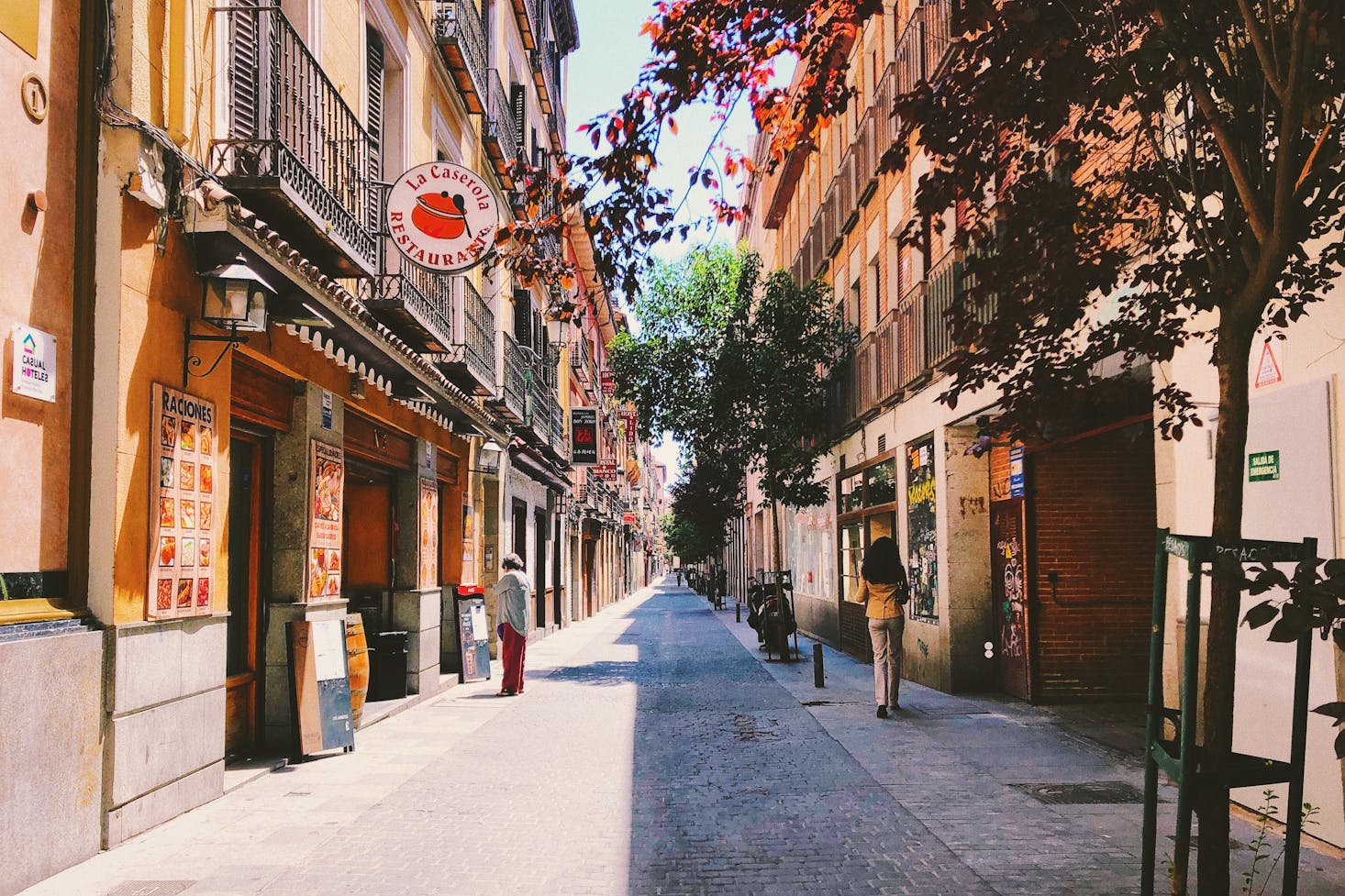
Visiting Madrid might seem like a faraway dream if you are worried about your travel budget. There are many people who think that they cannot afford to travel to the Spanish capital when they look at the costs of visiting Madrid on a regular travel plan. But when you choose to make the most of your budget and save on some key parts of your trip, you will find that you can visit Madrid on nearly any budget with ease. Madrid’s city center is easy to reach with lots of affordable hotel accommodations, and getting around the city center on foot is very realistic.
Between free walking tours to places like Plaza Mayor or Caso de Campo park, free entry to some sightseeing locations, and things like free tapas during special times of the day in the city, visiting Madrid on a budget can be much more attainable than you have probably realized. Make sure that you don’t worry about your bags and your personal items while you are traveling by putting your bags in secure storage with us . We will keep your items safe while you have fun visiting Madrid!
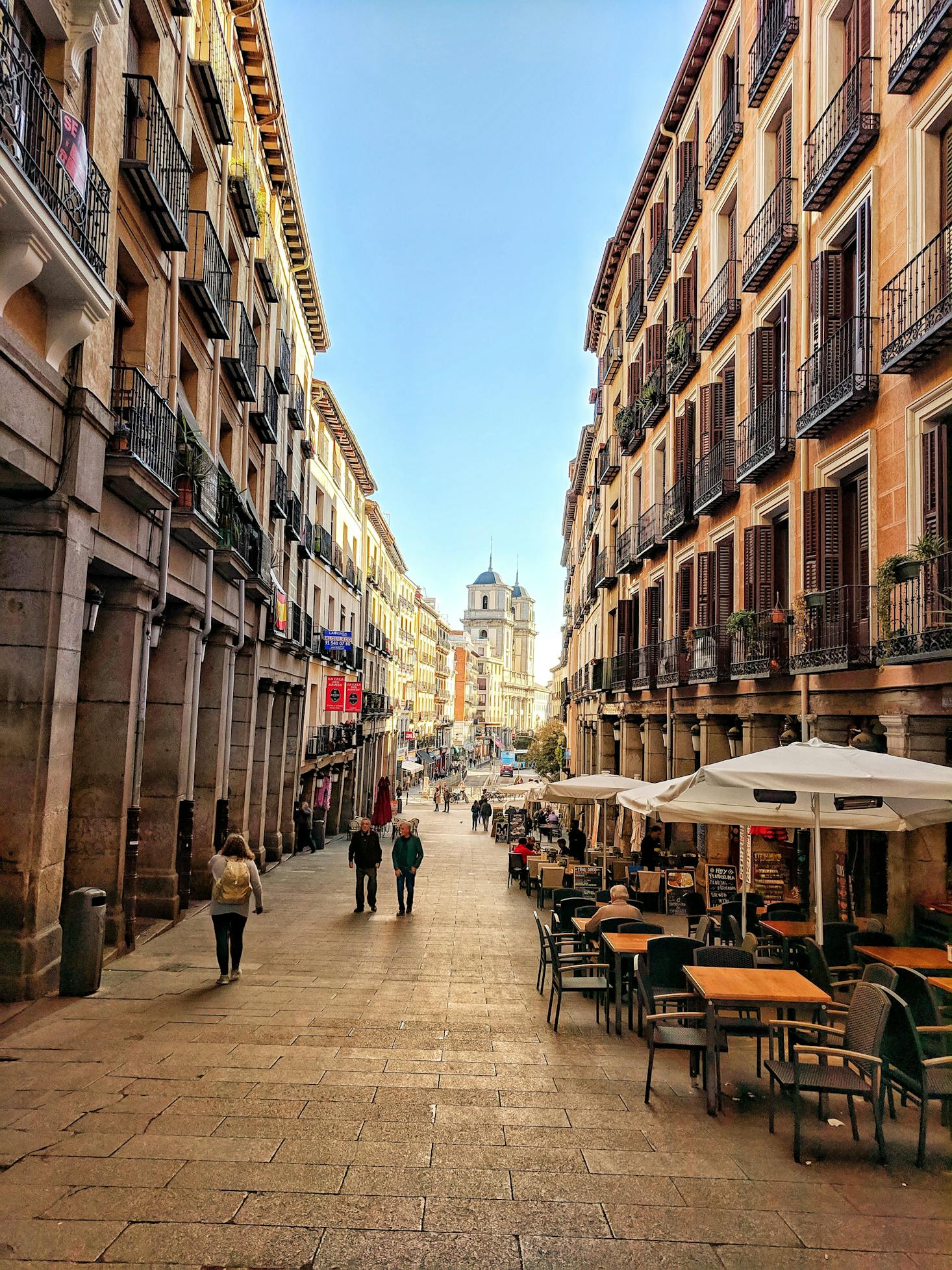
Cheap places to stay in Madrid
Choosing the right place to stay in Madrid can save you time and money. If you are not sure which neighborhoods are the right ones for your needs, check out our guide to the best neighborhoods to stay in when you are in Madrid . If you visit Madrid on a budget, your hotel stay will be the perfect way to save money so that you can experience everything on your list.
Artistic Bed and Breakfast
B&B locations are always a good bet when you are traveling on a budget, and you can count on friendly service and a family feeling when you choose this spot for your home base while you visit Madrid. You will be about 15 minutes from cool things to see and do, like the Reina Sofia Museum, and you can easily get on public transit from this spot too.
Rooms are about $70 a night here, and you will get free wi-fi and excellent food here. The shared living area is also really cozy and comfortable.
Central Palace Madrid
While a bit more expensive than a B&B, this location offers rooms for about $140 a night, which is really great for a hotel in this location. Plus, it feels really inviting and upscale, and you will love the comfortable beds and the peace and quiet here. There is a complimentary breakfast each morning, and you will get free wi-fi during your stay. You are close to the Opera metro station here, and the Plaza Mayor is just a few minutes away on foot.
Generator Madrid
Rooms at this cool hostel location start at just $55 a night! You are minutes from Plaza de Espana here, and you can easily hop onto public transit to go anywhere you want to go while you visit Madrid. There are also lots of eateries and shopping to enjoy here in this area. Your room will come with free wi-fi, and you will be treated to an on-site bar and a rooftop terrace as well. The rooms vary in the number of occupants, so you can pick and choose the kind of room that you want to stay in as well. There are also some private rooms on offer if you book in advance.
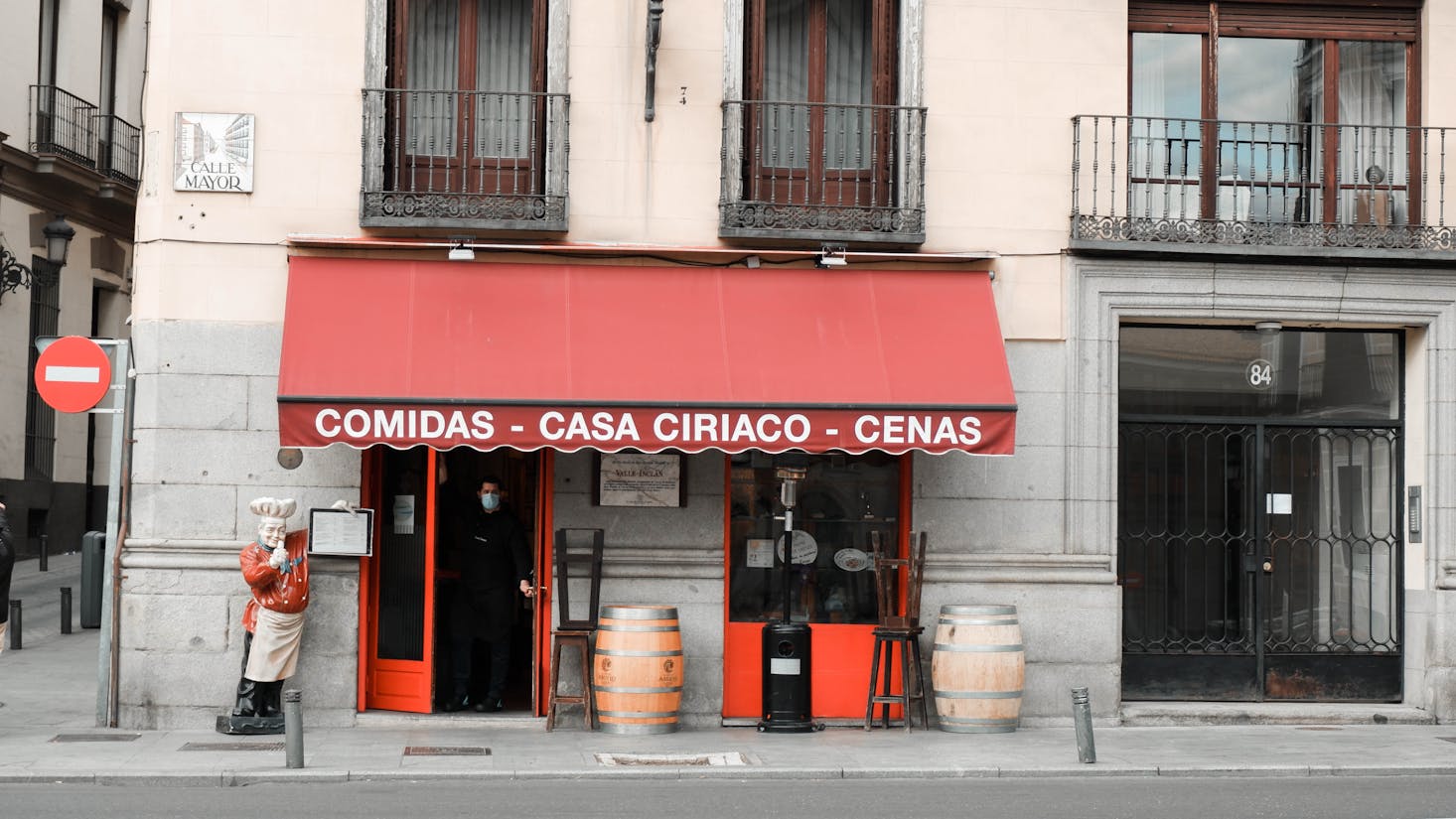
Cheap things to do In Madrid
There are many things that you probably want to see and do when you are in Madrid. You probably want to make time to see Plaza de Espana as well as many of the other cultural sites around the city. Believe it or not, there are many really affordable options for things to do in Madrid to help you save money while you travel. Heading to Madrid on a budget does not mean that you will have to be bored every day!
Rent a Boat at El Retiro Park
El Retiro park is enormous and really beautiful. You can head to the lake in the middle of the park and rent a boat for about $5 or $6. Many people just lounge in the boat in the sun, but you can also paddle around and see some of the sights of the park in your little barca. This is a great way to get some sun and have a nice, relaxing afternoon without breaking the bank. It can be amusing to try and learn to navigate in your boat as well, and if you have never tried this kind of activity, be sure to be patient with yourself as you figure it out.
Visit the Royal Palace
The Royal Palace dates back to the 1700s, and you can get access to see this beautiful building for about $11. The gardens on the property are absolutely lovely as well. The current palace actually sits on top of the ruins of a Muslim Castle and also the ruins of the Alcazar of Madrid, which was destroyed by a fire. There is a ton of history to enjoy here, and you can walk around on your own or opt to spend a little more money to take a tour.
Rent a Bike
Renting a bike is a great way to see the city and save some money at the same time. You can find various rental companies all throughout the city, and the average cost of a day’s bike rental is about $40. With a bike in hand, you can enjoy visiting Madrid at your own pace. Head to Madrid’s city center, ride over to Puerta del Sol , visit the Plaza Mayor, or head to Retiro Park. You will find that many of the best museums, like Prado Museum, are easier to get to on a bike, and you will get a little bit of a workout in to help offset what you might have eaten during a food tour.
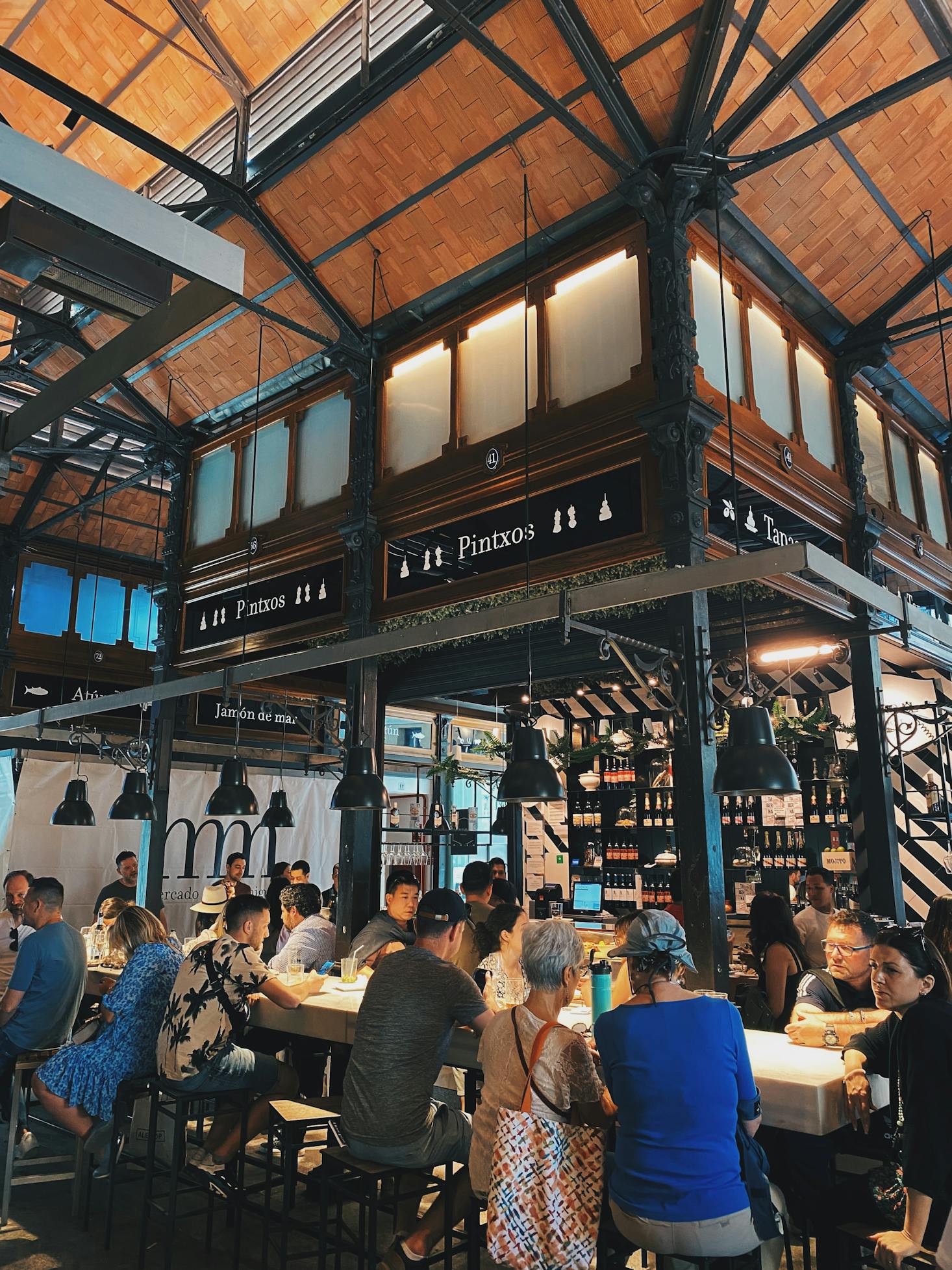
Cheap places to eat in Madrid
100 montaditos.
While technically fast food, this chain of restaurants offers really good food options for a great price. You can get various sandwiches, sides, and tapas at these shops without breaking the bank. Plus, this is a fast service location, which can be ideal for those who are on the go. You can easily get a great meal for less than $10 here, and you might find that some of the dishes are large enough to feed more than one person. This is a great tip for those in Madrid on a budget who want to eat well.
Mercado San Miguel
Mercados are a great place to find all kinds of food in Madrid and also an ideal place to partake of the best street food in Madrid . This location offers you tons of stalls to visit, offering food from all over the world for great prices. Tapas, dessert stalls, and places that offer drinks are packed into this mercado. You will also be able to sample wines and sherries for a great price while you wander. You can sit and snack inside the Mercado, or take your food to go, or even eat as you walk!
Sidrería El Tigre
The tapas here are delicious, and they are offered at a great price. This area of the city is friendly to students, and the pricing is what you would expect if the normal crowd is young and needs to save money. They offer lots of specials where you can get a cider along with a specific kind of food order, and you can enjoy happy hour here as well. El Tigre is a lot of fun, and you can get a lot of food for under $15 a plate here.

Cheap bars in Madrid
Bar el palentino.
This fun location is essentially a city landmark. This is a well-known hangout for locals, and you will not have to deal with lots of tourists here when you visit, which can be nice. The location is charming, and the service is friendly. Expect practical drinks, beer, and basic cocktails, along with low-frills food offerings. This is basically a dive bar but one with a ton of character and great prices. A full meal with drinks here is about $25 dollars a person, but you can get drinks for anywhere from $5-$10.
Macera TallerBar
Want some classic cocktails or a pint of beer for $5 or less? Then you need to head to this cool little bar on Calle de San Mateo. You will be treated to lots of spirits that are made in-house here, such as their various kinds of gin, and the atmosphere is really trendy and charming. The cups and glassware are also really creative, which can make drinking and chatting here really fun and unique.
Café de la Luz
This charming little bar is affordable, and it’s also really fun! Designed to seem like a living room in someone’s home, this bar offers you places to sit like couches and overstuffed chairs. They welcome people to come in and order a drink and just read a book or hang out, and you will love the relative quiet and comfort of this bar that is different from a club or a sidewalk café. Head here for drinks that are $5 or less and atmosphere for days.
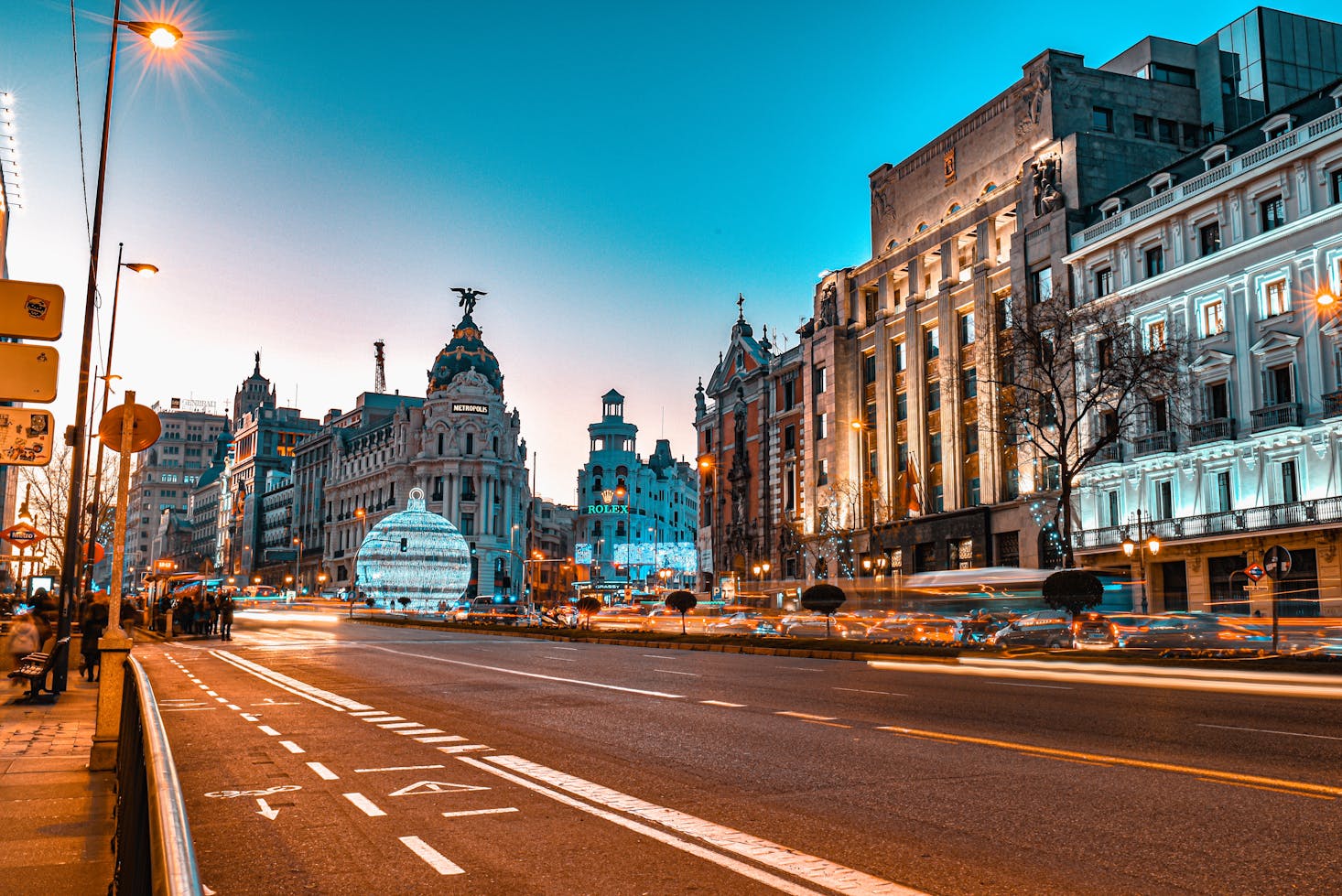
Bonus Budget Tips for Madrid
Free walking tours are a great way to see the city and ensure that you don’t miss out on anything while you are in Madrid. There are all kinds of different themes for these tours, so you will be able to find the perfect set of attractions in the right part of the city with ease. Many of these tours will take you to the city center, Puerta del Sol, or Plaza Mayor. You might also be taken to the Royal Palace. You can usually pick up tips and suggestions about these tours at hostels all over the city, or you can look for them online. Some of them are self-guided, while others just require that you tip your guide at the end of the tour.
If you love nightlife but have a strict travel budget, you will need to head to the Barrio de la Latina. There are little tapas bars, drinking establishments, and street performers all over this part of the city. You can easily have an entire night of fun in this section of the city, and you will not need to have tons of cash on hand to make the most of a night on the town if you head here. The nightlife in Madrid on a budget doesn't have to let you down, and this street will offer you everything you have been thinking of for a night out.
If the museum fees look too steep to you, look again! Most of the major museums in the city offer free entry for a small portion of each afternoon. If you plan carefully, you should be able to tour all of the major cultural locations in the city center for free from about noon to four. Some of these locations are closed a few days out of the week, so you should check on the location’s hours before making plans each day. Locations like Prado Museum are must-visits here in the Spanish capital.
If you love food and you don’t have a big budget, you should join a food tour for at least one of your days in Madrid. These tours are reasonably priced, and you will be taken all over the city to try different kinds of food and drinks. Most of the food and libations are included in your tour fee, and the tour guides make it clear which items have added charges or fees associated with trying them out. This is a great way to see and experience Madrid on a budget without feeling like you are giving up anything.
If you are traveling with a big group of people or have kids with you that need to be entertained, you will want to be sure to check out our guide to the best free things to do in Madrid . Between saving money on food and lodgings and being frugal with some of these other tips in mind, you should have no trouble filling up your days with things to do and see while you are in Madrid. Traveling to Madrid on a budget doesn’t mean giving up on seeing the things that you want to see!
Visiting Madrid on a budget might actually help you to enjoy more fun local adventures, and you might find that you have been missing out when you have been traveling with a larger budget. Sometimes getting into the nitty gritty of daily life in a new place can help you to have a much more enjoyable and special experience than you could ever have if you confined your visit to the spendy parts of the city center.
Explore the world

Love discounts and traveling?
Sign up for our newsletter to get insider travel tips and a 10% discount delivered straight to your inbox.
No spam here, just the good stuff.
Get the Bounce app
Instantly find locations nearby to drop off your luggage wherever you go.
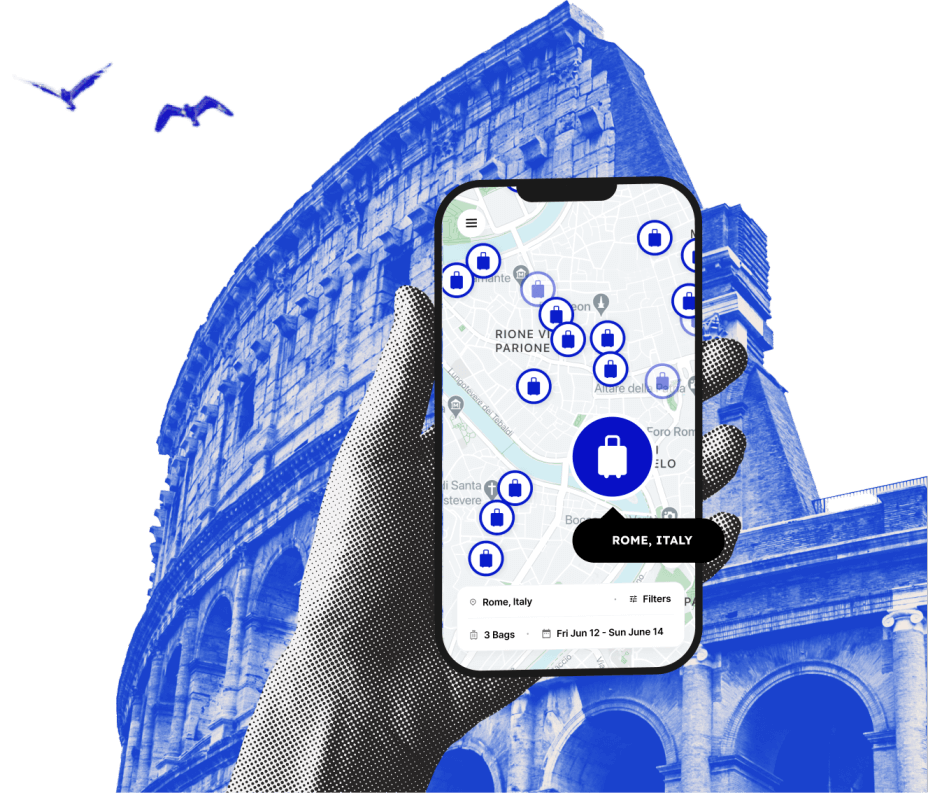

20 Spain Travel Tips & Must-Knows Before You Go
Last Updated: July 6, 2023
*FYI - this post may contain affiliate links, which means we earn a commission at no extra cost to you if you purchase from them. Also, as an Amazon Associate I earn from qualifying purchases. Check out our Privacy Policy and Disclosure. for more info.
The following list of Spain travel tips is brought to you by Sydney from Alone and Abroad , an American living in Spain! Read on for some of her top tips & must knows before visiting Spain as a tourist.
Beaches, sangria, and cathedrals, oh my! Between the history, the food, and the weather, Spain can feel like paradise on earth. Over 80 million people visit this beautiful country every year, and it’s easy to understand why.
There are hundreds of guides that tell you where to stay or what to see in Spain, but it’s much harder to learn about the more practical, day-to-day tips. What culture shocks should I expect? How am I going to get around? What’s the restaurant etiquette?
Fear not! Here are 20 practical travel tips on what to know before visiting Spain.

Save this list of Spain travel tips for later!
You’ll be very glad you did.
1. Learn How to Spot a Good Restaurant
The best restaurants are rarely the ones with the cute views of the plaza.
Those can be wonderful places to soak in the ambiance and people watch, but to find affordable, quality tapas you need to go where the locals go.
When on the lookout for a restaurant that caters to locals, there are a few things to be mindful of. Is the menu primarily in English? Is there an A-frame sign posted outside with large pictures of menu items? Odds are, that’s a tourist trap.
But if the menu is entirely in Spanish, you’re several blocks away from the nearest tourist attraction, and you don’t see any pictures on the menu, you’re probably in for one of the best meals of your life.
2. Use the Bravas Rule
Patatas Bravas are one of the most popular tapas in Spain. Crispy fried potatoes, covered in a mildly spicy tomato sauce – does it get any better than that?
In Spain, there is something called the Bravas rule , which means that the best way to test if a restaurant is good is to order the patatas bravas. If the bravas are good, everything else on the menu will be too!

3. Learn how to get free water
There’s a myth circulating online that water in Spanish restaurants isn’t free. I’m not quite sure where this rumor started, but contrary to popular belief, water in Spanish restaurants can be free!
All you have to do is ask for it the right way. If you just ask for water, it’ll be assumed that you want a bottle or a pitcher of water, which you will be expected to pay for.
But if you ask for a cup of water (un vaso de agua) it will be free!
4. Understand Spain’s Language Diversity
Spanish isn’t the only language spoken in Spain. While it is the most commonly spoken language, Catalan, Basque, Valencian, Galician, and Aranese are widely spoken in some parts of the country.
When you’re learning a few basic phrases before your trip (like “excuse me,” “how much?” and “where’s the bathroom?”) it’s a good idea to check what language is spoken in the region you plan on visiting.
5. Understand Spain’s Geographic Diversity
This may go without saying, but different places in Spain can be very different.
Spain has incredible geographic diversity, with vastly different climates and ecosystems, so be sure to take that into account when planning where to go, and what to pack.
Bilbao is very different from Cadiz, which is very different from Barcelona , which is very different from the Canary Islands, like Lanzarote.
All of this diversity means that there should be something that appeals to everyone!
Hoping for a relaxing beach vacation? Check out the Balearic Islands! Want to spend your weekend museum hopping? Madrid is the place for you! Prefer a cozy yet mild climate? Spend some time in Bilbao!
6. Explore off the Beaten Path
The big, popular cities in Spain are popular for a reason, but there is so much else to see beyond the country’s most visited destinations.
The small towns of Spain are some of the most charming places on earth. Why not venture somewhere you’ve never heard of before?
Going to Madrid ? Check out Salamanca, Chinchon, or Toledo. Going to Seville? Make a stop in the scenic Sierra de Aracena . Going to Barcelona ? Go see Girona, Tarragona , Sitges, or Cadaqués as well… and check out Christina’s full list of Barcelona travel tips for more details.
Hondarribia
7. Dress for the Season, not the Weather
People often wonder what they should wear so they don’t look like a tourist in Spain.
One of the biggest things to note is that people generally dress for the season, not the weather.
For example in Madrid , the temperatures in October could be above 80 F/26 C, but you’re still likely to see locals start trading in their t-shirts for jackets. One of the fastest ways to stand out as a tourist is to be wearing summer clothes after September.
That said, when planning vacation outfits, everyone should wear what makes them feel happy and comfortable.
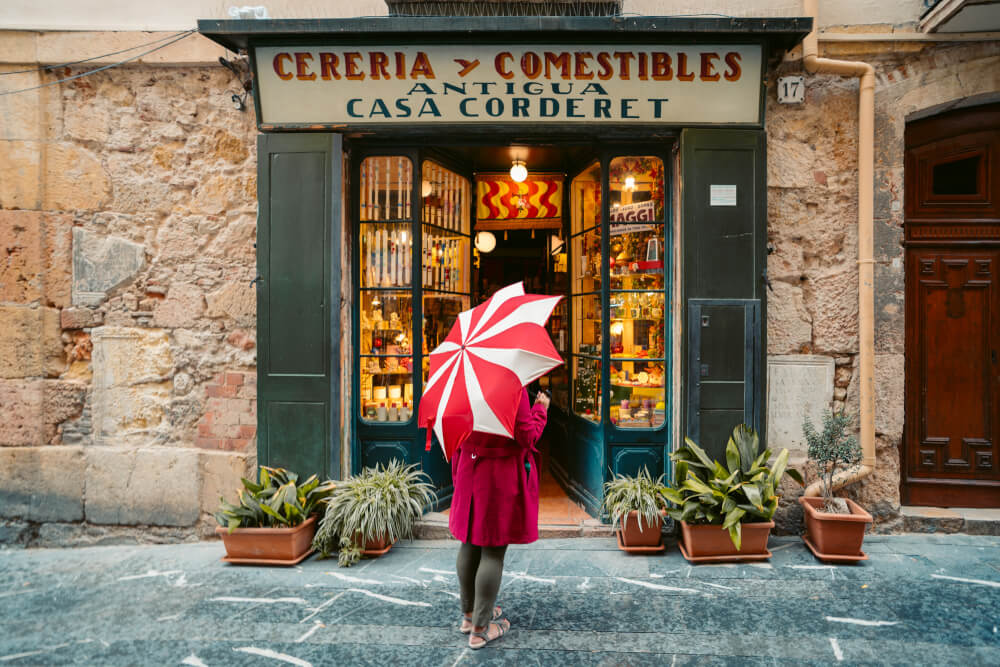
8. Prepare for Some Late Meal Times
Mealtimes in Spain are on a different schedule than they are in the United States. I’ll never forget my first night in Madrid when I asked my new roommate if she wanted to grab dinner with me. She looked at her phone, saw that the time was 8:30pm, and said, “Really? But it’s still so early.”
She wasn’t wrong. Dinner in Spain often isn’t until 10:00pm. This is typically after a light breakfast at 8:00am, and a large lunch at 2:00pm. Restaurants often close between 4:00 – 8:00pm, so if you’re used to eating on a different schedule, it may be a good idea to have some snacks to hold you over until dinner.
9. Don’t worry about violent crime, but be mindful of pickpockets
Crime rates in Spain are incredibly low, especially when compared to the United States. Even as a female solo traveler, I have never felt safer in all my life than I did in Spain.
I regularly walked alone at night in Madrid , and never once had an incident where I feared for my safety. Visitors should be cautious of pickpocketing, especially in Madrid and Barcelona , but it’s rare to experience a violent crime in Spain.
Christina’s note: Check out my guide on How to Avoid Pickpockets to get the low down on common pickpocketing techniques and scams to avoid.
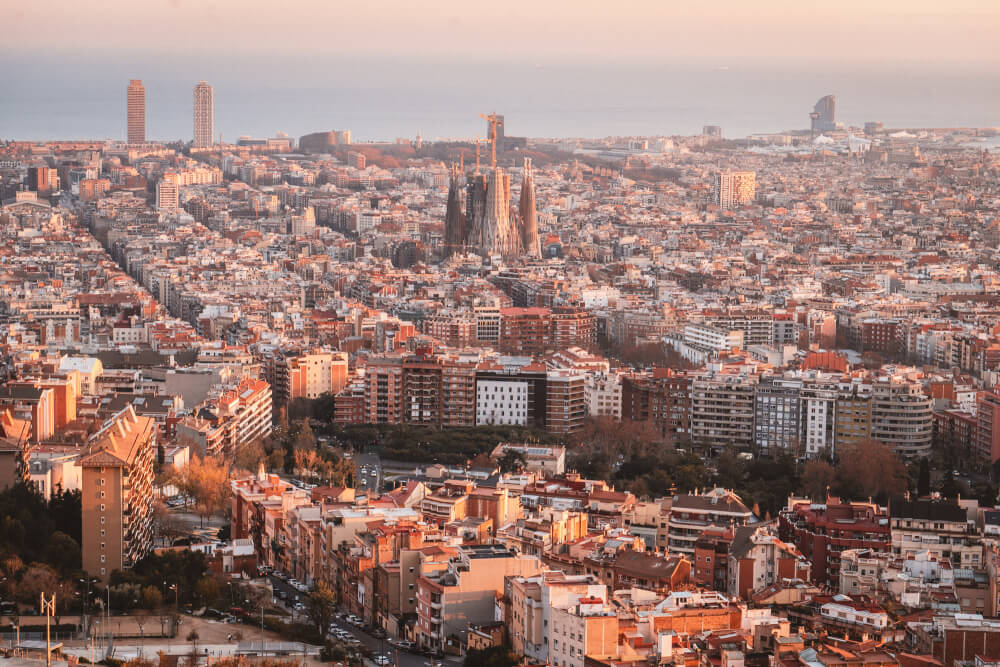
10. Travel with Public Transit
Don’t waste your money on taxis or rental cars!
The public transit systems in Spain are fantastic, especially in big cities like Madrid , Barcelona , Seville, and Bilbao.
The biggest cities all have extensive metro systems that are reliable, affordable, and easy to use. Even in small towns, there are almost always buses or trains to take you wherever you need to go.
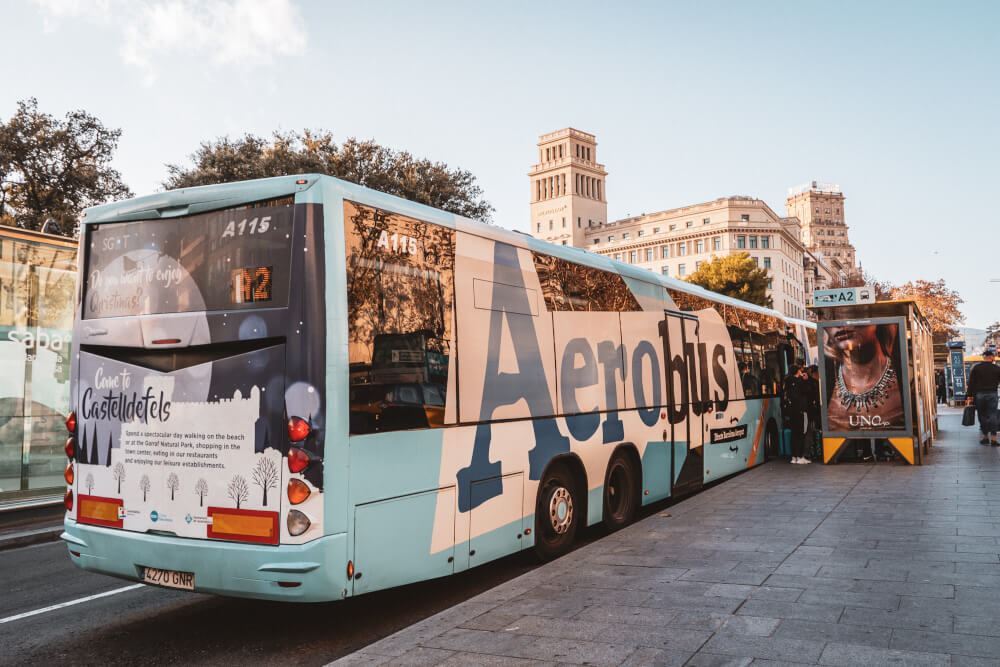
11. Look into Spain’s Many Festivals
There are 874 festivals in Spain each year. That’s almost 2.5 each day!
While the most famous festival in Spain is undoubtedly the running with the bulls in Pamplona, there are hundreds of other festivals that everyone should attend at least once in their life.
Some other notable festivals include La Tomatina, a city-wide food fight when people hurl tomatoes at each other, and Las Fallas, where large papier-mache statues are erected all around town only to be set on fire.
Las Fallas Festival, Valencia
12. Learn to Flag Down Servers
Meals in Spain are meant to be slowly enjoyed with your friends or family. It’s not uncommon for dinners to last over two hours.
Because of this, when you want to order at a restaurant or ask for the check, you’ll need to flag down your server.
No matter how long you’ve been there, or if it’s clear that you’re finished eating, servers typically won’t bring you the check until you explicitly ask for it.
If you wait for the server to approach you, you’ll be at the table all day long.

13. Be Mindful of the Famous Siesta
The idea of a nationwide nap is only half truthful.
While most people don’t literally take a nap, shops tend to close between 2:00 – 5:00pm each day, especially in smaller towns. This is when people tend to have lunch.
It also means that shops are open later than they would be in the United States. Rather than the 9:00am – 5:00pm schedule that’s common in North America, Spain’s common business schedule is 9:00am – 2:00pm, then 5:00pm – 8:00pm.
Plaza de Espana, Seville
14. Try Tinto de Verano
Spain is known for Sangria, but the criminally underrated cocktail is called Tinto de Verano.
Roughly translating to summer wine, tinto de verano is equal parts red wine and lemon soda. It’s simple, refreshing, and almost always less than 2€.
15. Explore Spain’s 49 UNESCO Heritage Sites
Anywhere you go in Spain, you’re never far away from a UNESCO Heritage Site.
A UNESCO Heritage Site is a place that the United Nations has decided is “of outstanding universal value to humanity.”
These include the Alhambra in Granada, The Aqueduct of Segovia, and La Sagrada Familia.
In fact, Spain is tied with France for 4th most UNESCO Heritage Sites in the World after Italy, China, and Germany. Any Heritage Site is well worth a spot on your Spanish itinerary.
Crystal Palace, Madrid
16. Book Entry Tickets Well in Advance
While most things in Spain are done best by relaxing and going-with-the-flow, the exception to this rule is when it’s time to buy tickets to things.
It’s best to buy tickets to all of the well-known tourist attractions at least a month in advance.
Entry to the Alhambra, the most visited castle in Spain, can sell out over a month in advance in the summer.
When you buy an entry ticket, you’ll likely be given a specific time slot.
Plan to arrive early, because lines can get long, and if you miss your time slot, you’ll likely be denied entry.
Alhambra, Granada
17. Take Note of Free Hours
Before you pay for your tickets, take a minute to see if they offer free hours.
Many tourist attractions, like the Prado Museum or the Madrid Royal Palace, have free hours scattered throughout the week.
Each attraction has different hours and different stipulations. Some are free for all visitors, while some are only free for EU citizens.
Make sure to read the fine print before booking your ticket!
Royal Palace, Madrid
18. The Best Time to Visit is Not Summer
Summer may be the peak tourist season, but it’s definitely not the best time to visit.
Especially in the south, where temperatures commonly soar above 98F/37C. Not only is it scorching hot, but many businesses shut down as locals flee to the coast for the month.
You’ll likely have better weather and fewer crowds if you visit in the shoulder season from September to November, and March to May.

19. Slow Wandering > Jam Packed Itinerary
I get it. There are a million things to do in Spain and you want to make the most of your short time there. It can be tempting to load up your itinerary with dozens of things to do each day, but that’s just not realistic.
Even if you manage to see everything on your list, you’d be exhausted from running around all day.
Life in Spain moves slower. The culture values enjoying your time.
One of the best “live like a local” tips I can offer is to spend your time in Spain taking it easy. Instead of rushing from museum to museum, take a two-hour lunch and wander slowly through historic neighborhoods.
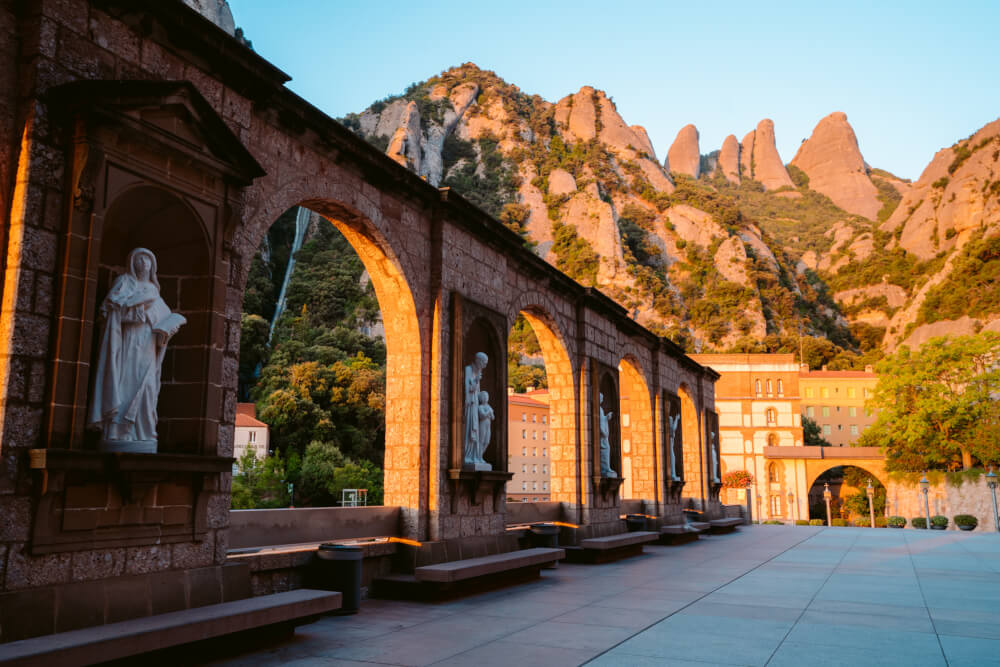
20. “Real Paella” is Found in Valencia.
Good paella can be found anywhere in Spain, but any local will tell you that real paella is found in Valencia.
There are a million variations of this classic dish to be found, including vegetable and seafood paella, but paella valenciana is the “authentic” paella.
Paella valenciana is Spain’s famous rice dish that is going to be served with rabbit, chicken, and a few strands of saffron.
I hope you enjoyed these Spain travel tips!
Feel free to chime in if you have any tips for travelling Spain you think should be added to the list. Thanks so much for reading, and have an amazing trip.
My Go-To Travel Favourites:
🧳 Eagle Creek: My favourite packing cubes
💳 Wise: For FREE travel friendly credit cards
🍯 Airalo: My go-to eSIM
🏨 Booking.com: For searching hotels
📷 Sony A7IV: My (amazing) camera
✈️ Google Flights : For finding flight deals
🌎 WorldNomads: For travel insurance
🎉 GetYourGuide: For booking activities
1 thought on “20 Spain Travel Tips & Must-Knows Before You Go”
Thanks so much. It can be overwhelming planning an overseas trip. We have a family member in a wheelchair, so it makes it a bit trickier.
Leave a Comment Cancel reply
By using this form you agree with the storage and handling of your data by this website. *
Top hacks for visiting Spain like a local

Perhaps this is your first visit to the sunny, welcoming country of Spain. Or maybe it's your eighth, eleventh or twentieth vacation there. Either way, Spanish culture is special, and if you'd like to have a more authentic and memorable time, there are a few hacks that are useful to know.

After 12 years of living in Spain, a master's degree in Castillian Spanish and marrying into a Spanish family, I've learned a thing or two about living, visiting and traveling in Spain like a local. To save you from making numerous faux pas (many that I have made myself) and help you avoid tourist prices, pickpockets and general discomfort/embarrassment, here are some key tips to enjoying Spain like a local, to enrich your trip and to help you immerse yourself in the wonderful culture, landscape and cuisine the country has to offer.
1. Choose your destination wisely
Spain is a country of beaches, mountains, islands, villages and urban hubs. Depending on the style of trip you want to have, choose your destination with care. While Barcelona, Marbella, Benidorm and Tenerife are some of the most popular hotspots for European travelers, get more in touch with the local culture by trying something a little different. Visiting cities or regions that fly more under the radar will ensure you avoid typical tourist price hikes, get a more traditional feel for the country and avoid being targets of travel scams or pickpocketing. This is by no means a comprehensive list, but here are some suggested alternatives.

- Want to visit Barcelona? Try Madrid
- Want to visit Marbella? Try Cádiz
- Want to visit Tenerife? Try La Palma
- Want to visit Mallorca? Try Menorca
- Want to visit Seville? Try Córdoba
- Want to visit San Sebastián? Try Santander
- Want to visit Malaga? Try Almería
- Want to visit Benidorm? Try Tarragona
2. Choose your neighborhood carefully
If you've chosen to visit Barcelona, Marbella or Tenerife, that's okay too. There are plenty of wonderful attractions to enjoy in all of those spots. But do some research to find the areas or neighborhoods you'd really love to spend time or dine in. Even if you do decide to make your base the more touristy Ramblas or Tenerife's all-inclusive hub of Playa de las Américas, seek out more local attractions within these areas. You'll save money avoiding touristy restaurants and discover new and interesting spots along the way. Seeing the main tourist attractions shouldn't necessarily be skipped, but you may find you enjoy some of the off-the-beaten-path spots even more.

3. Be an organized tourist
Traveling locally doesn't mean skipping the tourist attractions. It just means doing them in a savvier manner. Many of Spain's most popular attractions (think the Sagrada Familia in Barcelona or the Real Alcázar in Seville) have online ticketing systems. Plan to purchase tickets ahead so you skip the line when arriving. For attractions that require a timed entrance purchase, consider checking out Google's popular times feature. When you google the attraction and scroll down, you can see a graph with the most and least popular times, ensuring you may be able to select a time to see your chosen attraction during a less busy time of day.

If you're traveling on a budget, many museums have days or times where you can enter for free or for reduced entry. Although these times are typically more crowded, it may be worth it to save some extra money.
4. Do things later (and yes, take that siesta)
If there's one thing that will call you out as a tourist, it's waking and eating earlier than the locals. Lunch begins at 1 p.m., but is most commonly had between 2 p.m. and 3 p.m. Find a spot with a set lunch menu, a Menu del Día. This fixed price menu that changes daily is usually a great deal: a drink (wine, beer or soft drink), starter, main course and dessert or coffee, usually priced between eight and 16 euro ($9 - $18).

Although restaurants open around 8:30 p.m., 10 p.m. is a much more normal time for dinner -- and even later on the weekends. When your crew rolls in at 8 p.m., you may get the tourist menu, meaning one with inflated prices. And you'll probably only be surrounded by other tourists, not getting a feel for what Spanish dinnertime is really like (hint: it's noisy and fun).
How can you possibly wait that long to eat dinner, one might ask? The key is the famous siesta. Napping after midday, especially in the intense heat of the summer when temperatures in many areas of Spain are nearing 100 degrees Fahrenheit will ensure you not only avoid the hottest part of the day but gives you more chance of staying awake long enough to eat dinner -- and maybe even go out for a copa afterwards. For more information on what a copa is, see my next point.
The other advantage of taking a siesta is to avoid all the shops being closed. Although many larger shops stay open all day, some of the smaller and more local businesses close midday for lunch and rest, usually re-opening again around 5 p.m.
5. Order like a pro (and in Spanish, if possible)
The Spanish are efficient when they order food and drinks. Saying things like, "ponme una caña" is completely normal, though in the US you'd never tell the barman to "give me a little beer". And what you're ordering is just as important:

- Skip sangria and order tinto de verano instead (this is a fresher, less sugary type of wine spritzer that's more commonly ordered by locals. When you try it, you'll see why).
- Skip the Guinness and order a caña, a small beer (in the heat of the summer, you'll see why this makes sense. By the time you're just about done, the beer is warm, and it's time to order another).
- Skip a margarita, daiquiri or mojito in lieu of a copa (a copa is a simple mixed drink with one type of alcohol mixed with soda or tonic water. The Spanish prepare these much better than fancy cocktails).
- Don't order paella in places where the menus show pictures of it.
- Try vermouth, sherry or local wines. These are cheap and delicious.
- Remember, you may get a free tapa with a drink order, especially at bars/restaurants in southern Spain. Seek these joints out, it's where the locals are.
- If you have dietary restrictions or allergies, triple confirm (have the information written in Spanish for serious allergies) with the waiter. Remember that in Spain, sometimes locals don't consider ham as meat, so if you're vegetarian or do not eat pork, confirm the dish you're order is both pork and beef free. Vegans will have a tougher time, but slowly, more options are becoming available in the larger cities for those restricted to a plant-based diet.
Learning just a little bit of Spanish -- even just easy words for food and booze can make your trip a lot easier -- and more fun. Locals will appreciate your effort, and you may even make a few friends as you stumble over forming a phrase or two.
6. Summer is hot -- so be prepared
While this may seem blatantly obvious, what's not as obvious is that air conditioning is very different in Spain. Some places don't have it at all, and some shops, hotels and restaurants won't have the same quality of air conditioning you'd find in other countries. If having AC is important to you or you tend to run hot, double check that your hotel or home rental has AC and keep your expectations under control. Or, avoid visiting during the hottest months of the year, July and August.

And of course, the telltale sign of a tourist is shockingly sunburned skin, so wear sunblock even if it seems cloudy. The Spanish sun can easily deliver a burn in no time at all, even in months like April or October.
A final tip is to use those handheld Spanish fans to beat the heat. They can come in handy, especially when on public transportation or to block the hot sun from hitting your face temporarily.
7. Be on alert for scams and pickpockets
Travel scams can happen to anyone -- even expert travelers. In fact, TPG Travel Editor Melanie Lieberman fell victim to a scam along the Costa Brava where all her belongings were stolen out of her rental car. TPG U.K. reader Bobby succumbed to a similar scam in the region, where he was tricked into thinking he had a flat tire. While he was distracted by the false flat fire, thieves stole his luggage. And you have to watch out for the trileros, or people involved with a common travel scam called trile, the cup game you should be watching out for in spots like Mallorca and Benidorm.

While you likely won't encounter violent crime in Spain, pickpocketing is extremely common, especially in crowded areas, tourist attractions or on public transportation, especially in Barcelona.
Staying alert, being aware of your surroundings and knowing about common scams and pickpockets are some of the best ways to prevent these things from happening to you. Leave your passport and back-up credit card at your hotel and have a backup copy of your passport or other important documents with you. Keep your belongings secure and never leave your purse/bags on the ground or on the back of your chair at a restaurant. Don't leave your mobile phone on the table either.
Travelers who have been the victim of a crime in Spain can call the authorities on 112, or call or e-mail SATE (Servicio de Atención al Turista Extranjero) for assistance with scams or any other precarious situations.
Bottom line
Armed with the aforementioned tips, you should be able to have a safe, fun and hopefully more local visit to Spain. Remember, there's absolutely nothing wrong with being a tourist either, just be a savvy one -- and keep an eye on your belongings.
- Top Things to do
- Madrid Tours
- Attractions
- Royal Palace Of Madrid
- Madrid Prado Museum
- Madrid Flamenco Show Tickets
- Reina Sofia Museum
- Santiago Bernabeu Tours
- Thyssen-Bornemisza Museum
- Parque Warner Madrid
- Parque De Atracciones Madrid
Liria Palace
- Wax Museum Madrid
- Cívitas Metropolitano Stadium Tours
- Museum of Illusions Madrid
- El Escorial Madrid
- Royal Palace Of Aranjuez
- Royal Palace of La Granja of San Ildefonso
- Atlantis Aquarium Madrid
- Puy du Fou España
- Legends Football
- Walking Tours
- Hop-On Hop-Off Tours
- Theme Parks
- Water Parks
- Travel Guide
- Things to do
- Trip Planner
- Festivals and Events
- Travel Tips
Plan Your Visit: Best Times to Experience Madrid
Madrid is a tourist's utopia, regarded as a shining metropolis with a history steeped in art. The capital city of Spain, sometimes overlooked in favor of its more well-known northern neighbor Barcelona, features gorgeous architecture, global art galleries, scrumptious culinary options, and a lively nightlife that stands in stark contrast to the day's restrained fine arts and dining prospects. Planning to visit Madrid and wondering when to plan your trip? Read on to discover the best time to visit Madrid.
What's the Best Time to Visit Madrid?

Best Months for Staying Outdoors in Madrid : May to October.
Best Months for Sightseeing & Museum Hopping : May and October
Best Months for Honeymooners : September to November and March to May
Best Months for Budget Travelers : December to March
Best Months for Shopaholics : July to September

High Season
When: june and august.
What to Expect:
- This is the height of summer, and also when the majority of visitors arrive.
- Many locals will be on vacation in August, which means that many businesses will be closed.
- The streets are still packed with tourists, and hotel rates are at an all-time high.

Shoulder Season
When: march to may, september, and october.
- The second half of May and September are believed to be the finest times to visit Madrid.
- The weather is usually pleasant, and strolling around the city is pleasant.
- There will be fewer tourists than there will be throughout the summer months.

When: November to February (except Christmas)
- Tourist numbers are significantly smaller than at other times of the year.
- You'll get access to a wide range of lodging options as well as discounted rates.
- The majority of the attractions can be experienced at a slower pace, and the weather rarely drops below freezing.
Seasons in Madrid

March - May
Average Temperatures: 5°C Low - 22°C High
The greatest time to visit Madrid is in the spring. It's warm and sunny, and the mountain air, combined with the occasional rains, provides an incredible sense of freshness. The air becomes crisp and chilly in the evening, but the temperature climbs to 17-22 °C by the afternoon the next day. In the spring, the city takes on a new face as over 40 local parks begin to bloom.
Tips : Enjoy strolling around Buen Retiro Park or the Plaza Mayor.

June - August
Average Temperatures: 14°C Low - 31°C High
Summer in Madrid is often dry and hot, with daytime temperatures staying around 30 degrees Celsius and occasionally exceeding 40 degrees Celsius. The city hollows out for siesta in the afternoon, with traffic slowing and streets becoming deserted. Many residents had taken vacations along the Mediterranean coasts.
Tips : Avoid stepping out without sunscreen if you have activities planned for the afternoon.

September - December
Average Temperatures: 5°C Low - 26°C High
Autumn in Madrid is similar to spring in terms of temperatures, with September and October being the most pleasant months, with daytime averages of 29-21 °C. While rainfall is nearly twice as high as in the summer, rapid showers that last only a few minutes generate the ideal temperature for walking around the city. The weather becomes cold when rain and winds combine.
Tips : For a visit to Madrid in the autumn, it is necessary to carry layers of clothing.

January - February
Average Temperatures: 2°C Low - 11°C High
In the winter, Madrid has a wide variety of daily averages. While the air warms up to 10-12 °C in the afternoon, it can plunge below freezing at night. Even though winter is the rainiest season, there are plenty of sunny days as well. The relative air humidity exceeds 80%, making it appear cooler than it is. Visitors should expect a significant temperature change between day and night.
Tips : Dress according to the weather even if it gets a little warm during the day.
Recommended Attractions in Madrid

El Escorial

Royal Palace Madrid

San Lorenzo of El Escorial

Santiago Bernabeu

Wanda Metropolitano

Reina Sofia

Parque Warner

Prado Museum

Thyssen Bornemisza Museum

Best Time to Visit Madrid: Month on Month Guide

Average Temperature : 3 - 10°C
Although Madrid's winters are cooler than most other parts of Spain, they are seldom harsh. While temperatures might reach as high as 10°C on a bright afternoon, January is the coldest month of the year, with an average low of 1°C. While the surrounding mountains typically receive a lot of snow at this time of year, the city itself is not expected to see much.
Things to do:
- Visit Reina Sofia Museum
- Explore Plaza Mayor and El Retiro Park
- Tour Santiago Bernabeu Stadium
- Day trip to Toledo and Segovia
Travel Tips : Pack a heavy winter coat, several sweaters, and possibly a scarf and gloves.

Average Temperature : 4 - 12°C
February is remarkably similar to January, with the exception that the peak temperature rises to a delightful 12°C, ensuring at least a few pleasant afternoons. During winters, the days are short and dark, but there's a strong probability you'll get some beautiful sunshine to explore the city on foot in moderate comfort.
- Visit Prado and The Royal Palace
- Tour Wanda Metropolitano Stadium
- Ride the Madrid Cable Car
- Explore Thyssen-Bornemisza Museum
Travel Tips : While February is technically winter, pack a few short-sleeved shirts for when the sun comes out.

Average Temperature: 6 - 16°C
With the peak temperature rising to 16°C in March, spring is well on its way. March receives even less rain than the previous two months, with only 30mm of rain falling over eight days. You'll have almost 12 hours of daylight thanks to Daylight Savings Time. The Noche de Los Teatros is a big event in Madrid, with scores of performances occurring throughout the city on March 25th.
Things to do:
- Visit Madrid Prado Museum
- Explore El Escorial
- Discover Atlantis Aquarium
- Tour the Royal Palace of La Almudaina
Travel Tips : Given the pleasant weather, March is a great time to explore Madrid on foot.

Average Temperature : 8 - 18°C
April is one of Madrid's rainier months, with 50mm of rain falling over ten days, but it's typically not enough to disrupt your plans. Expect moderate weather this month, with average temperatures of 11°C, however, it can be as hot as 17°C on many days, especially at the end of April. Dress in layers; pack a light jacket and a pullover which you can carry with you in case it gets chilly.
- Head to Koki Zoo
- Vist Reina Sofia Museum
- Explore the Royal Palace Of Aranjuez
- Day trip to Toledo
Travel Tips : In case you get caught in a rainstorm, having a compact, a portable umbrella is recommended.

Average Temperature : 11 - 22°C
Spring doesn't last long in Madrid, with average high temperatures rising five degrees to 22°C this month, signaling the start of summer. Although this is one of the rainier months, there is usually plenty of glorious sunshine to be had on most days. The weather is ideal at this time of year because the harsh hot summer heat has not yet reached its height. This is an ideal time to visit for sightseeing.
- Spend time at Prado and The Royal Palace
- Embark on a tour of Santiago Bernabeu Stadium
Travel Tips : This is a great time to visit Madrid since the crowds are yet to arrive

Average Temperature : 16 - 28°C
Summer has officially arrived in Madrid, as the high-temperature increases to 29°C in June. While it will be hot, it will not be as hot as the next two months, and June is typically a pleasant month to visit Madrid. With only 30mm of rain falling over six days, you won't need to bring an umbrella. You'll have plenty of time to take in the sights with approximately 15 hours of daylight.
- Visit the Museum of Illusions
- Admire art at the Banksy exhibition
- Beat the heat at Parque Warner
Travel Tips : Given the temperature, it’s always a great idea to apply sunscreen liberally

Average Temperature : 19 - 32°C
July is the hottest month in Madrid, with average highs of 33°C and only 10mm of rain. Many shops and cafes close their doors to visitors during the peak of the summer heat to take a siesta break, only to reopen in the late afternoon. This month is by far the busiest of the year, with long lines at most tourist destinations.
- Santiago Bernabeu Stadium tour
- Explore Wax Museum Madrid
- Experience Aventura Amazonia
- Visit the Royal Palace Of Aranjuez
Travel Tips : If possible, book an air-conditioned hotel because the heat can make sleeping uncomfortable.

Average Temperature : 19 - 31°C
August brings sweltering temperatures, with afternoon highs reaching 33°C and occasionally reaching 37°C or even higher. With 10mm of precipitation falling over three days, there isn't much rain to bring relief. Because of the city's high elevation, nights are still cool, so sitting outside and enjoying an evening drink is still a great way to end a steamy day of touring.
- Embark on a day tour to Segovia
- Explore Royal Palace of La Granja of San Ildefonso
- Visit Atlantis Aquarium Madrid
- Spend time at Madrid Prado Museum
Travel Tips: It's ideal to get up as early as possible in the morning to take advantage of the fresh air before it becomes too hot.

Average Temperature : 15 - 26°C
The average maximum temperature drops to 29°C in September, bringing reprieve from the summer's sweltering heat. It will probably still be hot early in the month, but as the month passes, the weather becomes increasingly pleasant. The second part of September is a fantastic time to visit because of the somewhat lower daytime and evening temperatures.
- Visit Thyssen-Bornemisza Museum
- Spend half-day at Parque Warner Madrid
- Discover the Royal Palace Of Madrid
- Explore Liria Palace
Travel Tips : You'll be well-prepared if you bring your summer clothes along with a light jumper for the evening.

Average Temperature : 11 - 19°C
October is a fantastic time to visit Madrid, with considerably cooler, comfortable weather that makes walking around the city a pleasure. The average high temperature drops to 21°C, and while there is a little more rain this month, with 40mm falling over ten days, you'll have plenty of sunlight. Between the busy summer days and the start of the Christmas season, October provides a respite.
- Go for a Wanda Metropolitano Stadium tour
- Discover El Escorial Madrid
- Explore Atlantis Aquarium Madrid
Travel Tips : Due to the increased likelihood of rain, you may want to bring a portable umbrella.

Average Temperature : 6 - 13°C
By November, the weather had become markedly cooler, with high temperatures rarely surpassing 15°C. It's also rainier this month, with 50mm of rain falling over nine days, albeit nothing an umbrella can't handle. November can be unpredictable, with some years delivering t-shirt weather and others bringing a chill that necessitates the use of a winter coat and scarf.
- Visit Koki Zoo
- Explore the Royal Palace of La Almudaina
- Tour the Royal Palace Of Madrid
- Embark on a Wanda Metropolitano Stadium tour
Travel Tips : Winter gear should be included along with lighter layers for layering.

Average Temperature : 4 - 10°C
Madrid is a colorful, exciting place to be in December, despite the cold. The average temperature is around 7°C, however, it can get as high as 11°C on some days. Even though the weather is chilly and crisp most days, the sun shines plenty. The enthusiasm for Christmas builds as tourists return to the city for the holiday season.
- Visit Puerta del Sol for holiday season shopping
- Witness Christmas lighting at Plaza Mayor
- Explore Madrid Prado Museum
Travel Tips : Christmas time can get especially busy, book your tickets and accommodation in advance
Top Things to do in Madrid
Hacks & tricks to visit madrid.
- While walking around the city is unquestionably the finest way to see it, Madrid's outstanding public transportation system is also a fantastic option.
- The best times to visit Madrid include late spring and early autumn. Summers are hot, but not oppressively so, so you can travel to Madrid in July and August if you choose.
- While English will get you by in Madrid, knowing a little Spanish beforehand will make your vacation more memorable.
- Take advantage of free admission to some of the city's most popular museums! During specific times of the week, many museums in Madrid open their doors free of charge.
- Football is a significant part of the local culture, and going to a game is an absolute must.
- Do some research to discover if the attractions you want to visit allow you to reserve in advance online—and if they do, take advantage of it. You'll be able to skip the line for day-of tickets and get straight to the attractions
Frequently Asked Questions About The Best Time to Visit Madrid
The best time to visit Madrid is from September to November or March to May.
The high season in Madrid is between July and August.
The hottest month in Madrid is July with the highest temperature of 32°C.
December and January are the coldest months in Madrid .
October is the wettest month in Madrid, with an average rainfall of 1.8 inches.
May and October are both the best months to go sightseeing in Madrid.
Madrid is the least crowded between November and March.
You can get budget deals in Madrid from January to March.
Madrid is landlocked with no direct access to any ocean coastline.
You can visit Museo Nacional del Prado, El Retiro Park, enjoy diners at rooftop pubs, or hit the water park in Madrid in the summer.
You can shop at the Christmas market, ride the Christmas bus, and visit the many museums in Madrid in winter.
You can explore the city on your bike, witness stunning cherry blossom trees, and watch a football match in Madrid in Spring.
You can stroll the city’s many parks, visit the Royal Palace Of Madrid, and enjoy a drink at one of the terrace restaurants in Madrid in Autumn.
March to May is the best time to visit Madrid with kids.
January and February are both great months to visit Madrid for couples.
September to November is the best time to visit Madrid while traveling solo.
The best time to visit Madrid for shopping is January, July, August, and September.
Luxury Travel Hacks

Helping YOU Travel As Luxuriously As You Can, As Cheap As You Can!
Things to do on your layover in madrid.
Sharing is caring!

A lot of people flying into Europe from the Americas, first land in Madrid and wait for their connecting flight. But not everyone makes use of their potential layover in Madrid. As Spain’s capital and largest city, Madrid is a great place to learn about Spain. The architecture in Madrid is truly a sight to behold. And, of course, Madrid houses one of the world’s most famous museums, the Prado.
No city can be explored fully if you only have a few hours to visit. But if you have a layover of a few hours, before flying out to the Spanish Canary Islands , why not make use of it and at least get an introduction to the city? Madrid’s airport is not far from the city center and well connected to public transport. So if you have at least six hours to spare you can definitely do some exploring in the city.
Since Spain is part of the Schengen area chances are pretty good that if you’re a citizen of a North or South American country you will not even need a visa. All the more reason to store your bags at the airport and take the airport express bus to Madrid. And while you will not be able to see everything there are some things you can fit in if you have only a few hours in Madrid. Here are some tips for things to see and do during your layover in Madrid.
Table of Contents
Disclosure: Some of the links below are affiliate links, meaning at no additional cost to you, we will earn commission if you click through and make a purchase.
Guest Post By Nina
Lemons and luggage, getting around madrid.
Most of the major things to see and do in Madrid are located in the center so once you’re there you can either walk to all the sights or take public transport if you prefer. Madrid has one of the best public transportation systems in the world. Because the metro network is the second-largest in Europe you will most likely not need the bus and can stick to the metro.
A single ticket costs €1.50. Sadly, the metro doesn’t run all night even on weekends. So if you are spending the night in Madrid you will need to use one of the night buses if you don’t want to walk. The main bus stop for night buses is Plaza de Cibeles where you can also get the airport express bus back to the airport.
What to See and Do on Your Layover in Madrid
Marvel at the plaza de cibeles.
If you take the airport express bus to Madrid you will arrive at Cibeles Square. And what a perfect way to start discovering Madrid! The Plaza de Cibeles is where you will see a gorgeous fountain and the breathtaking Cibeles Palace. The Cibeles Palace used to be the city’s main post office, and I have honestly never seen anything like it. It’s now the seat of the City Hall for which it seems the perfect building.

Take a Walk Through the Parque del Buen Retiro
Just a few minutes from the Plaza de Cibeles you will find the Retiro Park. If the weather is any good during your layover in Madrid you’ll definitely want to go here for a stroll through the beautiful gardens. El Retiro is one of the largest parks in Madrid and home to the gorgeous Crystal Palace which sits on a pond. Furthermore, there are statues and galleries in the park for those who are interested. If it’s warm and sunny you could even have a picnic or rent a boat on the lake.
Visit One of Madrid's Museums
Honestly, you could spend days in each of Madrid’s three most popular museums (Prado, Reina Sofía, Thyssen-Bornemisza). Whether or not you want to visit one of the museums really depends on your interests and maybe the weather. But I would choose only one of the main museums to allow for enough time to see more of Madrid. The Prado Museum is considered one of the best art museums in the world housing paintings by Goya, Velázquez, and El Greco. But if you want to see Picasso’s masterpiece Guernica you should opt for the Reina Sofía museum. The Thyssen-Bornemisza may not be as famous as the former two museums but still houses an impressive art collection.
The Gran Vía is one of Madrid’s most popular shopping streets if you want to buy something during your Madrid layover. But the impressive architecture will appeal to non-shoppers as well. Most of the buildings here are from the early 20th century which gives the Gran Vía a very elegant feel despite all the modern billboards. Some of the most impressive buildings here are the Metropolis Building from 1911 and the Edificio Grassy from 1917.

Take a Break and Eat Some Delicious Food
After so much exploring, you will definitely want to rest for a bit. This is an excellent chance to try out one of the many vegan restaurants in Madrid most of which are centrally located. But no Madrid layover would be complete without trying the traditional Spanish snack, churros. These delicious pastries are available all over the city. If you’re vegan make sure the chocolate you get with them is vegan. Churros themselves are vegan by default.
See the Royal Palace of Madrid
The Royal Palace of Madrid is the world’s largest royal palace by floor space and would take hours to visit. Since you’re only in Madrid for a layover it’s best you simply admire the beautiful exterior. While it is the official residence of the Spanish royal family they don’t actually live here. For gorgeous views and photo ops, head to the square and the adjacent gardens.

Visit the Almudena Cathedral
The Almudena Cathedral is right across from the Royal Palace and the seat of the Roman Catholic Archdiocese of Madrid. It took more than 100 years to build this beautiful cathedral with a baroque exterior and neo-gothic interior. The current King and Queen of Spain got married here in 2004 which was the first royal wedding in the Almudena Cathedral.

See the Plaza Mayor
This is one of Madrid’s biggest squares and a must-see on your Madrid layover. The square has ten large entrances with nine gates. 237 balconies of the buildings surrounding the rectangular square face the Plaza Mayor. At the center of the square, you will see a statue of King Felipe III which was only moved here in the 19th century. The square is perfect for a stroll and maybe some more churros! From the end of November, the Plaza Mayor houses a very cute Christmas market that is well worth a visit.

See the Puerta del Sol
Another famous square in Madrid is the Puerta del Sol. This is where thousands of people gather on New Year’s Eve but also where many protests take place. It is the symbolic center of Spain and where the Kilometer Zero of the Spanish road network is. But the Puerta del Sol also has a historical significance as the place where the revolution against the French started as well as other relevant events in Spanish history took place.
These are just some of the major points of interest that you might want to see on your layover in Madrid. But you will probably want to come back another time to see more of this stunning Spanish city.
About The Author
Nina is a 30-something cosmopolitan vegan traveler who grew up in Germany and now lives in Greece. She is the voice behind Lemons and Luggage , a travel blog dedicated to illustrating diversity in travel. As a female traveler of Muslim heritage, Nina wants to encourage women from marginalized communities to travel the world. You can follow her on Instagram or Facebook .
Related posts:
12 Europe travel hacks that will save you BIG money
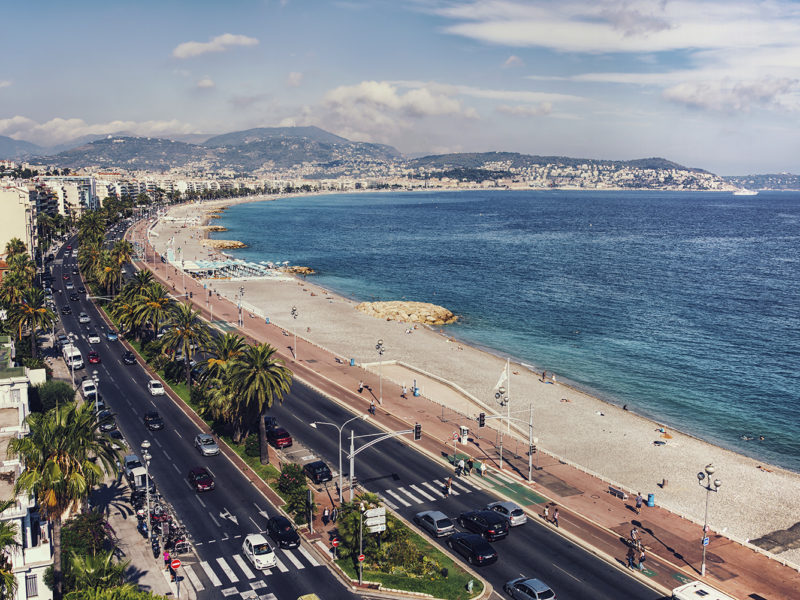
Promenade des anglais in Nice
--> BY Chloe Gale
Last updated . 10 October 2022
Travelling is an expensive hobby, especially when travelling tourist hotspots in Europe.
But there is hope!
Whether you’re headed on a romantic trip to Paris, a meander along the canals of Amsterdam or on a discovery of the castles and estates of Britain’s countryside, this is a must-read guide on how to save – BIG time.
Make a list
Here we start a list with making a list, in true traveller fashion.
The first list you should make is of the places you want to visit, this allows correct planning of your holiday to optimise travel from east, to west and north to south. This also allows you to research which method of travel will be most effective: train (and if so can you buy a five- or 10-trip train pass?), coach or plane?
The second list should consist of all the things you want to do in each place. In Paris, you may want to see the Louvre, the Eiffel Tower, take a bike tour and go out for a French degustation. Planning your to-do list means that you are less likely to get stuck in the trap of filling your holiday with touristy (and expensive) activities. This doesn’t mean you can’t live in the moment while overseas but gives you the option to stay traveller-savvy.
Free museum admission
Do your research on entry to Europe’s most famous museums, as most offer free or reduced entry on specific days.
The Louvre offers free entry to the museum on the first Saturday of every month from 6 pm to 9:45 pm, and free admission to under 26s on Friday evenings from 6 pm until close. At €17 euros a ticket, this is a saving of close to $30 per person. The Prado Museum in Madrid also offers free entry to its collections from 6 pm to 8 pm Monday to Saturday and on Sundays from 5 pm to 7 pm.
Other museums including the Berlin Wall Memorial and the National Gallery in London always have free entry and are well worth your time.

The Pyramide at Musée du Louvre.
Skip the hotel
Hotels, although delightfully convenient and reminiscent of luxury holidays, can cost you the earth in a main city in Europe. Other alternatives, such as Airbnb, youth hostels and campervans can save you a motza, and can even offer a more authentic European experience.
Airbnbs to look out for are the ones with rave reviews, close to the main amenities. Try and stick to places that have a ‘superhost’ status; this means that the host is not only experienced in the game, but they also have been really well rated by their previous guests. If you pick a humble, but well-kept place, you are bound to save $$$.
Hostels, with both shared and private rooms, can cost just a fraction of the price of a good hotel. Try Hostel One Camden in London, The Yellow Hostel in Rome and Coco Mama in Amsterdam.
Campervans, although not ideal when city hopping, are the best way to visit the countryside, especially in places like the United Kingdom, France and Switzerland. Spaceships’ compact and easy-to-drive campervans are an ideal place to start, with a bed, fridge and cooking gear all in the back. Only setting you back around $100 a day, these are the best combination of bedroom and transport.
Pack a picnic. Every. Damn. Day.
Eating, perhaps the best part of any European holiday, is very expensive.
Most meals out cost an excess of $30 per person at a restaurant, and when you think about the fact that eating is necessary more than once in a day, the money mounts quickly.
The best practice to exercise is packing a picnic lunch, with a collection of items purchased at the local grocery store.
In France, pack some fromage and jambon to put on a baguette, in Spain pack some chorizo and cheese or in Malta just grab a few 60c pastizzi, and sit yourself in a glorious park.
This not only saves money but allows you to soak in the ambience of your locale.
Join the National Trust
Picnics are best had in the gardens of historic estates, whilst you admire outdoor fountains in the foreground of period homes.
These estates can be found all over Europe, particularly in England, Ireland, Wales, Scotland, Italy and the Netherlands. To enter these estates costs between $20 and $40 per entry, and can add up to be an expensive experience.
Joining the National Trust in Australia, however, means that you can pay a one-off fee (of $110 for adults, and $90 for concession) for a yearly membership. With reciprocal visiting arrangements with heritage organisations in other countries, membership allows access to 800 heritage sites outside of Australia.
An added bonus is that these estates are also a great place for learning about the history and culture of the country, as well as an excellent photo op.
Free activities
Every single city or town in Europe has a range of things to do that are absolutely FREE.
These are often activities in the natural environment: go for a hike in the Black Forest in south-west Germany, float down the fast-flowing, turquoise waters of the river Aare in Bern or go for a swim on the pebbled beach of Nice.
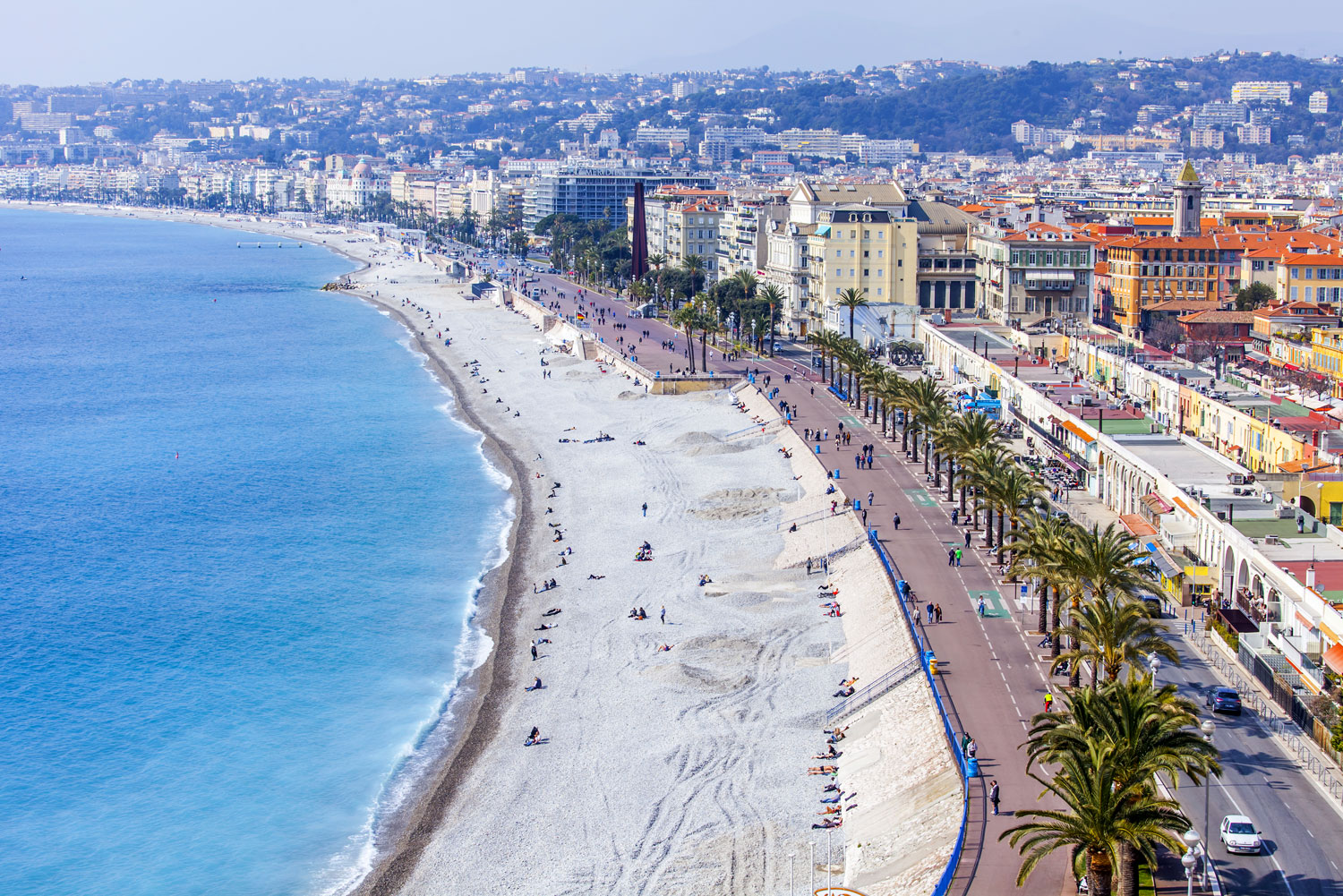
Hire a bike
Not only reserved for the streets of Amsterdam, bike riding is a great way to both see a city and get around it.
Hiring a bike, at around $20 a day, is a great way to avoid paying for buses, cabs, trains or trams.
Also, let’s cut to the chase: while travelling in Europe the exercise certainly wouldn’t go astray.
You can usually hire bikes from local bike shops, or from mobile, dockless bike hiring platforms such as Santander bicycles in London.
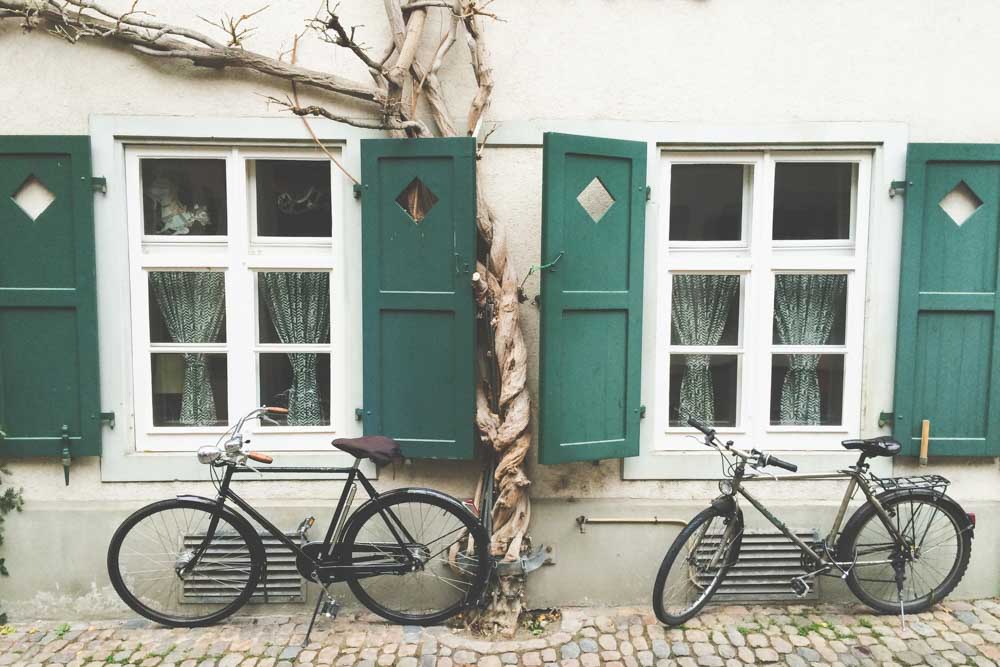
Use a bike to travel around cobblestoned town squares
Check out Airbnb Experiences
Not always the cheapest (although sometimes they are!) Airbnb Experiences offer authentic, locally run and reasonably priced experiences. Ranging from equestrian tours through Tuscany to cooking classes in a home kitchen in Paris, there is something for everyone on this app.
These experiences are usually far superior to the heavily tourist-centred activities found in main cities, and for the same price often offer a lot more.
Research passes in each city
Passes, be it for a collection of museums or for travel around a city, can be a great way to save money.
Some notable passes are: the I Amsterdam card, which you can buy in iterations of 24, 48, 72, 96 and 120 hours from between $95 to $180, offers free access to 60 museums including the Rijks and Van Gogh museums, a free canal cruise and free public transport; the Eurail pass (for international travel between European countries via train); and the London Pass, which allows access to 80 famous attractions across the city with iterations ranging from one day for $123 to 10 days with travel included for $429.
Make sure that you are only purchasing passes to places you actually want to visit (remember your list!). These passes are not ideal if you were only looking at visiting the Rijks museum on your trip, but got roped into all the others because they seemed like good value.
Don’t frequently withdraw money abroad
Avoid costly ATM withdrawal fees on your travel money card by nabbing your cash while still in Aus.
Carrying wads of notes abroad can be daunting, so if you do have to withdraw cash, make sure you do a week’s worth at a time. Or alternatively, try to shop and eat at places that deal only in Eftpos transactions.
Also investigate cards that offer money back on ATM fees, even overseas. ING offers money back on ATM fees globally, if you meet the minimum requirements of the card ($1000 deposited and five transactions made each month).
Make sure you claim your GST refund!
If you’re an avid shopper, make sure you keep all your receipts – you can claim the tax back at the airport on your way home!
Make sure you have your forms and receipts stamped by each country’s officials before departing, and when heading home ensure that all mentioned products are accessible in case the officials need to see them.
Claim for delayed or cancelled flights
When scooting around the Continent on one of its countless budget airlines, don’t tolerate any delayed or cancelled flights or transfers without checking to see if you can get your money back; the EU’s EC 261 regulation means that you’re entitled to compensation if you’re delayed or experience a cancellation (see below).
It’s a little-known fact that you can claim a sizeable chunk of your flight costs back (1500km and less €250; 1500km – 3500km €400; more than 3500km €600) in Europe or even when travelling with a European airline from an airport outside the EU. Even if you are aware of this nifty bit of EU legislation you may think it’s not worth the effort, but filing a claim takes as little as two minutes using AirHelp .
Plug in your dates into the online compensation checker, and if you’re eligible the team at AirHelp will set to work sorting out your claim and you’ll receive the Euros posthaste. It’ll the stress out of waiting around an airport for a delayed flight; you could even splash out on a Champagne lunch safe in the knowledge that you’re due an unexpected windfall.
You’re entitled to compensation if:
- In case of a cancellation, you were notified of it less than 14 days before the flight.
- You have a confirmed flight reservation.
- The disruption occurred in the last 3 years.
- The reason for the flight disruption was within the airline’s control.
- If you took a replacement flight, your new arrival time was significantly different to your original flight.
LEAVE YOUR COMMENT
Cancel reply.
Save my name, email, and website in this browser for the next time I comment.
You might also like

Airbnb’s top 10 most popular stays have been revealed
Itching to discover where the most diehard wanderlusters among us are wish-listing? We’ve got the lowdown on the 10 stays around the world that have...

7 reasons to take a trip aboard the Azamara Pursuit
Not your average mode of transportation between Ol’ Blighty and marvellous France, but as I learnt, climbing aboard the Azamara Pursuit is absolutel...

How to live la dolce vita in Milan
Discover the unforgettable treasures and simple pleasures of Italy’s cultural capital. While Rome is the historical heart of Italy and Florence is ...

6 picturesque places to go on a long weekend near London
London is a great jumping off point for exploring the United Kingdom, and is certainly where most travellers begin (often without heading out of the c...

5 reasons to add Ludlow to your UK itinerary
Every second couple featured on UK show Escape to the Country wants to move to this idyllic market town (or so it seems), and we can see why... Some...

The best castle and manor house hotels in Ireland
Sample some of the best castle and manor house hotels in Ireland to help you find just the right retreat for an indulgent stay. It’s a tough job, bu...

- Find a Library
- Browse Collections
- Madrid Travel Tips and Hacks
ebook ∣ The Best Things to do in Madrid
By ideal travel masters.

Add Book To Favorites
Is this your library?
Sign up to save your library.
With an OverDrive account, you can save your favorite libraries for at-a-glance information about availability. Find out more about OverDrive accounts.
Ideal Travel Masters
Lonzel & Olive
30 July 2022
Find this title in Libby, the library reading app by OverDrive.

Search for a digital library with this title
Title found at these libraries:.
The excitement of planning a trip usually starts to wear off as soon as I start to think about all the things I need to do before I go. Packing, tickets, hotel reservations...ugh! But don't worry, Madrid travel tips are here to help make your trip a breeze. From packing hacks to where to find the best food and drinks in town, I've got you covered. So read on and start planning your next amazing adventure!
- Top Travel Hacks For Visiting...
Top Travel Hacks for Visiting Europe

Content and CRM Executive
From packing essentials to solo travel tips and first-timer recommendations, here are all the travel hacks you need to know about ahead of your trip to Europe.
Travel by train.
Mainland Europe is extremely well-connected by rail networks, so there’s no need to rack-up a heavy load of guilt on short distance flights between neighbouring countries. The infrastructure is continually improving, especially with excellent high-speed trains in Italy and Spain, and new routes continue to expand, including the new Eurostar extension to Berlin.
Generally, rail travel in Europe is pretty affordable, and obviously more sustainable than flights or a road trip, not to mention the fact that travelling by train is an experience in and of itself. You’ll literally see more of the continent as Europe’s array of natural landscapes whizz past your window. Picture alpine lakes, luscious green forests and dreamy coastlines providing the backdrop to your journey. Comfortable, scenic and efficient – there’s no better way to travel.
As you can probably tell, we love train travel here at Culture Trip, and that’s why we launched our amazing global collection of small-group Rail Trips. They include some of the best routes in Europe and beyond, allowing us to cover a lot of ground in just 7-14 days, while also standing up to our commitment to responsible travel .
Our Rail Trips in Europe include Edinburgh and the Scottish Highlands , which features a ride on the real life Hogwarts Express, and Classics of Northern Italy , which fits Rome, Florence, Bologna, Milan and Lake Como into just nine days. There’s also the continent-crossing Madrid to Marrakech itinerary . The ultimate European interrailing experience, however, is our Berlin to Budapest trip , which combines the very best of Central Europe’s range of historical capital cities.

Research travel discount passes
If you’re travelling by rail, then it’s always worth checking out rail passes, whether it’s continent wide, like Eurail passes, or single-country passes, which can offer good value in countries like Spain , Italy and Germany . If you really want to cover a lot of ground on your Euro adventure, these passes can offer incredible value for money.
Look into other kinds of tourist packages and passes too. Most major cities offer some kind of tourist pass by now, usually including citywide public transport – buses, trams, metros etc – and entry to popular attractions like museums, galleries and parks. Take time to check out which of these are good value and which aren’t worth getting. For example, is the city walkable or is it a sprawling metropolis? If it’s the latter then you’ll probably make your money back on public transport savings alone, but if it’s the former, perhaps consider sticking to individual attraction tickets.
If you’re travelling in summer then, luckily, pretty much all of Europe will be warm to hot (other than Iceland , of course). This means you can save on luggage costs by sticking only to light and breathable clothing. If you’re planning on visiting multiple countries then it’s definitely worth keeping the size and weight of your luggage to a minimum, not just to save on flight extras, but also because you won’t want to be carting around huge bags when moving from A to B and beyond.
This should be easy enough to do. Once you factor in essentials – plug adapters, chargers, suncream, passport, documents etc – you’ll still have plenty of room to pack a decent amount of light, airy summer outfits. Don’t worry about running out of clean clothes, either, since much of Europe is more than used to catering to backpackers, and launderettes are pretty easy to come by, either in hostels and hotels or just on the street.
Travel during shoulder season
If you’re travel time is flexible then definitely considering avoiding the peak summer months. This means that you get to avoid the crowds of school-holiday family travellers, as well as saving potentially huge sums of money on flights and accommodation. If you’re after outdoor adventure or city exploration in southern Europe, then the summer months can actually be a little too hot for doing anything more for chilling on the beach.
Spring and autumn offer brilliant alternatives to the summer rush, price hikes and heatwaves. Late March, April and May offer the best balance of pleasant weather and good deals, although September can also be a particularly good option. If weather isn’t a boundary then you can even push it further and book a winter escape. Southern Europe isn’t too cold that time of year, while places in Central Europe, especially Germany, light up in a beautiful festive glow during the run-in to Christmas.
Book a small-group trip
If you want to make the most of your trip to Europe then you’re going to want to get around a bit. This means juggling logistics, travel costs and hours spent trying to figure out your route. Well, that’s where Culture Trip comes in with our carefully curated small-group trips . Our experienced Travel Experts do all the planning for you, ensuring the trip is an immersive, authentic experience that makes the most of your destination’s culture, cuisine and natural beauty. Once booked, your accommodation, daily activities and local transport will all be sorted, all you have to do is book your flights and sort out any relevant visas and travel insurance.
Once there, our friendly Local Insiders will be your private guide, armed with fascinating cultural insights and local recommendations you won’t find on the internet. They’ll take care of all the daily logistics, so you can sit back and enjoy your holiday. There’ll still be plenty of free time, too, so independent explorers won’t feel too restricted, and the companionship of like-minded travellers will result in friendships for life.
We have an incredible collection of itineraries all across the continent, from island-hopping adventures and sweeping Rail Trips to city deep-dives and rural retreats. Below is our full list of Euro trips, click through to read the itineraries in full and book your next escape.
Atlantic Azores – volcanic adventures on a Portuguese archipelago
Berlin to Budapest: The Best of Central Europe by Train – featuring Prague, Vienna and Bratislava
Classic Northern Italy by Train – starring Rome, Florence, Bologna, Milan and Lake Como
Coastal Croatia – island-hopping and old town strolling in a true Southern European gem
Edinburgh and the Scottish Highlands by Train – including trips on the Caledonian Sleeper and real life Hogwarts Express
Fairytale Ireland – from Dublin to the Wild Atlantic Way
Georgia and the Caucasus – jaw-dropping mountain adventures on the Eurasian border
Greek Island Odyssey – start in Athens and island hop your way to Santorini
International Istanbul – the city that spans continents
Magical Madrid to Marrakech by Train – chart the cultural, culinary and aesthetic evolution from Iberia to Africa
Majestic Turkey – from Europe to Asia and back again, all in one country
Seductive Southern Italy – the ultimate coastal Europe experience
Spectacular Sicily – the foodiest trip of them all in Italy
Speedy Greece – a taste of Athens and sleepy island life in just five days
Volcanic Iceland – Europe’s most adventurous and exotic destination
Since you are here, we would like to share our vision for the future of travel - and the direction Culture Trip is moving in.
Culture Trip launched in 2011 with a simple yet passionate mission: to inspire people to go beyond their boundaries and experience what makes a place, its people and its culture special and meaningful — and this is still in our DNA today. We are proud that, for more than a decade, millions like you have trusted our award-winning recommendations by people who deeply understand what makes certain places and communities so special.
Increasingly we believe the world needs more meaningful, real-life connections between curious travellers keen to explore the world in a more responsible way. That is why we have intensively curated a collection of premium small-group trips as an invitation to meet and connect with new, like-minded people for once-in-a-lifetime experiences in three categories: Culture Trips, Rail Trips and Private Trips. Our Trips are suitable for both solo travelers, couples and friends who want to explore the world together.
Culture Trips are deeply immersive 5 to 16 days itineraries, that combine authentic local experiences, exciting activities and 4-5* accommodation to look forward to at the end of each day. Our Rail Trips are our most planet-friendly itineraries that invite you to take the scenic route, relax whilst getting under the skin of a destination. Our Private Trips are fully tailored itineraries, curated by our Travel Experts specifically for you, your friends or your family.
We know that many of you worry about the environmental impact of travel and are looking for ways of expanding horizons in ways that do minimal harm - and may even bring benefits. We are committed to go as far as possible in curating our trips with care for the planet. That is why all of our trips are flightless in destination, fully carbon offset - and we have ambitious plans to be net zero in the very near future.

Places to Stay
The best private trips to book for your classical studies class.

Guides & Tips
The best private trips to book in southern europe.

The Best Places to Travel in August 2024

The Best Places to Travel in May 2024

The Best Private Trips to Book With Your Support Group

Five Places That Look Even More Beautiful Covered in Snow

The Best Rail Trips to Take in Europe

The Best Places in Europe to Visit in 2024

The Best Private Trips to Book for Your Religious Studies Class

The Best Trips for Sampling Amazing Mediterranean Food

The Best Private Trips to Book in Europe

The Best European Trips for Foodies
Culture trip spring sale, save up to $1,100 on our unique small-group trips limited spots..

- Post ID: 1002243949
- Sponsored? No
- View Payload
Stay Savvy: 15 Travel Scams In Spain To Avoid
It doesn’t matter how much you travel or how savvy you think you are, people are always coming up with new ways to scam tourists out of their money. There are tourist scams in Spain just like in any other major destination, so it’s good to be aware of them before you make the trip.
Falling prey to one of these scams can really ruin a holiday, and even though we know about these scams, we are more relaxed on holiday and can let our guards down. I live in Spain, in Madrid and spend a lot of time in the city center. I have been approached by the dodgy street vendors, the women offering me a branch and a prayer in exchange for money. I have even been standing there watching once and witnessed some pickpockets and pointed them out to the police.
Unfortunately, there doesn’t seem to be a way to eradicate Scams in Spain ,or in any major city for that matter. So, the best we can do is be aware of them and do our best to reduce the possibility of it happening to us. I will tell you about the most common tourist Scams in Spain so you can steer clear and avoid a having a bad memory on your trip to Spain.
15 Scams in Spain you need to know about
The Fake Police Officer Scam in Spain:
This scam is not all that common, but it can and does happen. Uniformed police have a large presence on the streets, but they also have a lot of police not in uniform. If you are ever approached by someone saying they are the police and asking to see your documents, ask for proof. If not, they will grab your wallet and run off when you get it out.
The Rosemary Scam in Spain
This is the most common scams in Madrid, an in most popular Spanish cities. Usually in the busier districts, older women will walk up and thrust a branch of rosemary in your hand and ask for some money in exchange for the good luck it will bring you. Some of them will talk really fast and start telling your fortune, grabbing your hands, distracting you.
Steer clear of these women, as they can be distracting you whilst someone else is picking your pocket. You might take the branch and they cause a scene when you don’t want to give them any money. So when you see an outstretched hand with a little branch just swerve around and avoid eye contact.
The Friendly Stranger Offering Unwanted Help:
This is most commonly going to happen when you pull up to your accommodation or hotel. You might get approached by someone offering to help with the luggage. Just politely say no and take them yourself or call for the hotel staff.
The Overpriced Taxi Fare Scam in Spain: Taxis in Madrid are legally obliged to have their meter on at al times. If you ever get into a Taxi and are asked for the money upfront, or told that the meter is not working, just get out and flag down the next taxi. It could be a real taxi driver running a scam, or worse an unlicensed taxi driver which brings with it more dangers.
I got in a taxi in Lavapies once in the early hours of the morning. I never realized until I got home and asked how much that the meter was off. I paid the fee because it was about the same amount I would have paid if the meter were on, but realized I had put myself in possible danger. So, be careful and look out for the signs of the Taxi scams.
The Unlicensed Tour Guide Trap: If you like taking tours when you visit cities, just be sure to book with a reputable company. If you are approached on the street and offered a tour, you may find that the price is pretty high, and you don’t just want to trust a stranger. There are a lot of free walking tours in Spain, and you can check the reviews before you book to make sure you have a good time
The “Found” Ring or Jewelry Trick: You will see someone walk out in front of you in a rush and they will drop something of value. They will disappear into the crowd, and someone will pick it up then approach you with an offer to buy it for a small price. In many cases it is fake jewelry or a stolen phone. Just avoid buying thins from people on the street in all cases.
The Restaurant Menu Switch: If you are going to be eating at a restaurant in a hot spot in town, be careful when you are ordering off the menu. If you get a menu that just has pictures and no prices, hats the warning sign. Ask for a full menu with the prices, or you may be surprised when you get the bill.
I had a couple of drinks with a friend in Plaza Mayor once, and for four drinks we paid close to €25, and this is way over the price you would normally pay for a few drinks in any bar in Madrid. But we also never asked for a menu with prices, so our own fault.
The Ticket Scam at Popular Attractions: Purchase tickets directly from official sources or authorized vendors to avoid counterfeit or overpriced tickets. Avoid buying from random individuals or unofficial online platforms. People will go to great lengths to sell you a fake ticket, print them, rough them up a bit so you can’t tell. For the sake of a few euros, don’t go losing a stack of cash.
The Fake Ticket Inspector Scam in Spain:
If you are ever approached by a ticket inspector on the train and they single you out, this is probably the scam. When inspectors check passenger tickets, especially on the Madrid Metro , what will happen is they will line up with the security guards at the turnstiles. As you walk past, you will have to tap your travel card on their little device, and if it flashes green, off you go with the rest of your day.
The ¨can I take your picture¨ Scam in Spain:
So this sounds super obvious right, and you would never fall for it. Lets say you are standing in front of a popular Landmark with a group and a very well dressed person stops and smile, then offers to take your picture.
Perception is everything here because if the person looks untidy you are taken aback, but a guy dressed in a suit, surely not.
Before you know it, tie flailing in the win, the guy is running off down the street with your phone. So, get a selfie stick, use a timer, but don’t hand your phone to a stranger, unless you think you can run faster.
The Trojan case scam in Spain
This one seems a little far fetched, but it has been reported on coach trips in Spain. Someone will smuggle a suitcase wit someone hidden inside it, and the case is loaded into the coach hold. As the bus is moving, they will get out of the case, take anything of value from the other cases, and when the coach stops they get back in the case and removed from the hold.
If you are going on a coach trip in Spain, then make sure you lock your suitcase so no one can tamper, and if they do it’s obvious as soon as you get to your case.
The fake restaurant voucher Scam in Spain
This is a pretty common tourist Scam in Madrid where I live. It seems innocent enough. You see someone handing out fliers with a discount coupon in exchange for a couple of euros. It’s not a lot of money, so you feel like its legit. Who would go through all that trouble for €2.
Well, you find out when you go to present the voucher at the end of your meal that it is actually fake. It doesn’t break the bank, but its still an annoyance, and has you walking the streets in anger trying to find the little Sh!t that sold it to you. Just avoid this all together, get an account on Thefork.com and look for valid coupons.
Common Tourist Scams In Madrid
I live in Madrid, and work right in the center off Gran Via. I walk through the busy shopping and bar district of Madrid almost every day. I am so familiar with the scams and scammers, I actually know their faces and recognize them. They are always about in the busy areas asking for money with a sign and a sob story, or trying to sell you some odd item.
The most popular spots for the scammers in Madrid is around the squares, big and small. There are a lot of squares around the Malasaña and Chueca neighborhoods, and they congregate in these areas a lot. But they don’t do any of their trickery here, that’s done on the busy streets and parks. Let me tell you of a few scams in Madrid you want to be on the lookout for.
Three Card Monte Scam in Madrid
We all know this one, where they have three cards and ask you to find the Ace of spades, or any other card of their choosing. We know its slight of hand and a scam, but people still fall for it. It doesn’t have to be cads, it can be a bean in a cup, a ball under a bowl. If you come across one of these setups, stand back and watch. You will see the plants, the scammers friends who win from time to time to fool you in to playing.
You see a few people lose, a few win (the winners are all part of the scam) and you fancy your chances and put a €20 down, then another, then you try and catch up. Before you know it you are out of €100 and not sure what even happened. As soon as they make a little money, they just grab the cardboard box and go set up somewhere else. If you really want to have the casino experience, Madrid has a number of casinos you can go an gamble in. You are still at a disadvantage, but at least they give you a drink with it.
Pickpockets on the Subway in Madrid
This is going to be common no matter where you go, and Madrid is no different. I will say though this does not happen on the Madrid Metro network as a whole, but in the busier areas.
If you get on the Metro during rush hour some of the main lines can be really busy. Add some summer heat to that, and you are too flustered to even notice someone brushing up against you and swiping your wallet. So be careful with your belonging in crowded places.
The Football Scam In Madrid
So this is going to be targeting the younger travelers. You might be walking through a park, or a square, and a group of shifty looking teens invite you to play some ball with them. In the hustle and bustle of playing a game, they will remove your belongings and pretty much just run off and leave you there. So, as your parents always said, don’t play with strangers.
So these are the more well known scams you can come across in Spain. Of course, there are more scams out there we don’t know about. Criminals do what they do, and come up with more ways to trick people out of there money. Do your best to stay safe, keep your belongings as safe as you can and always know where you are. Be aware of your surroundings, don’t let it take over your holiday, but a little extra caution won’t hurt.
FAQ’s
How can I keep my personal and financial information safe while traveling in Spain?
If you are staying at a hotel in Madrid , you will probably have a safe in the room and can store your important stuff there. In Spain, you are required to have ID on you at all times, so have a bag with a zip. If you carry a backpack, carry it to the front, this way your hands are always close to the bag, and no one can get to it without you noticing.
Are there any areas in Madrid to avoid?
I can’t speak to the whole of Spain, but as far as Madrid where I live, I would stay away from parks late at night, like Casa de Campo, Retiro. As anywhere in the world, parks are closed in the evenings, and some not so nice people might think it an opportunity to take advantage of a tourist. Best to stay in public places late at night.
How can I avoid falling victim to unlicensed tour guides in Spain?
There are so many good tour operators, you just don’t need to accept a random person coming up and offering you a tour with no proof of authenticity. Check out Civitatis and Viator for some of the best paid and free tours in Spain.
How can I identify a legitimate taxi in Madrid?
Taxis in Madrid are white, and have a green light on the front when available. They also have their license clearly displayed in the taxi and usually on the windshield. Taxis also have their own parking spots around the city, and line up waiting for passengers.
If you can’t find a cab, though this is unlikely because there are Taxi’s everywhere, use and app of your choice to call a private car. Always better to be safe.
The best you can do is be aware as much as possible. You are on holiday after all, so a few drinks a little too early, and you behave a little less cautious. What I do is carry a messenger bag I can have to the front that has zips and internal pockets. I keep my money and ID in the same place all the time so it becomes a habit to make sure they are always with me.
When I am in a busy area, I tend to walk closer to the wall or the storefronts where its less likely someone can walk and brush up against you. If you are on the metro sitting down, have your stuff in a bag on your lap. If you are standing up, lean up against the wall so you can see everything. It’s all about minimizing risk, but knowing where the risks are so you can be aware of them to prevent them.
I hope this information can help you stay safe on your trip to Spain you have a great time.
- Weird But True
- Sex & Relationships
- Viral Trends
- Human Interest
- Fashion & Beauty
- Food & Drink
trending now in Lifestyle

If you forget your phone charger, here's the easiest hack for any...

I have a foot-long penis — it's so monstrous, I was barred from...

Dear Abby: I am attracted to my husband's married friend -- I'm...

I'm a fitness coach — here are the 3 foods I eat every day

You're making your Bolognese all wrong —here's how to do it...

Anti-aging guru shares unique ingredient he uses daily that helps...

People say us millennials have bad manners, but can we talk about...

Plastic surgeons warn 'Ozempic face' has taken over Hollywood
Inflation-ravaged nyc shatters records as priciest popular tourist destination — beating out london and paris.
- View Author Archive
- Email the Author
- Get author RSS feed
Contact The Author
Thanks for contacting us. We've received your submission.
Thanks for contacting us. We've received your submission.
Greetings from the Big Gouge!
Tourists are paying more to visit NYC than any other popular tourist destination, according to a new study of the ten most visited large cities in the world.
The average cost of one night’s stay in Gotham has soared to $687 per person, research by Rustic Pathways, a student travel company, recently showed.

That’s hundreds of dollars more than cities like Paris and Rome, long perceived by travelers to be wildly expensive.
“With the cost of living having risen dramatically over recent years for many countries, many will still want a [vacation] abroad, but will be looking to spend less than they usually would,” Shayne Fitz-Coy, CEO of Rustic Pathways , said in a written statement.
“This study provides a clear insight into the cities that people want to visit…and which of these cities are not going to break the bank.”
The numbers were tallied up using the median cost of a room in a middle-of-the-road hotel, the average price of three meals a day at a cheap restaurant, alcoholic beverages, the cost of local transportation and tips.
Once the figures were all added up, the cities were ranked in order, from cheapest to priciest. Here are the findings.
1. Berlin $266 per night

The cost of one night in NYC could get you nearly three nights in the German capital, though watch your food budget — at $56, the city is the most expensive of the 10 for eating.
2. Madrid $298 per night

Spain’s largest city won’t take that big a bite out of your wallet — hotel rooms are just $167 and meals $37.
3. Tokyo $338 per night
Hard to believe for those longer memories, but these days, one of the world’s priciest places is now a relative bargain.
4. Barcelona $340 per night
The city that’s so popular, local officials have discussed how to cut back on visitation remains a relative steal. For those who don’t want to overspend on food, Fitz-Coy said, this is a great option “with the average visitor spending only $35 on food.”
5. Amsterdam $374 per night
The list takes a turn for the more expensive as we hit the midpoint — a room in the Dutch capital will run you $221 a night, on average.
6. Rome $383 per night
The Eternal City’s reputation as a costly stop-off for travelers is well-warranted, but high prices on things like hotels are balanced out by affordability on other fronts.
7. London $461 per night
Cheap thrills are hard to find in the Big Smoke, but it’s possible — landing the city far lower on the list than some might have assumed.
8. Dubai $465 per night
The Las Vegas of the Middle East can leave a hole in a visitor’s pocket even without gambling at every turn.
“If someone is looking for a break with plenty of sightseeing, then Dubai is a good option, with many of the country’s most popular tourist hotspots being free to the public, such as The Dubai Fountain and Marina Beach,” Fitz-Coy said.
9. Paris $557 per night
In the least surprising result on the list, the French capital ranked right near the top. The average visitor spends roughly $84 per day on entertainment alone.
10. New York $687 per night

The shock ranking may be driven in part by exorbitant average hotel rates, but NYC locals know — absolutely everything here is more expensive in 2024.
Share this article:

Advertisement

IMAGES
VIDEO
COMMENTS
Top 24 Madrid Travel Tips | The Best Hacks on Budget Travel, Sight-Seeing, & More. Madrid Travel Guide Travel Tips. The capital of Spain is Europe's second-largest city and one of the oldest capitals in Western civilization. Despite the city's contemporary infrastructure, historical areas such as Plaza Mayor and Cibeles Palace and Fountain have ...
Bring a lot of sunscreens because it is important to protect your skin. Madrid can reach temperatures of 40°C (104°F), come very light, and prepare to sweat! October, November, and December: October has nice temperatures, dropping from 30°C in September to 19°C (66°F) to 11 °C (51°F).
Check out these Travel tips for Madrid. Help with planning your itinerary for madrid, we have 25 tips for you to have the best time in Madrid. ... Travel Tips and Hacks; BLOG; ABOUT; CONTACT; My 27 Top Travel Tips for Madrid, All You Need To KNow. July 23, 2023 .
Airbnb in Madrid room in a shared/entire apartment: $25-65. 10 Metro rides pass: $22. Bus travel card for 10 rides: $14.50. Average museum entrance fee: $12-18. Set lunch from a cafe: $10-15. Dinner in a restaurant: $20-30+. Hot chocolate and a massive churro: $6.50. Wine bottle from the supermarket: $4-6.
Madrid Travel Guide. Last Updated: March 28, 2024. Madrid is the capital of Spain and the country's largest city. With energetic vibes, world-class food, incredible architecture, museums, and a nightlife that stretches until dawn, the city is one most visitors love. Like its rival Barcelona, Madrid embraces the night.
Backpacking Madrid Essentials: A Sturdy Daypack: Ditch the suitcase! Madrid is a walkable city, and you'll want a comfortable backpack that won't leave you feeling like a pack mule. Sun Smarts: Those Castilian summers are scorchers. Pack a hat, sunglasses, and sunscreen (SPF 30 or higher) to avoid turning into a sweaty tomato.
You can find various rental companies all throughout the city, and the average cost of a day's bike rental is about $40. With a bike in hand, you can enjoy visiting Madrid at your own pace. Head to Madrid's city center, ride over to Puerta del Sol, visit the Plaza Mayor, or head to Retiro Park. You will find that many of the best museums ...
Get to restaurants early for a chance to bag a table. Madrileños love to eat late and dine late, which takes some getting used to. However, it can work to your advantage if you want to grab a table at a restaurant: get there at 1pm for lunch or 8pm for dinner, and you should have the place practically to yourself.
Unlock the secrets to seamless travel in Madrid with our expert-curated Travel Tips and Hacks. From navigating public transport to scoring the best local deals, our insightful guides ensure a stress-free exploration of the Spanish capital. Maximize your Madrid adventure with insider advice tailored for a memorable and efficient journey.
Dive into this must-watch Madrid travel hack! 🌍💰 Unlock secrets to saving BIG on your next Madrid adventure. Bookmark now‼️ Essential for any thrifty globe...
The culture values enjoying your time. One of the best "live like a local" tips I can offer is to spend your time in Spain taking it easy. Instead of rushing from museum to museum, take a two-hour lunch and wander slowly through historic neighborhoods. 20. "Real Paella" is Found in Valencia.
A final tip is to use those handheld Spanish fans to beat the heat. They can come in handy, especially when on public transportation or to block the hot sun from hitting your face temporarily. 7. Be on alert for scams and pickpockets. Travel scams can happen to anyone -- even expert travelers.
Ride the Madrid Cable Car; Travel Tips: This is a great time to visit Madrid since the crowds are yet to arrive. Madrid in May Guide. June Average Temperature: 16 - 28°C. ... Hacks & Tricks to Visit Madrid. While walking around the city is unquestionably the finest way to see it, Madrid's outstanding public transportation system is also a ...
Just a few minutes from the Plaza de Cibeles you will find the Retiro Park. If the weather is any good during your layover in Madrid you'll definitely want to go here for a stroll through the beautiful gardens. El Retiro is one of the largest parks in Madrid and home to the gorgeous Crystal Palace which sits on a pond.
There's lots of people who solo travel in Spain. -Solo travel tip in general: if you want to eat in a sit down restaurant but don't want to eat alone because you think people will judge you, don't worry about it, just eat alone and don't overthink it. -They speak Catalan in Barcelona, not Spanish. They absolutely do also speak Spanish ...
The Louvre offers free entry to the museum on the first Saturday of every month from 6 pm to 9:45 pm, and free admission to under 26s on Friday evenings from 6 pm until close. At €17 euros a ticket, this is a saving of close to $30 per person. The Prado Museum in Madrid also offers free entry to its collections from 6 pm to 8 pm Monday to ...
The excitement of planning a trip usually starts to wear off as soon as I start to think about all the things I need to do before I go. Packing, tickets, hotel reservations...ugh! But don't worry, Madrid travel tips are here to help make your trip a breeze. From packing hacks to where to find the best food and drinks in town, I've got you covered.
Edinburgh and the Scottish Highlands by Train - including trips on the Caledonian Sleeper and real life Hogwarts Express. Fairytale Ireland - from Dublin to the Wild Atlantic Way. Georgia and the Caucasus - jaw-dropping mountain adventures on the Eurasian border. Greek Island Odyssey - start in Athens and island hop your way to Santorini.
The Rosemary Scam in Spain. This is the most common scams in Madrid, an in most popular Spanish cities. Usually in the busier districts, older women will walk up and thrust a branch of rosemary in your hand and ask for some money in exchange for the good luck it will bring you.
The 10 Best Day Trips From Madrid, Spain Madrid, the vibrant capital of Spain, not only offers a plethora of cultural experiences but also serves as a gateway to several captivating destinations within proximity. ... Discover new destinations, learn travel hacks, and connect with fellow adventurers. From breathtaking mountains to serene beaches ...
It will be hot. 5 days isn't too long. There is a lot to do there but as somebody else mentioned, it depends on your travel style. Some have mentioned Toledo. That's a good day trip. Prado is most of a day. We enjoyed Salamanca for a couple days. It's smaller and much quieter.
1. Madrid to Lisbon ($29 roundtrip) Lisbon is a city where the sun kisses the cobblestones and the melodies of Fado echo through ancient alleyways. It's no wonder that this Portuguese gem is among the "cheapest places to fly from Madrid." With its rich maritime history, delectable pastries, and the iconic yellow trams, Lisbon promises an experience that's both enchanting and easy on ...
In Madrid: The Prado art museum. Also, the central area near the National Palace is a good place for walking. In Barcelona: Las Ramblas. The large food market just off the street is great and the seaside end of the street is fun. I'm not a big Gaudi fan but the Sagrada Familia is worth a stop too.
1. Berlin $266 per night. 4. Getty Images. The cost of one night in NYC could get you nearly three nights in the German capital, though watch your food budget — at $56, the city is the most ...